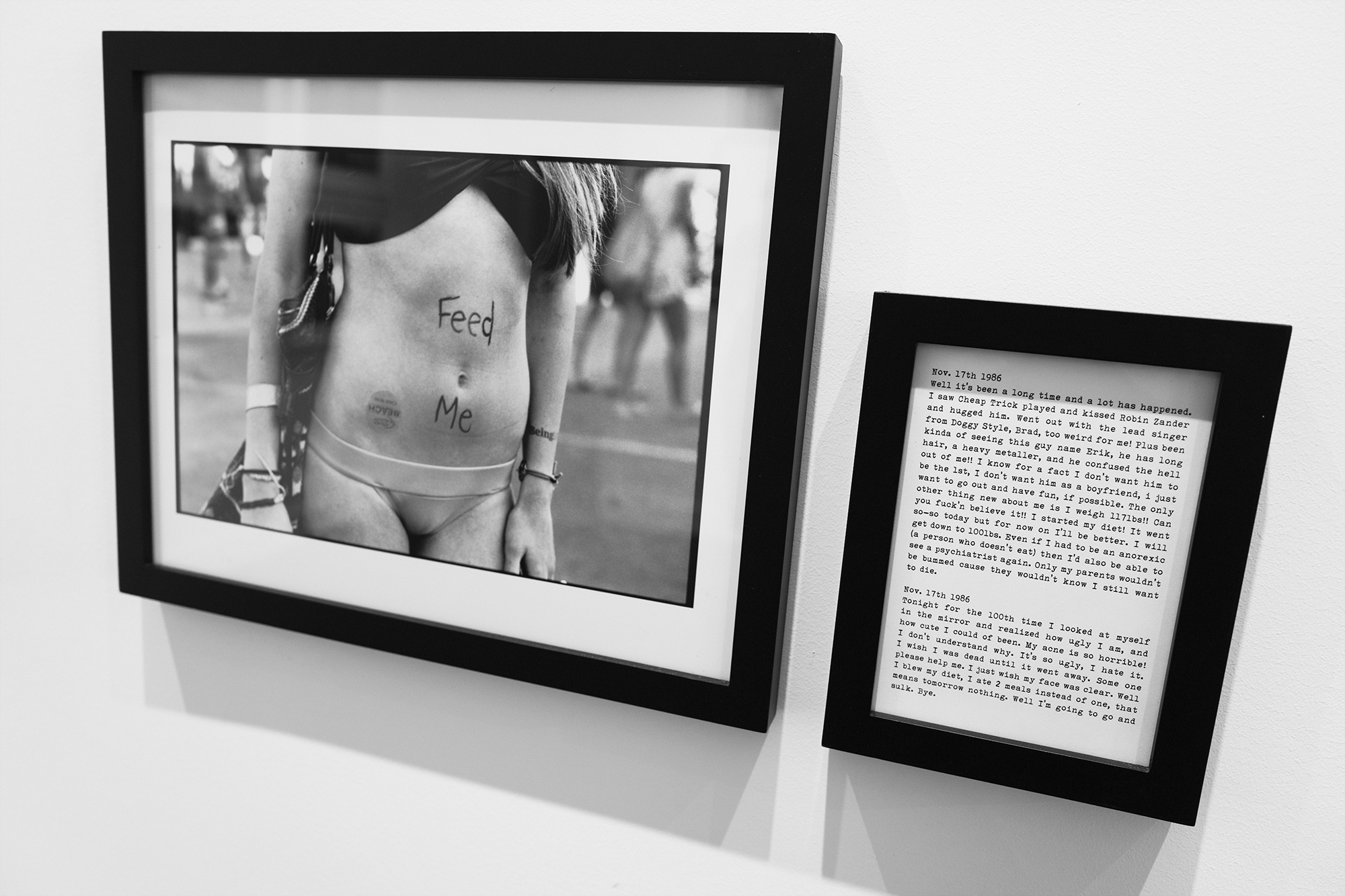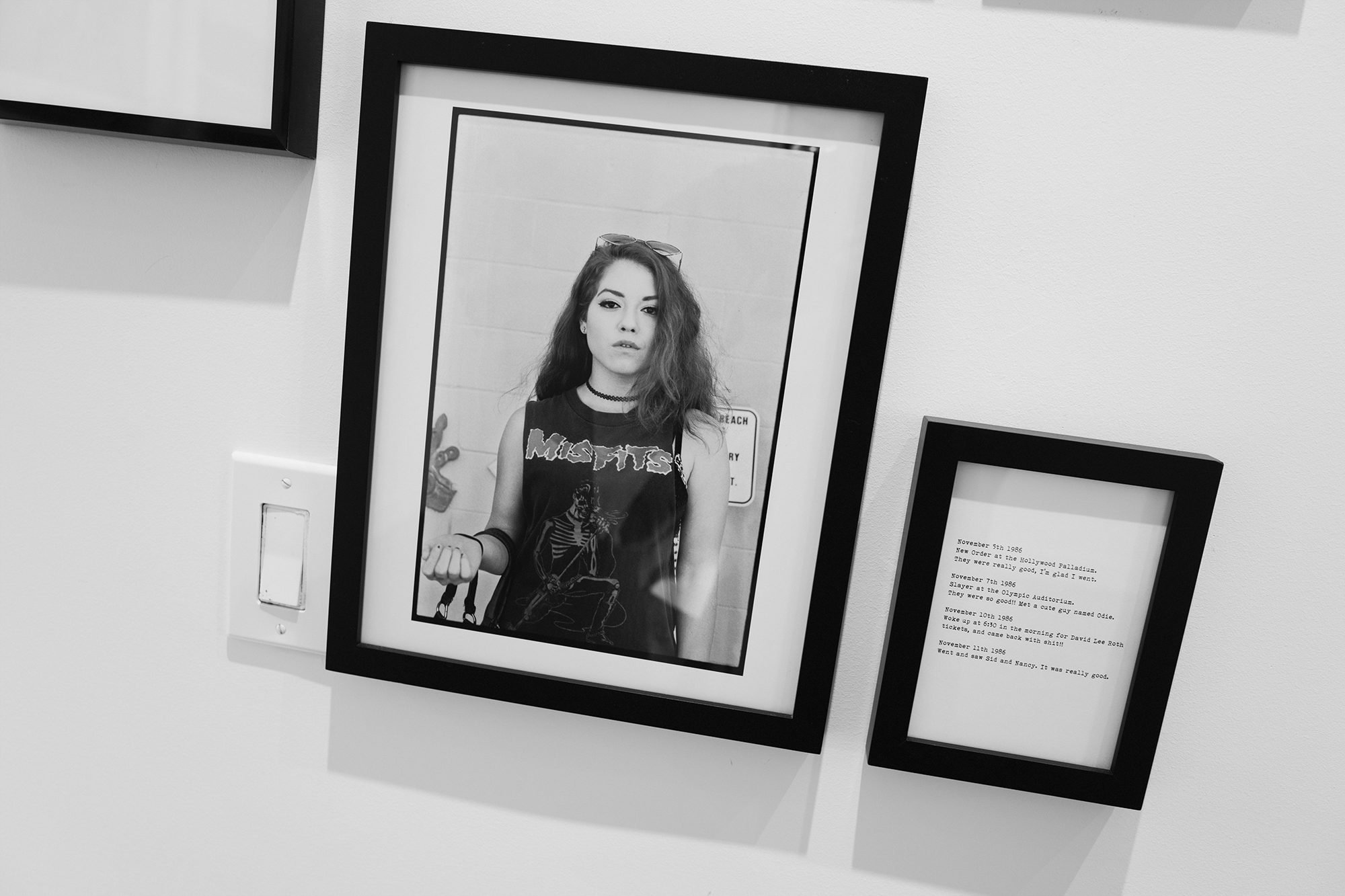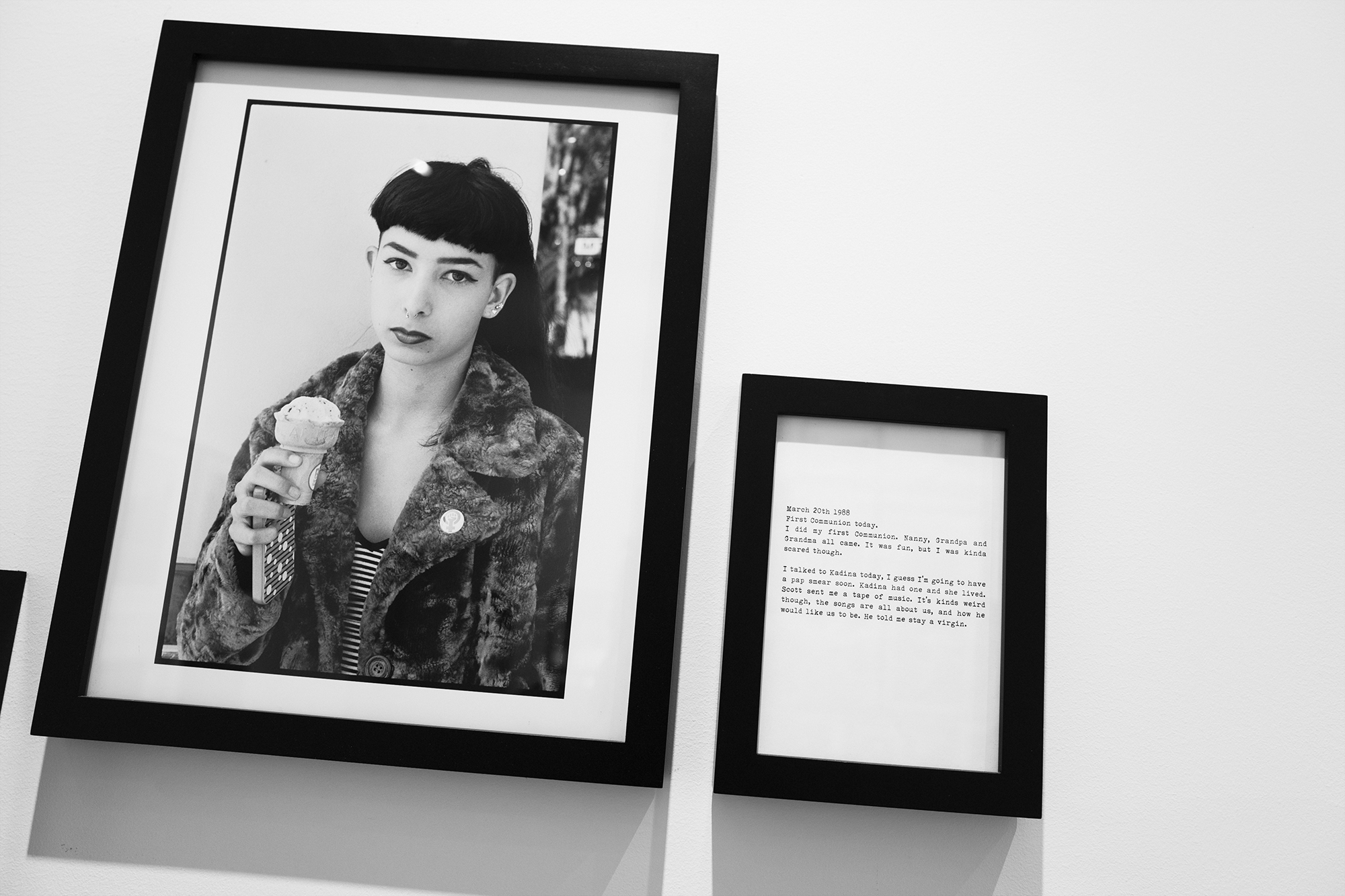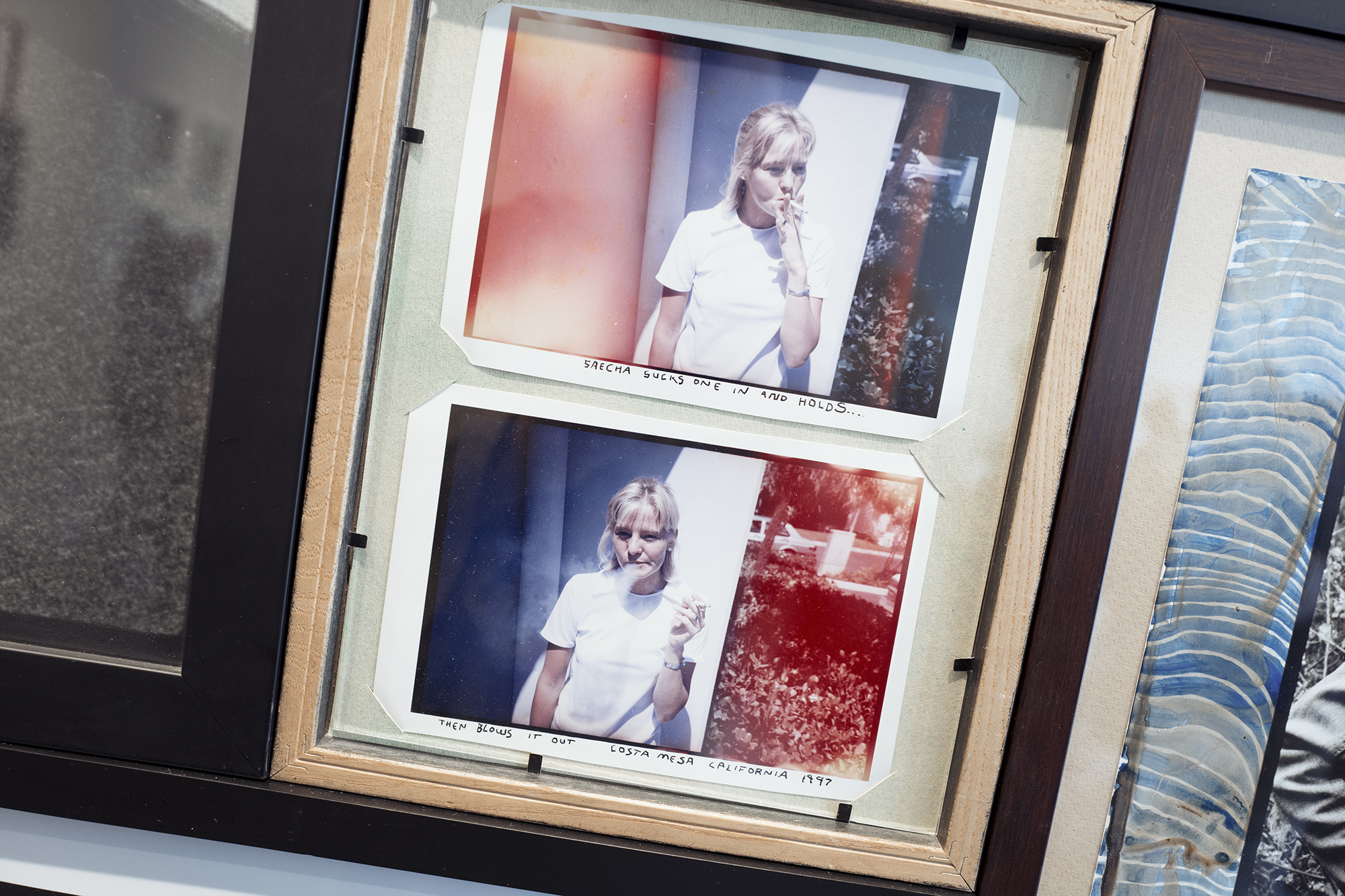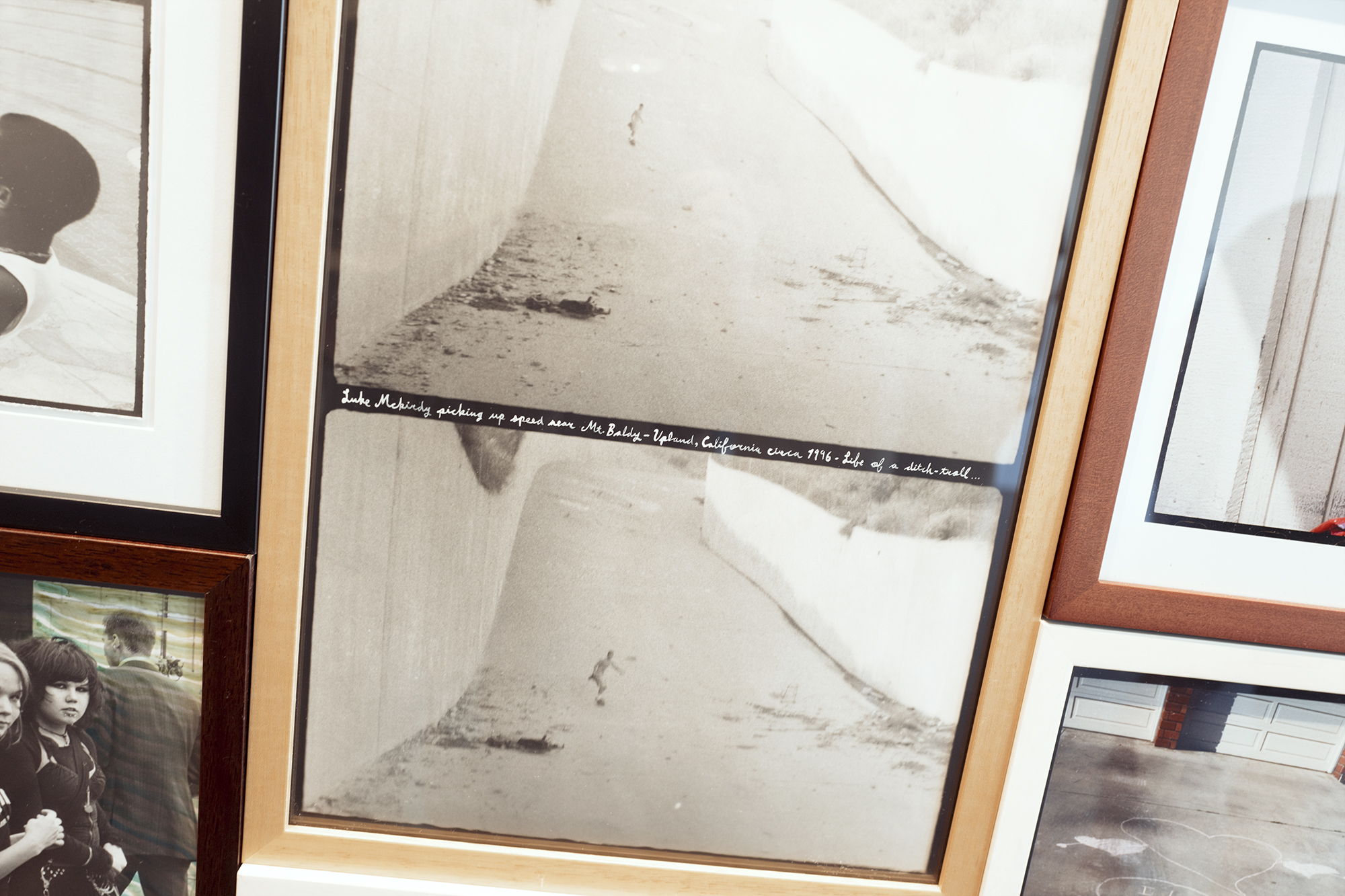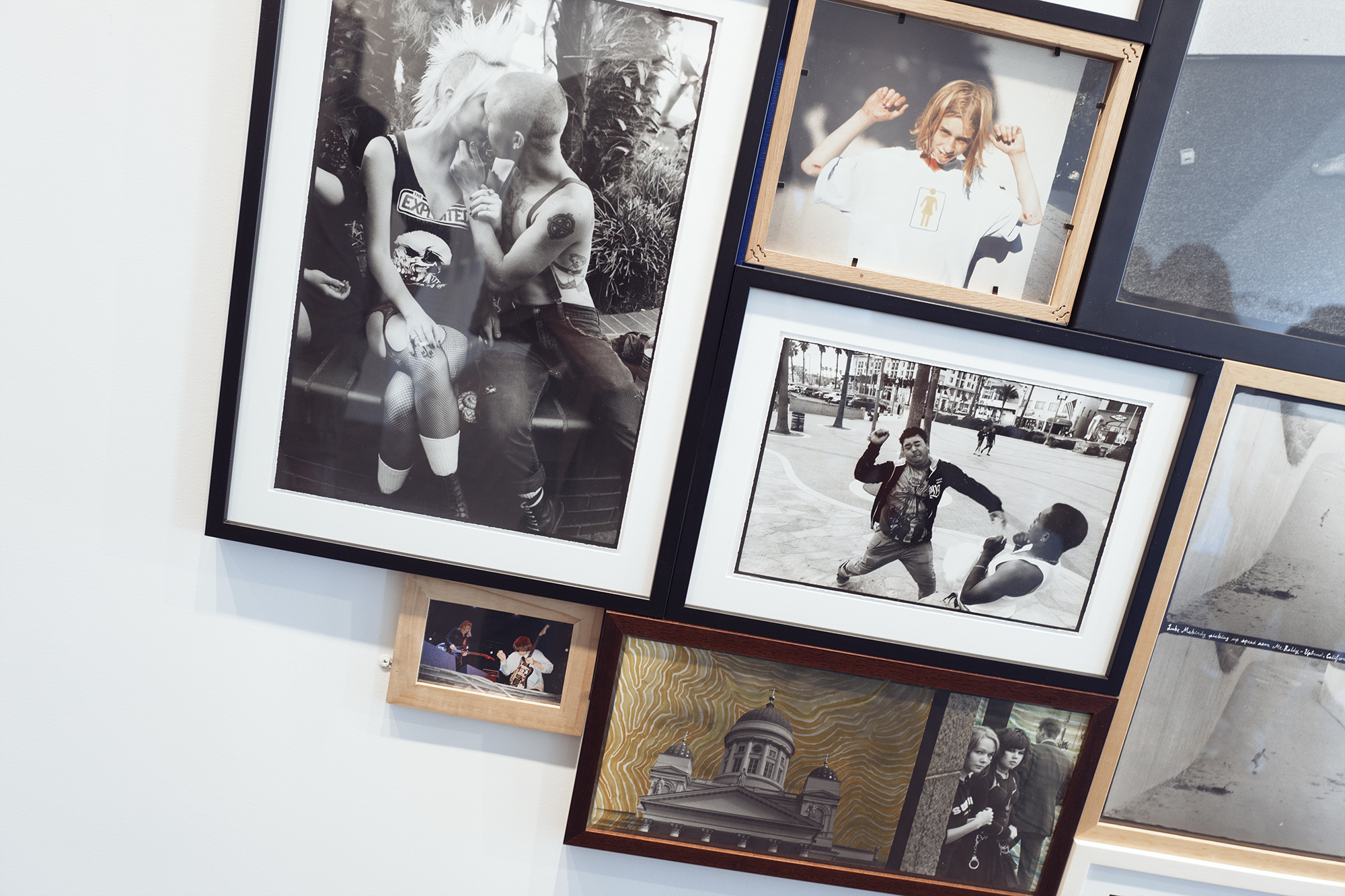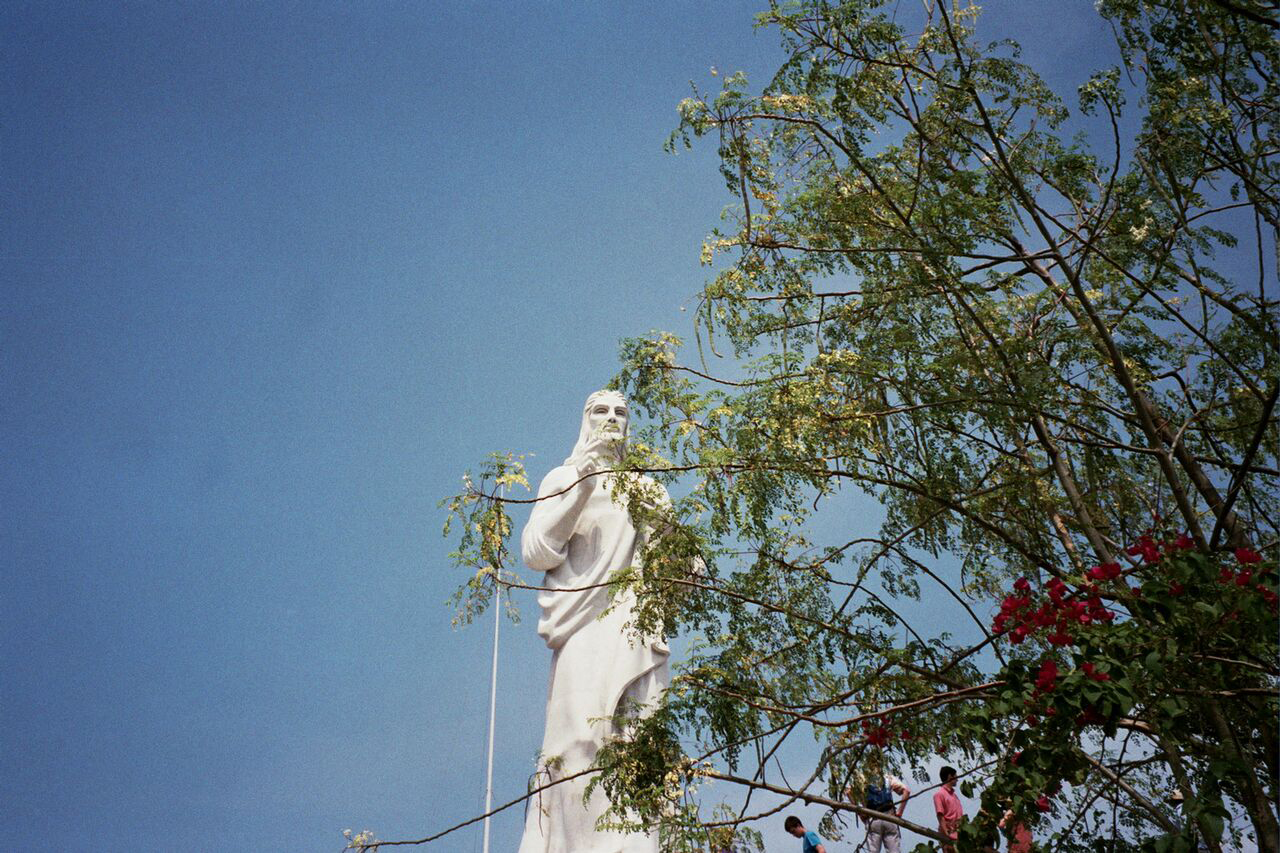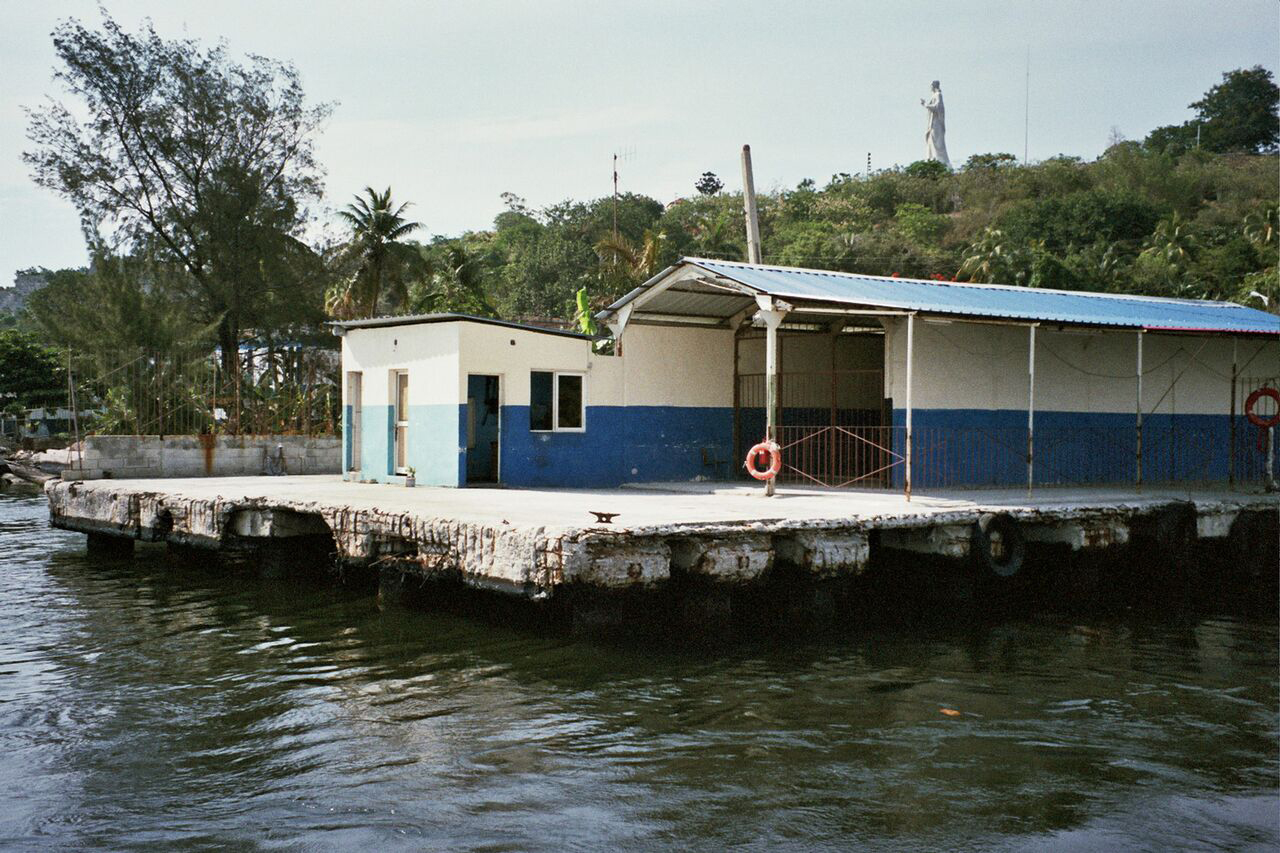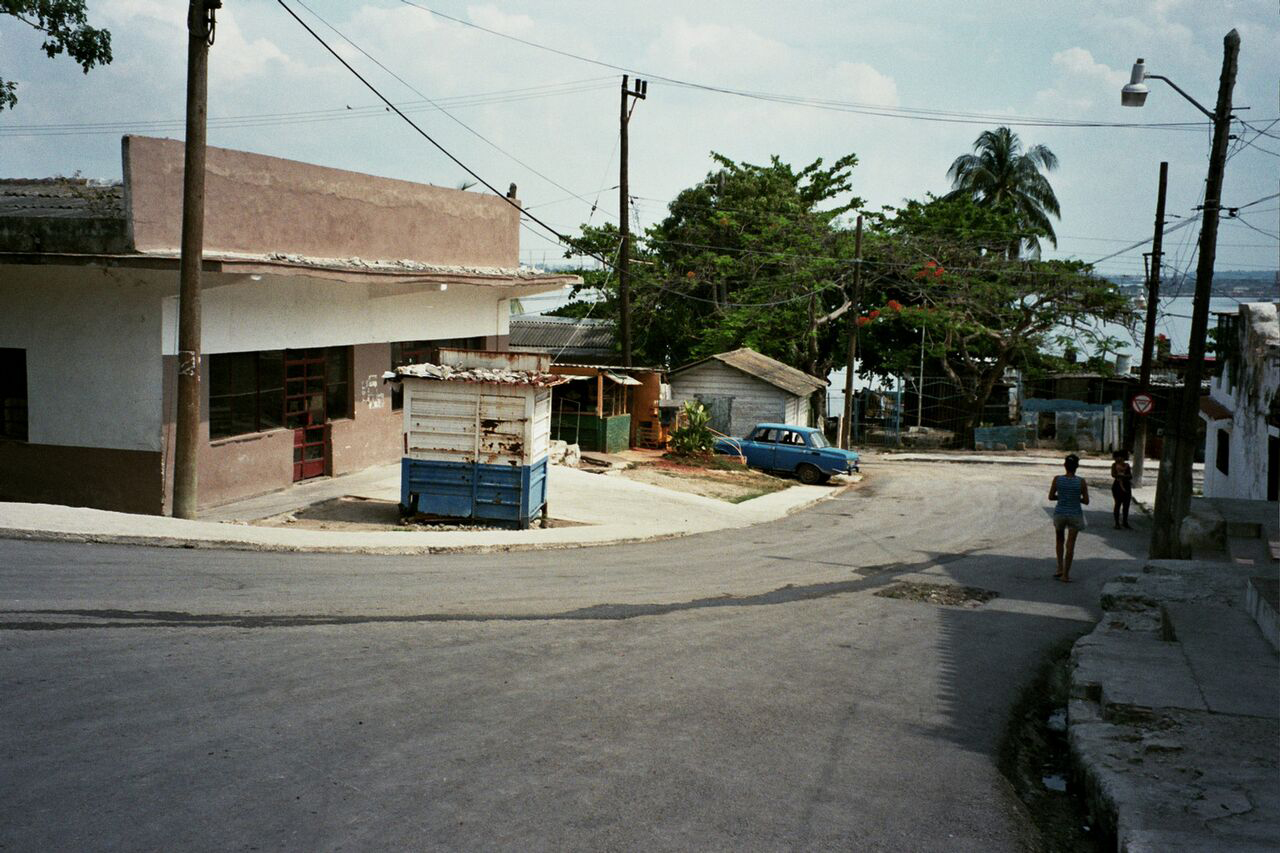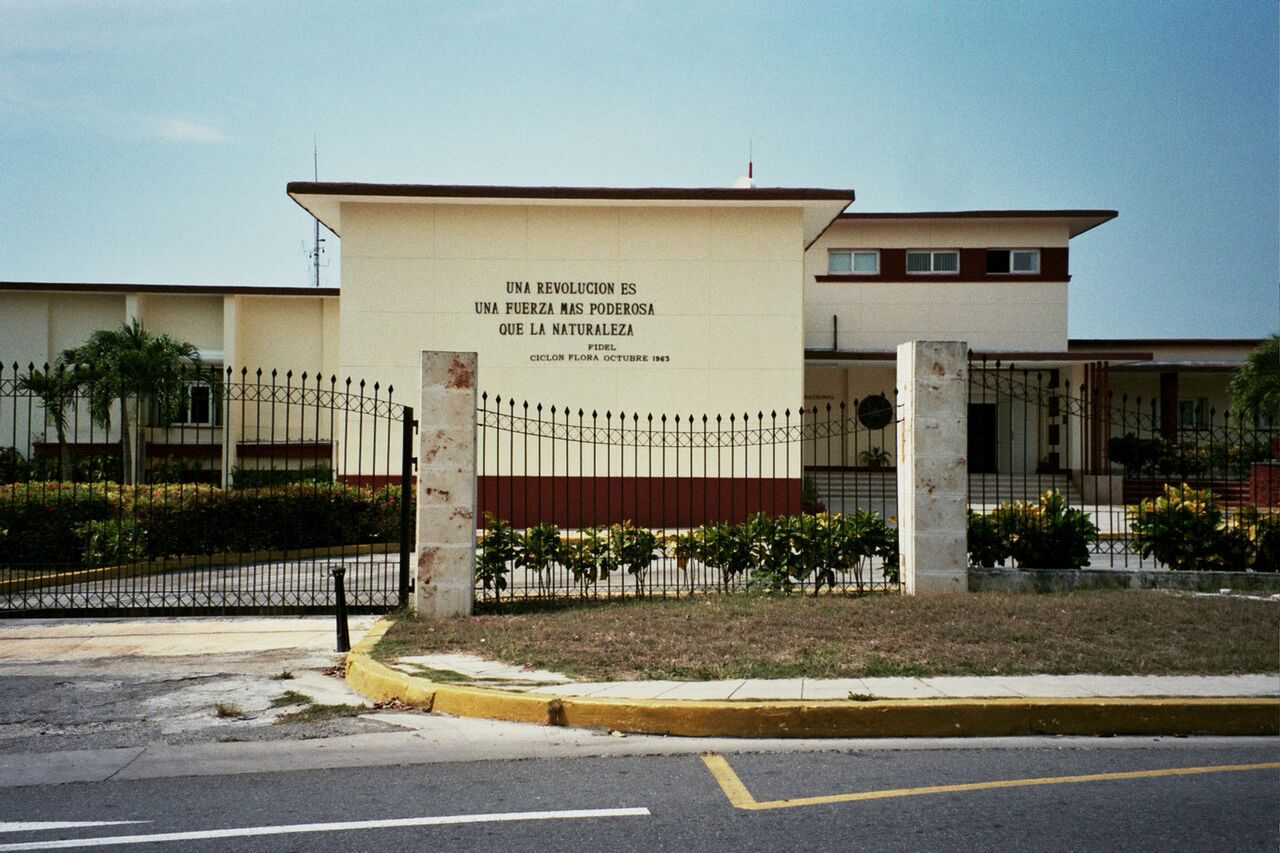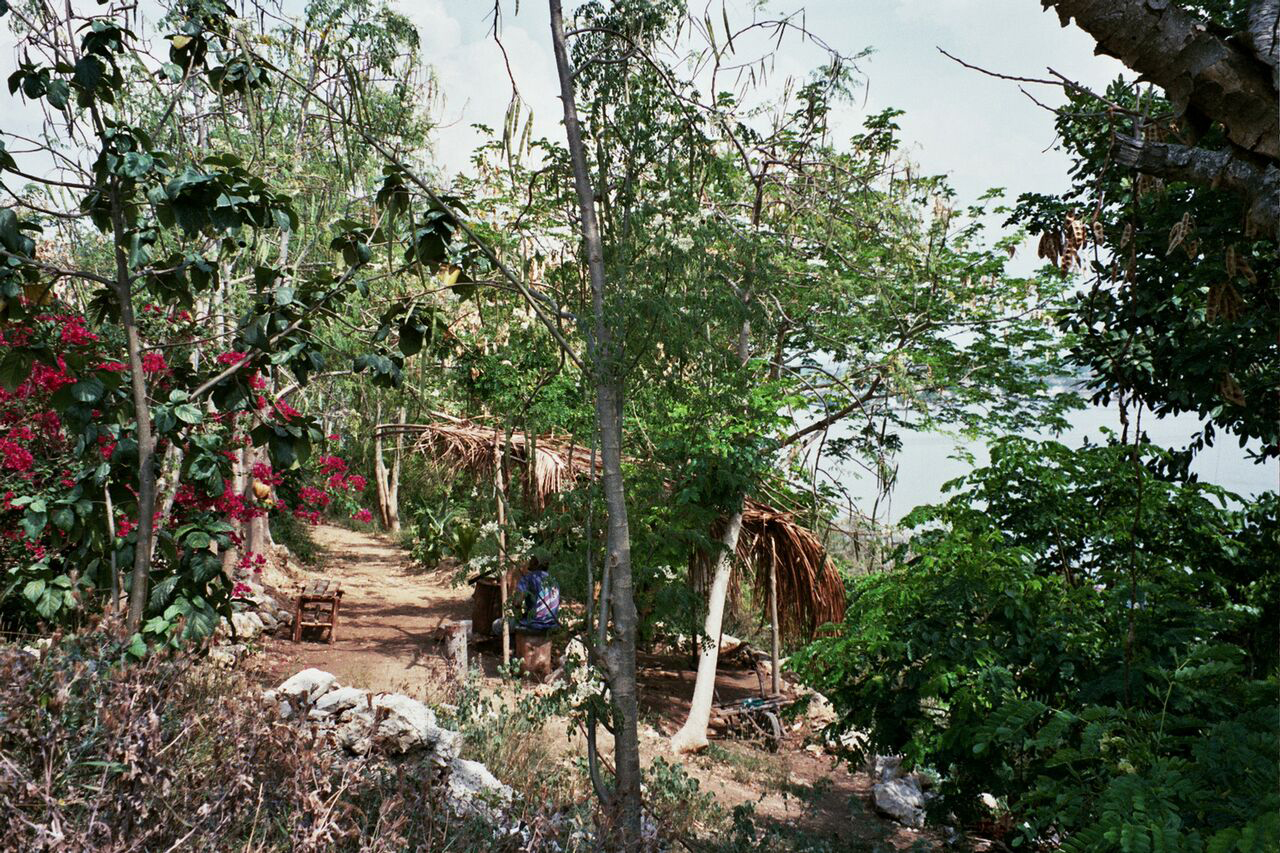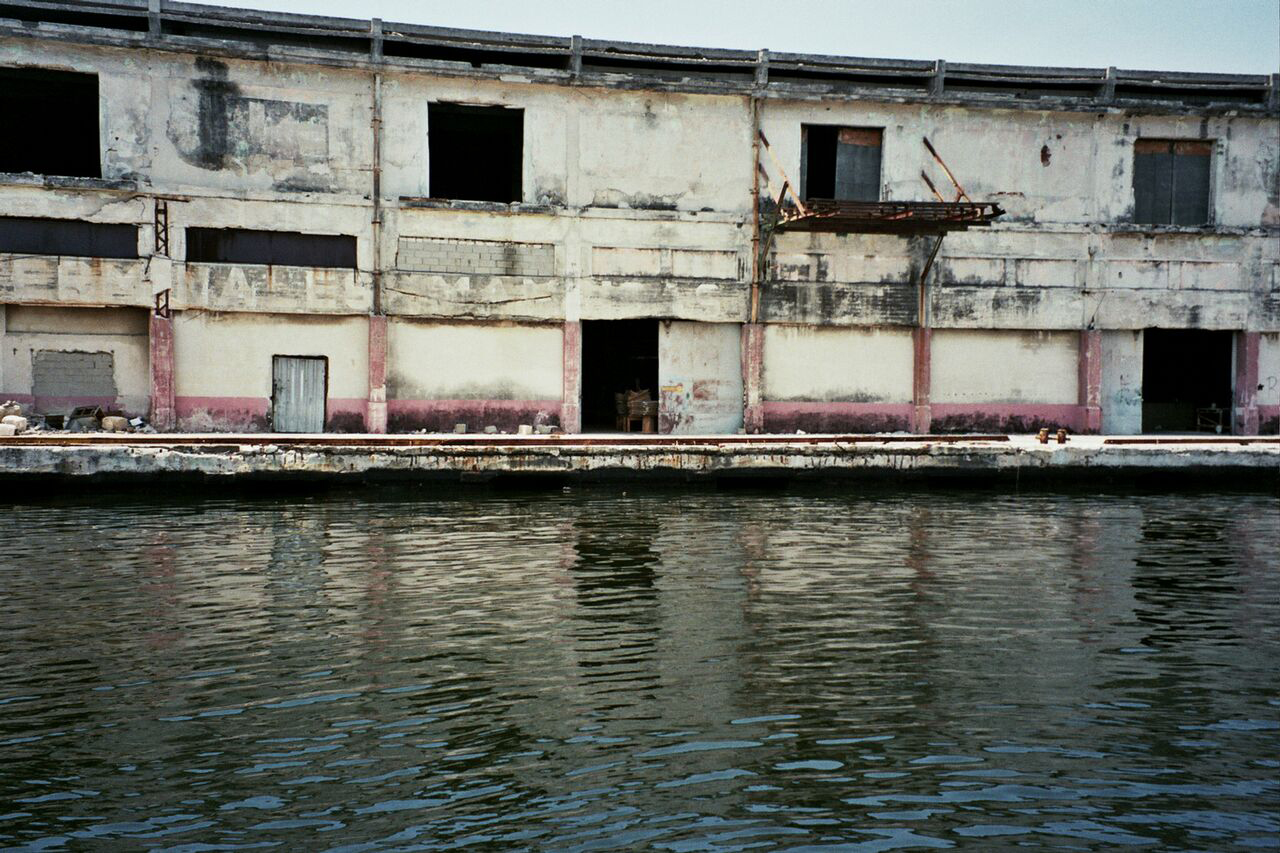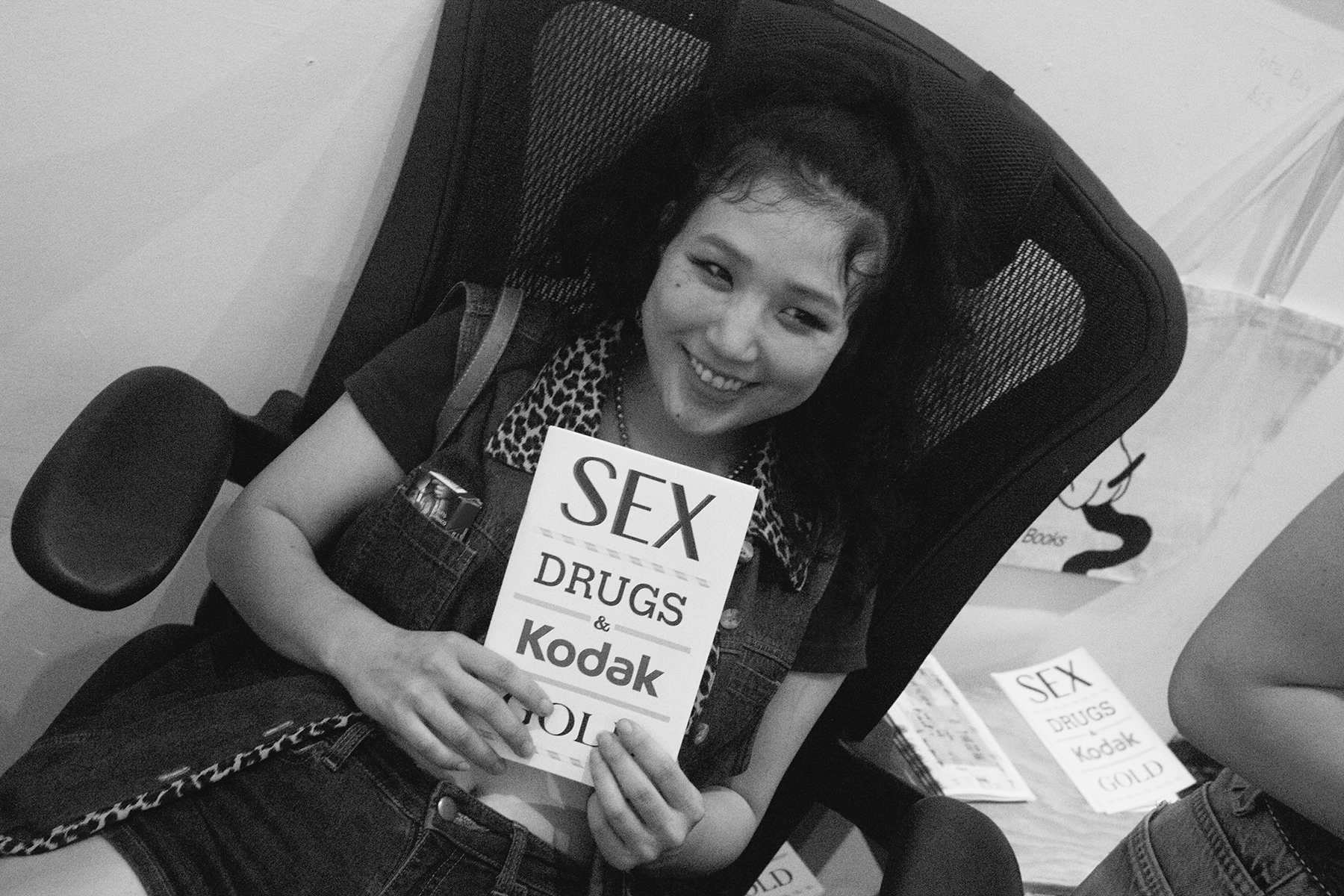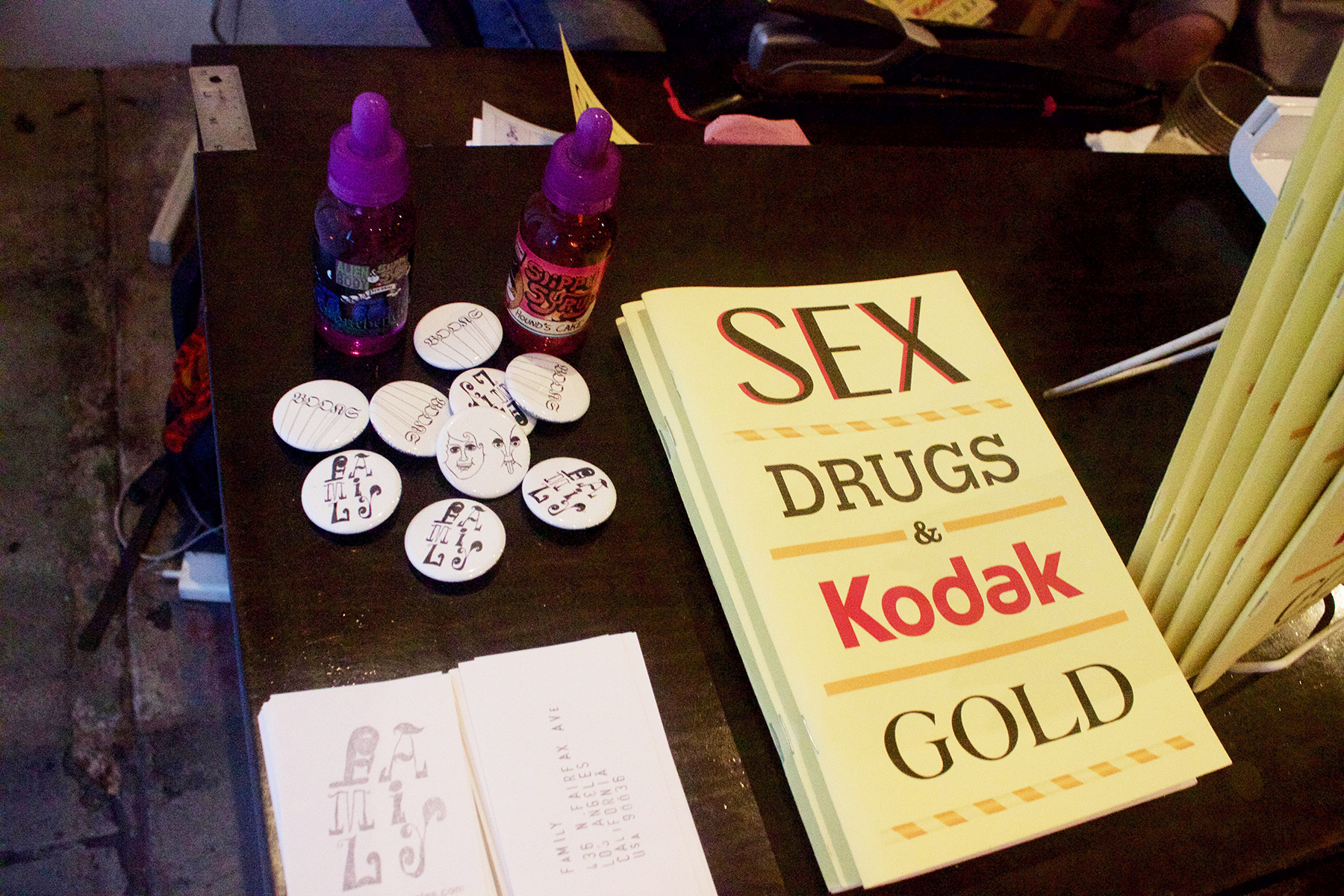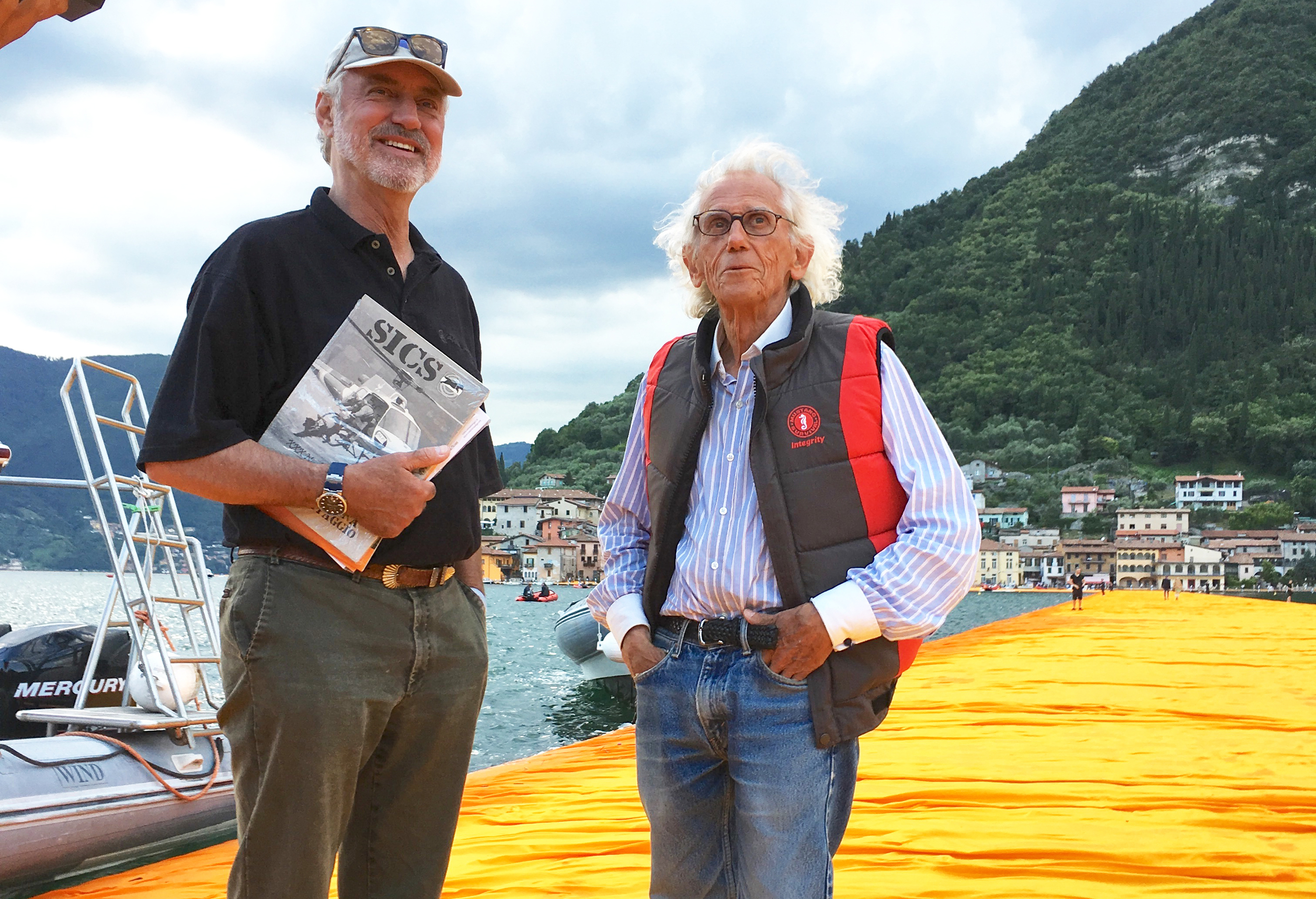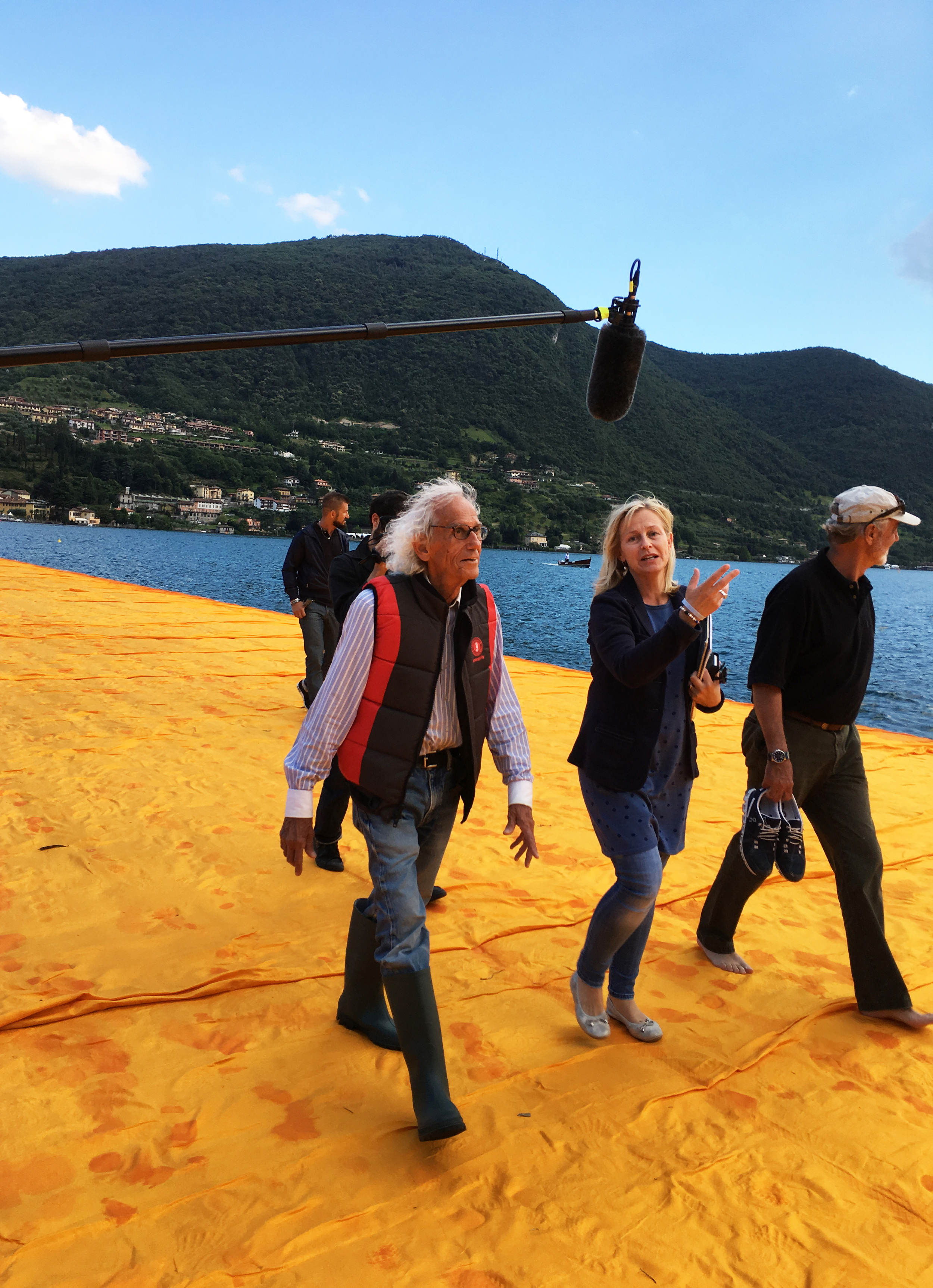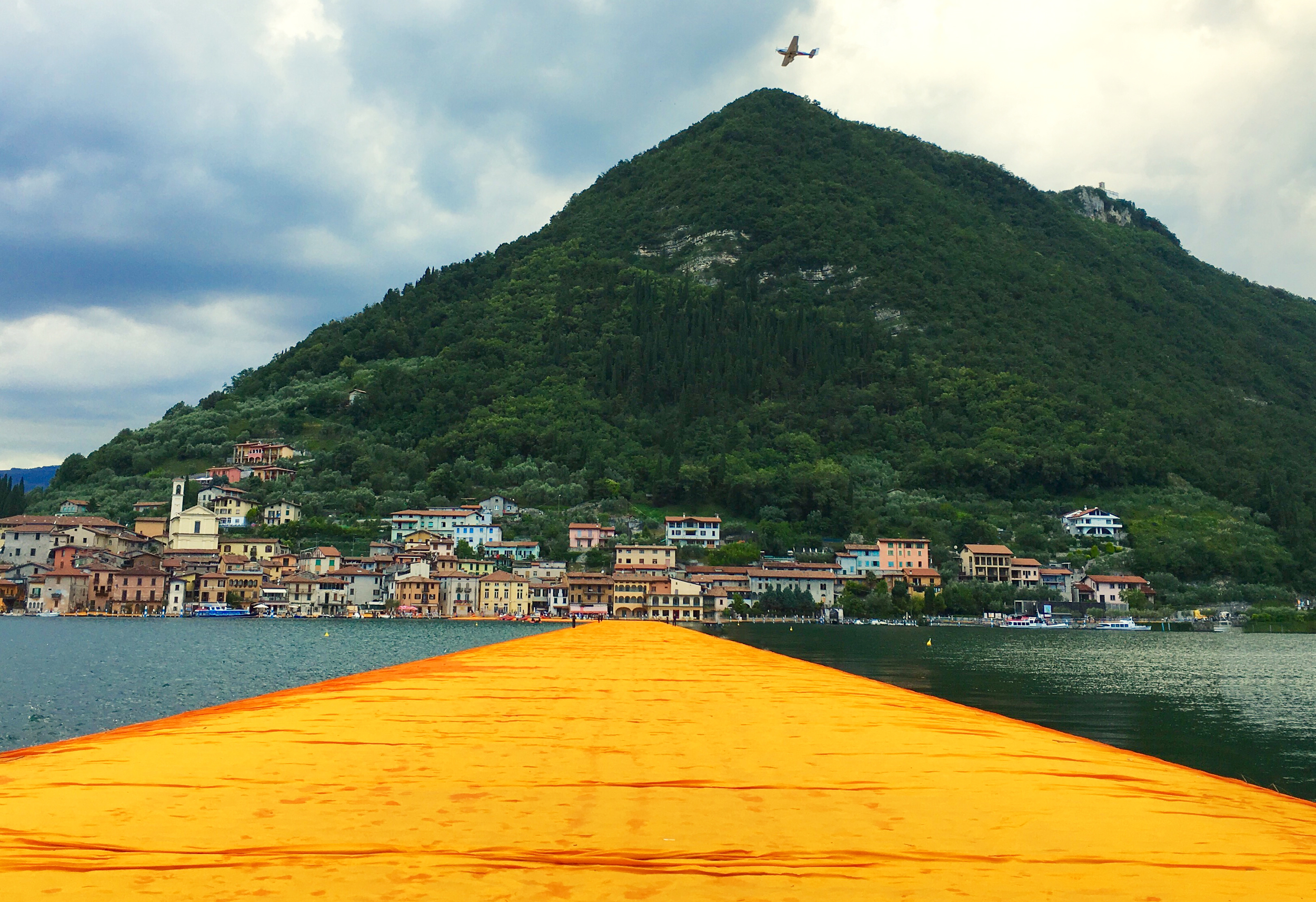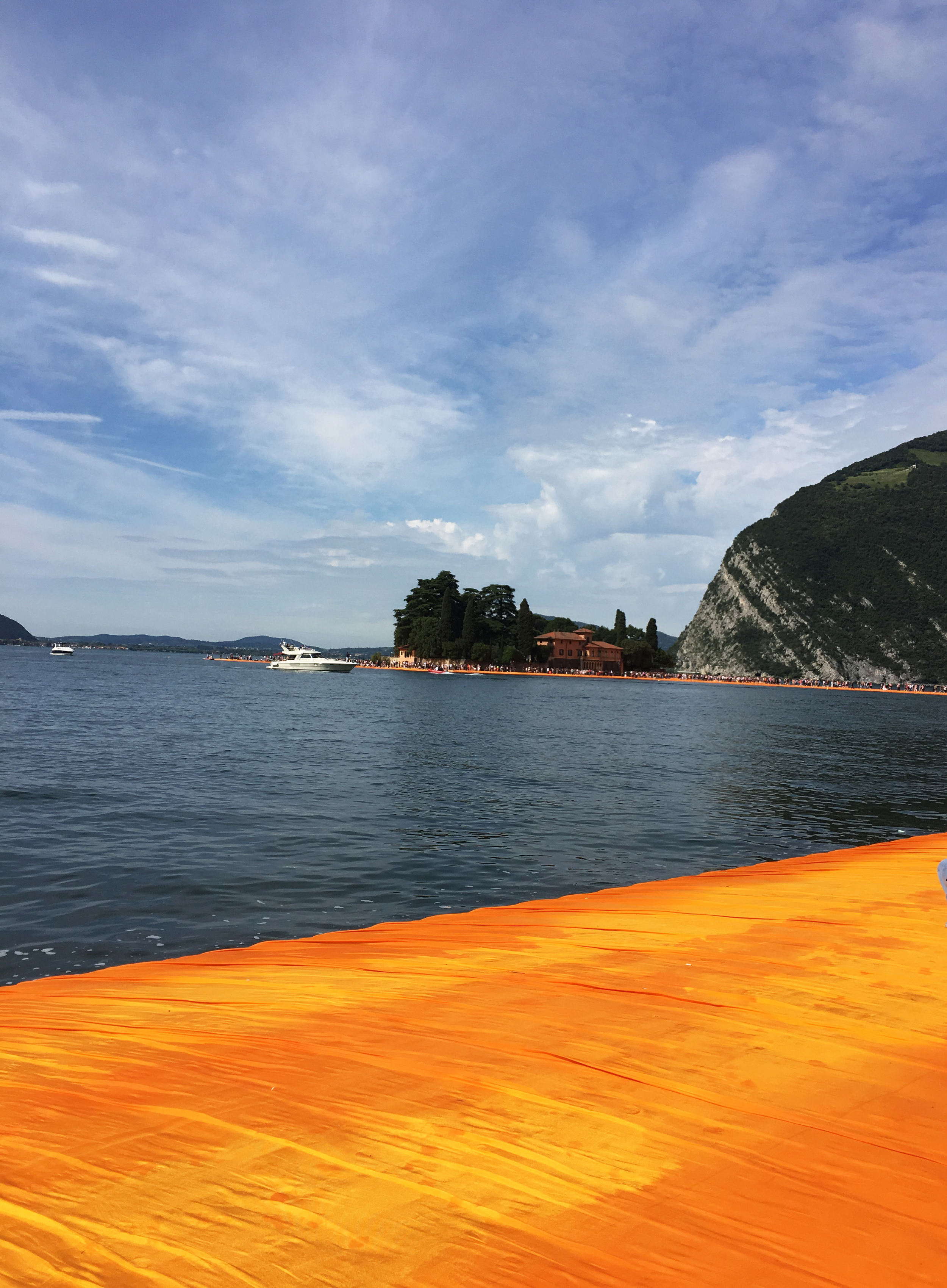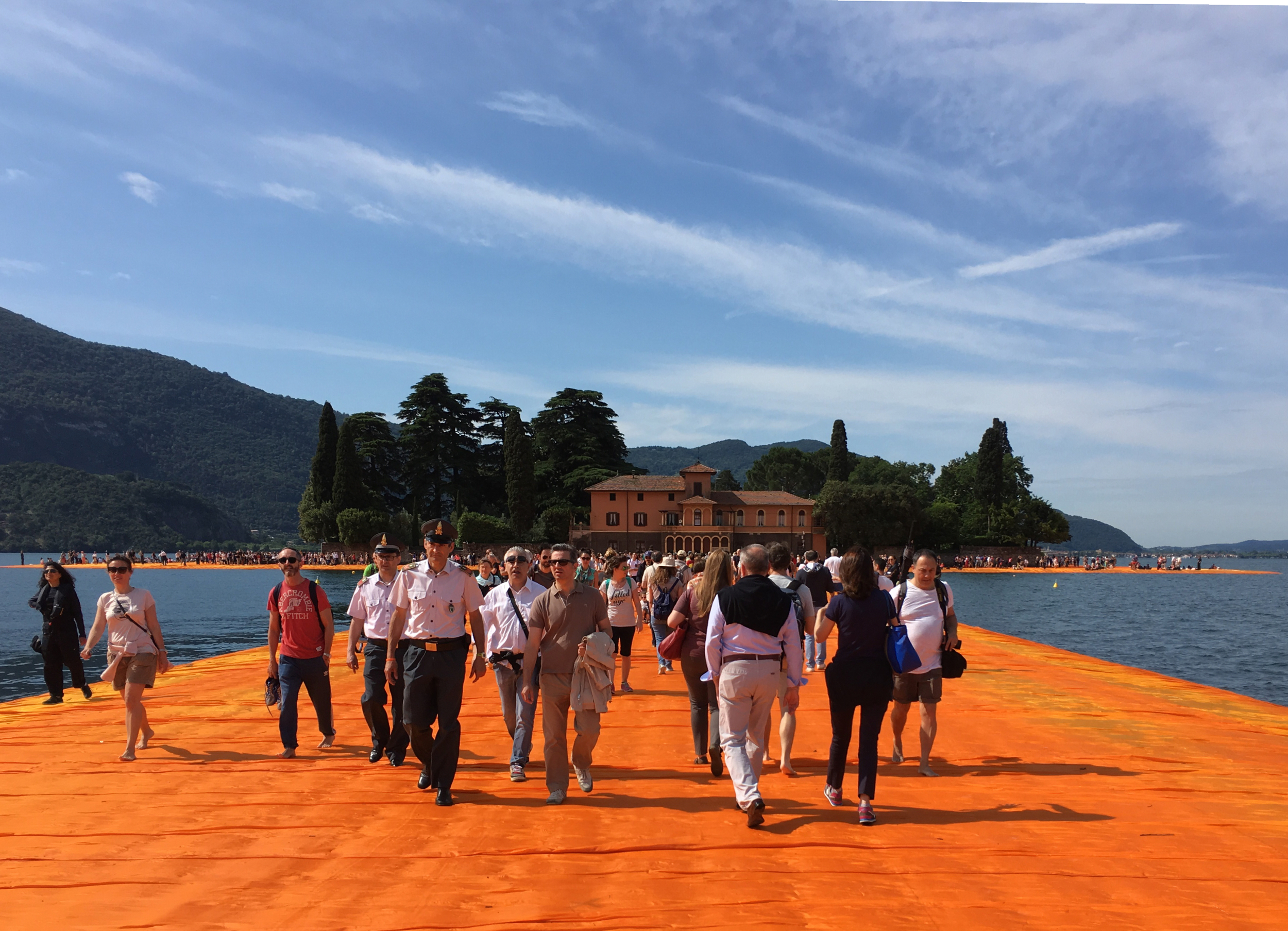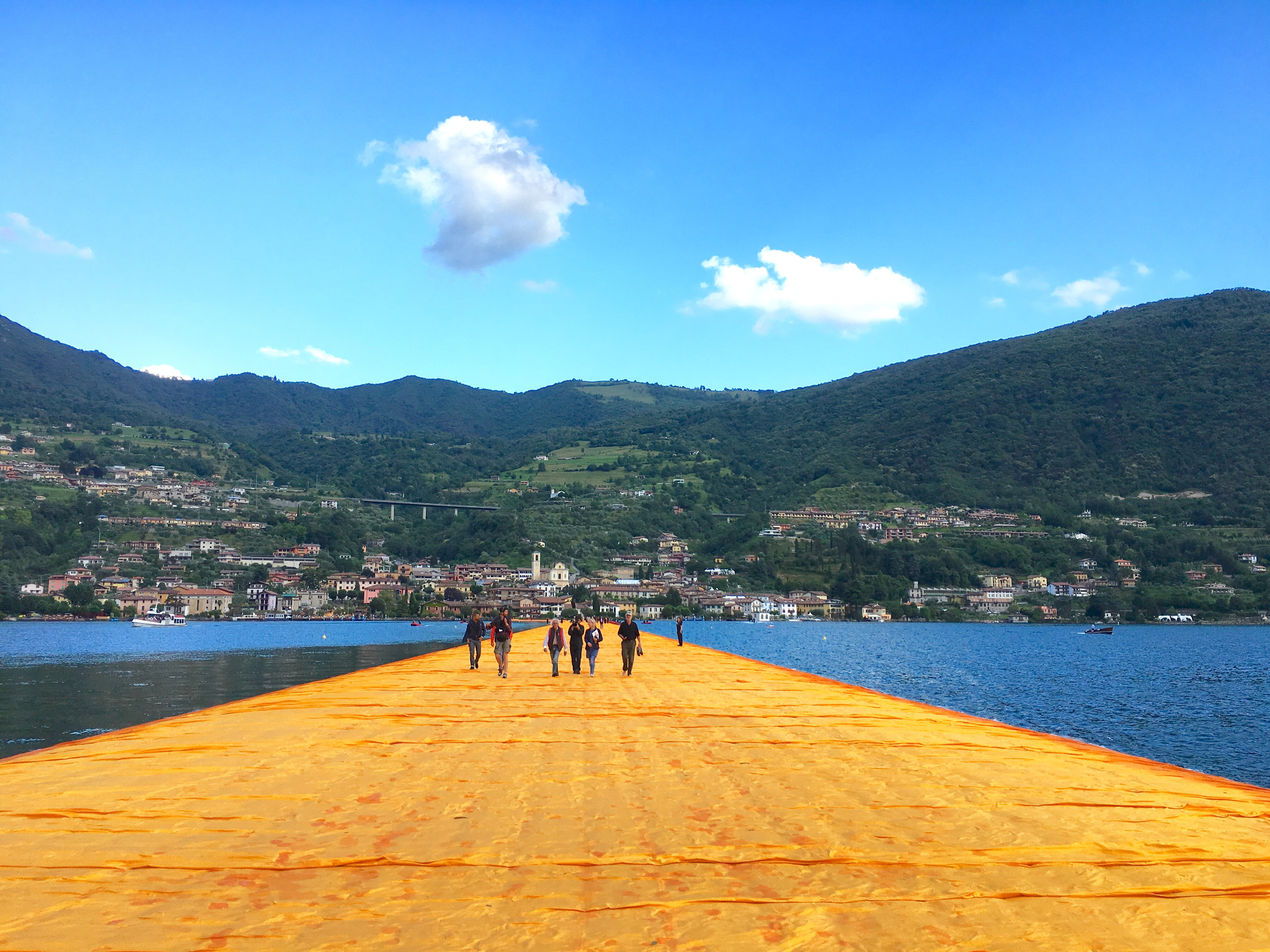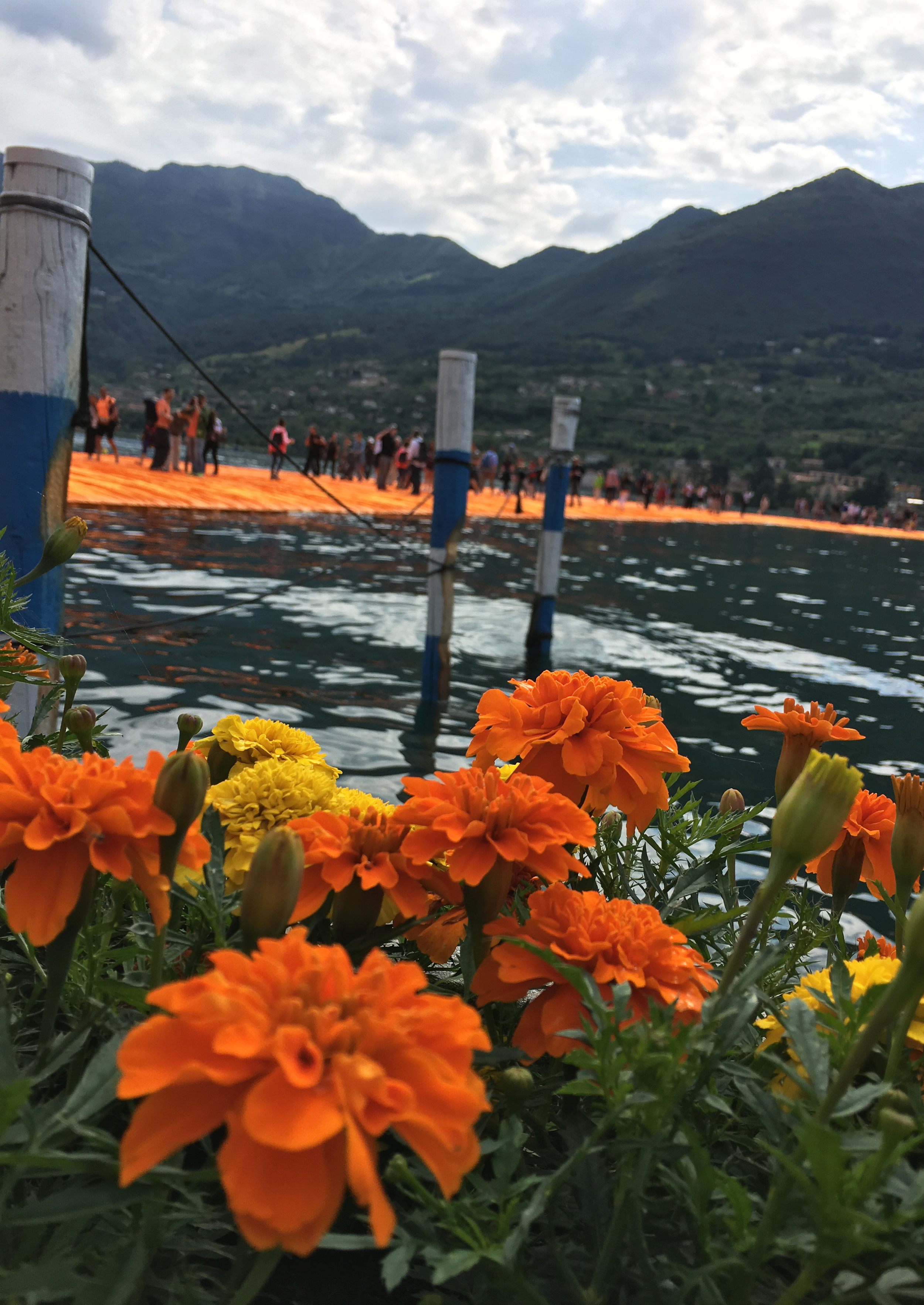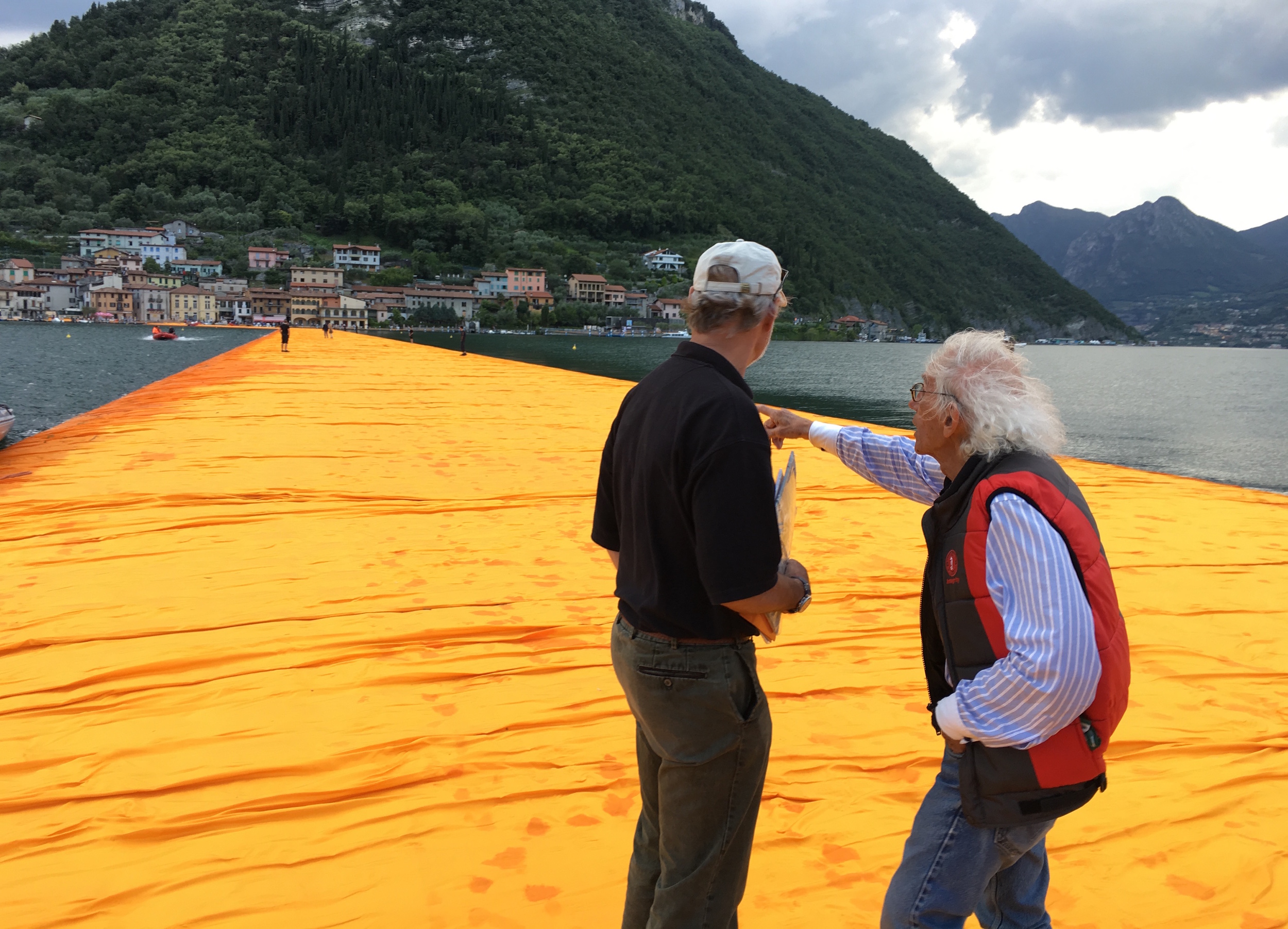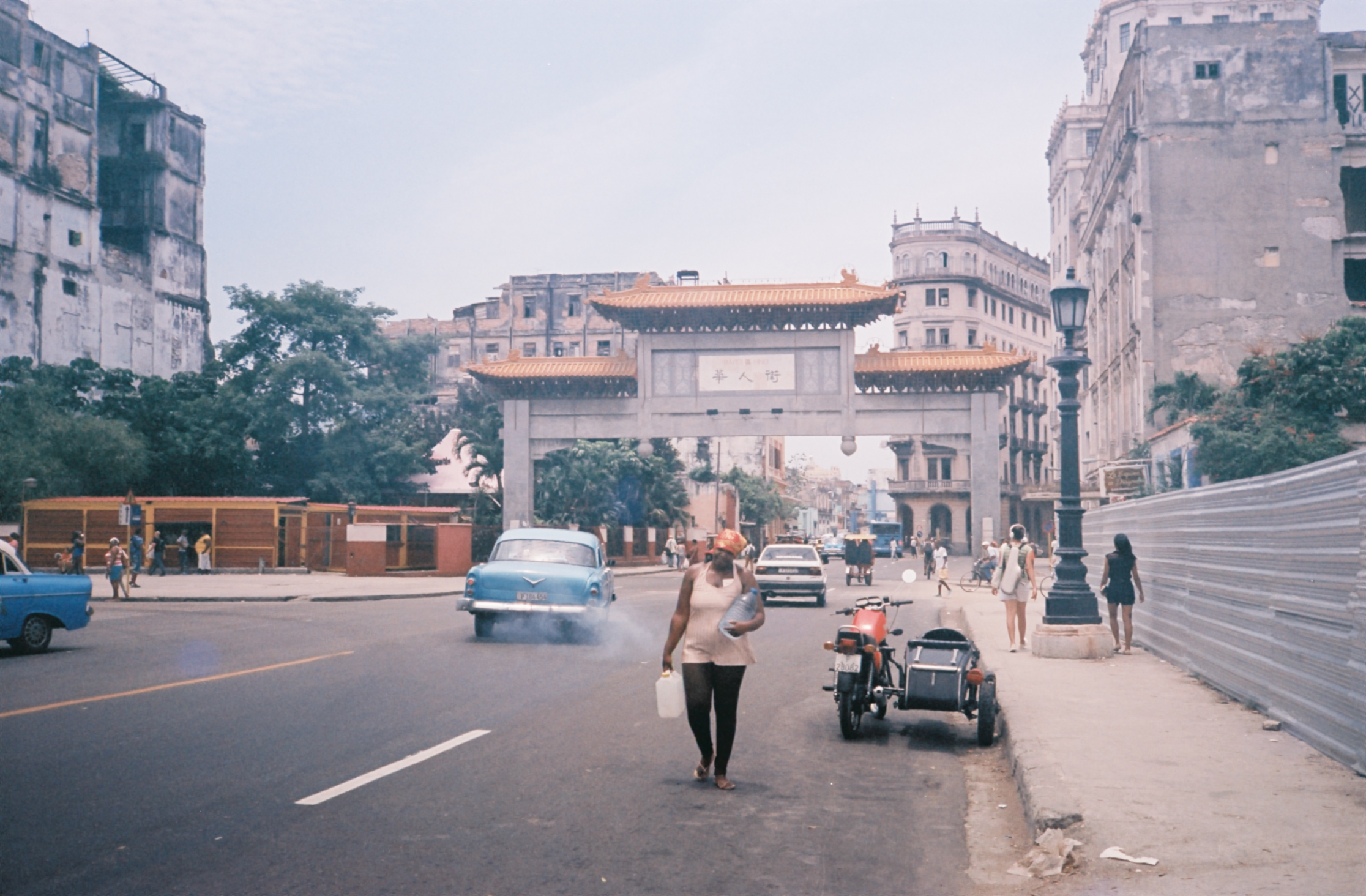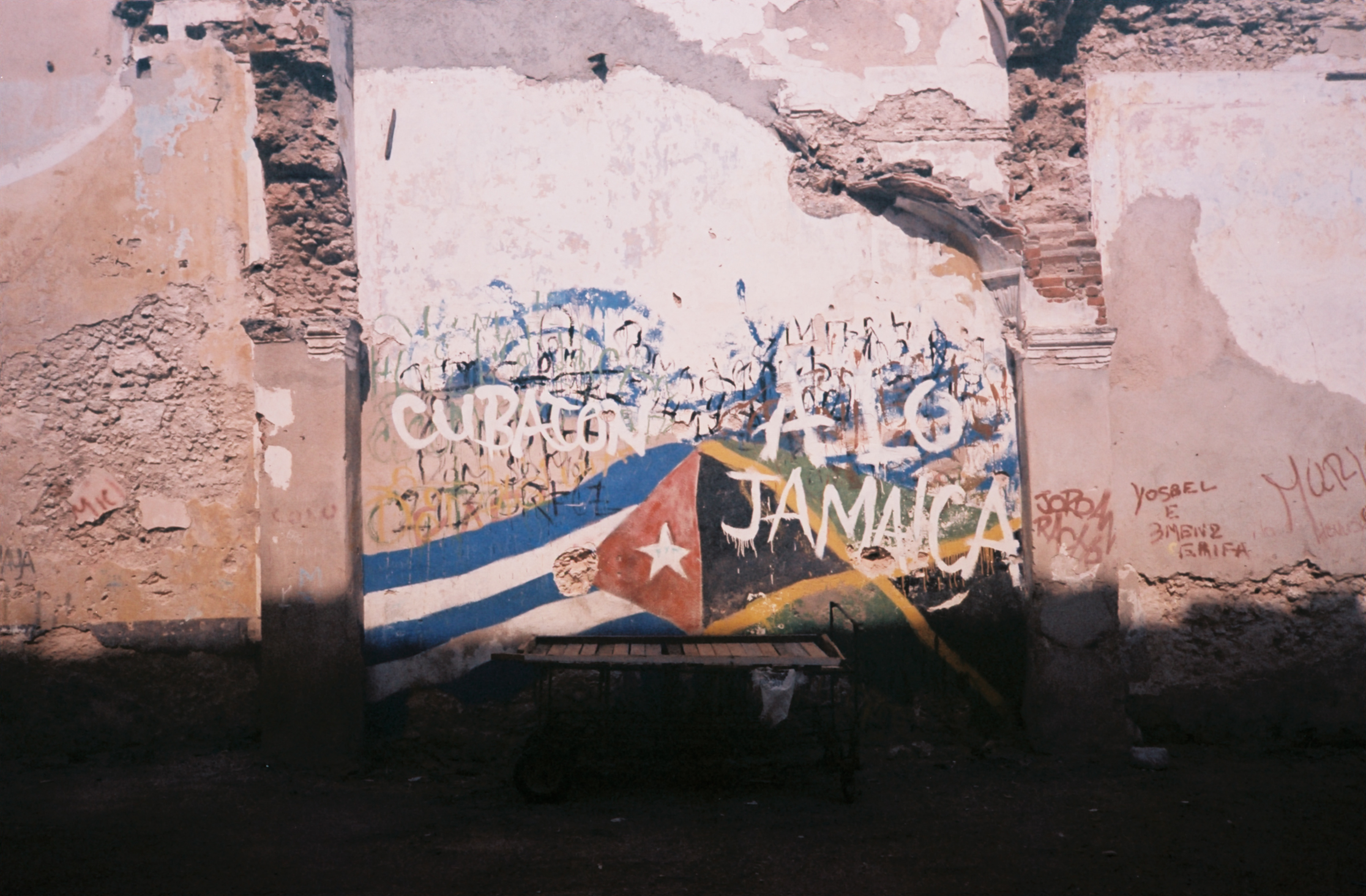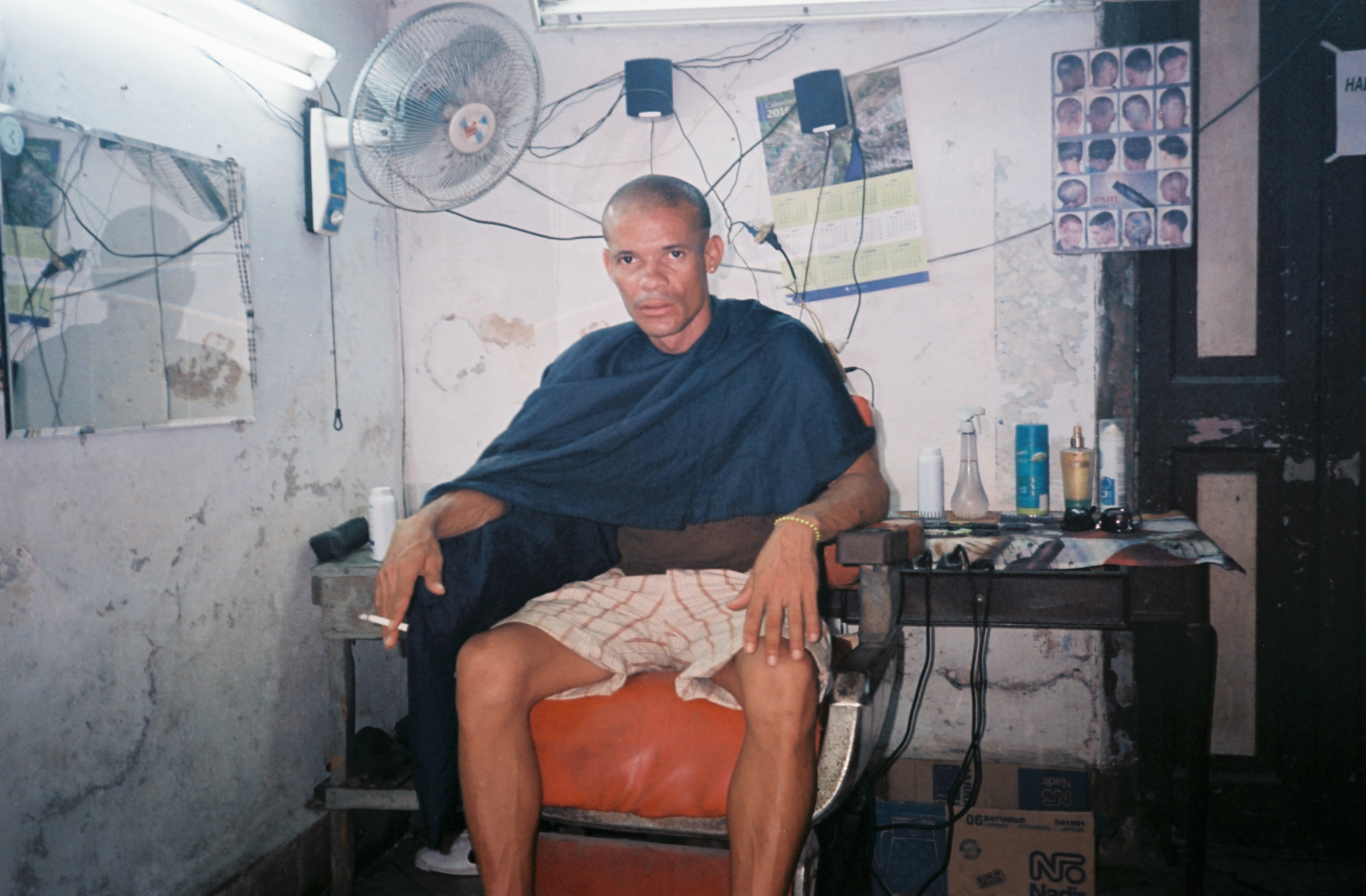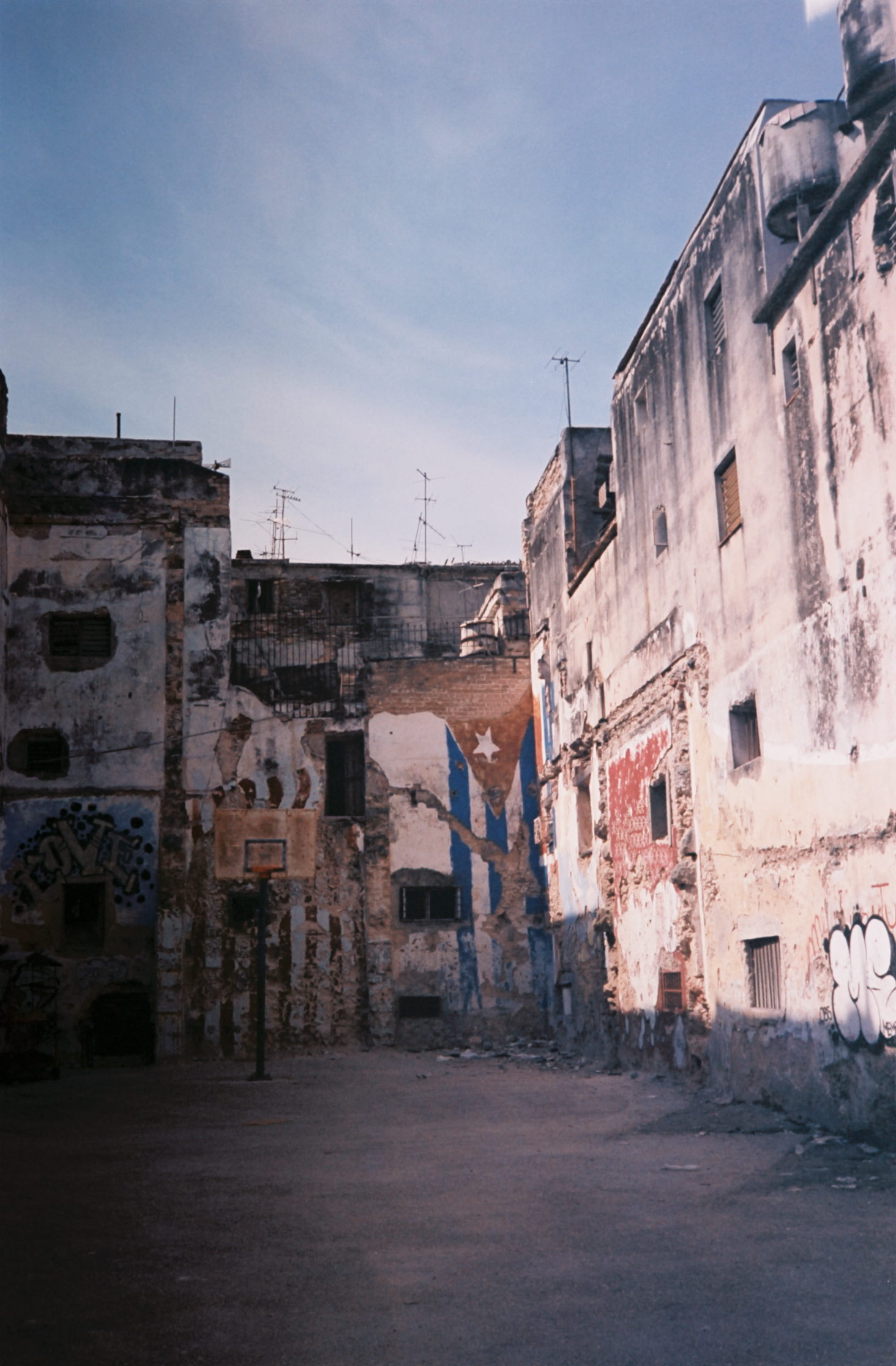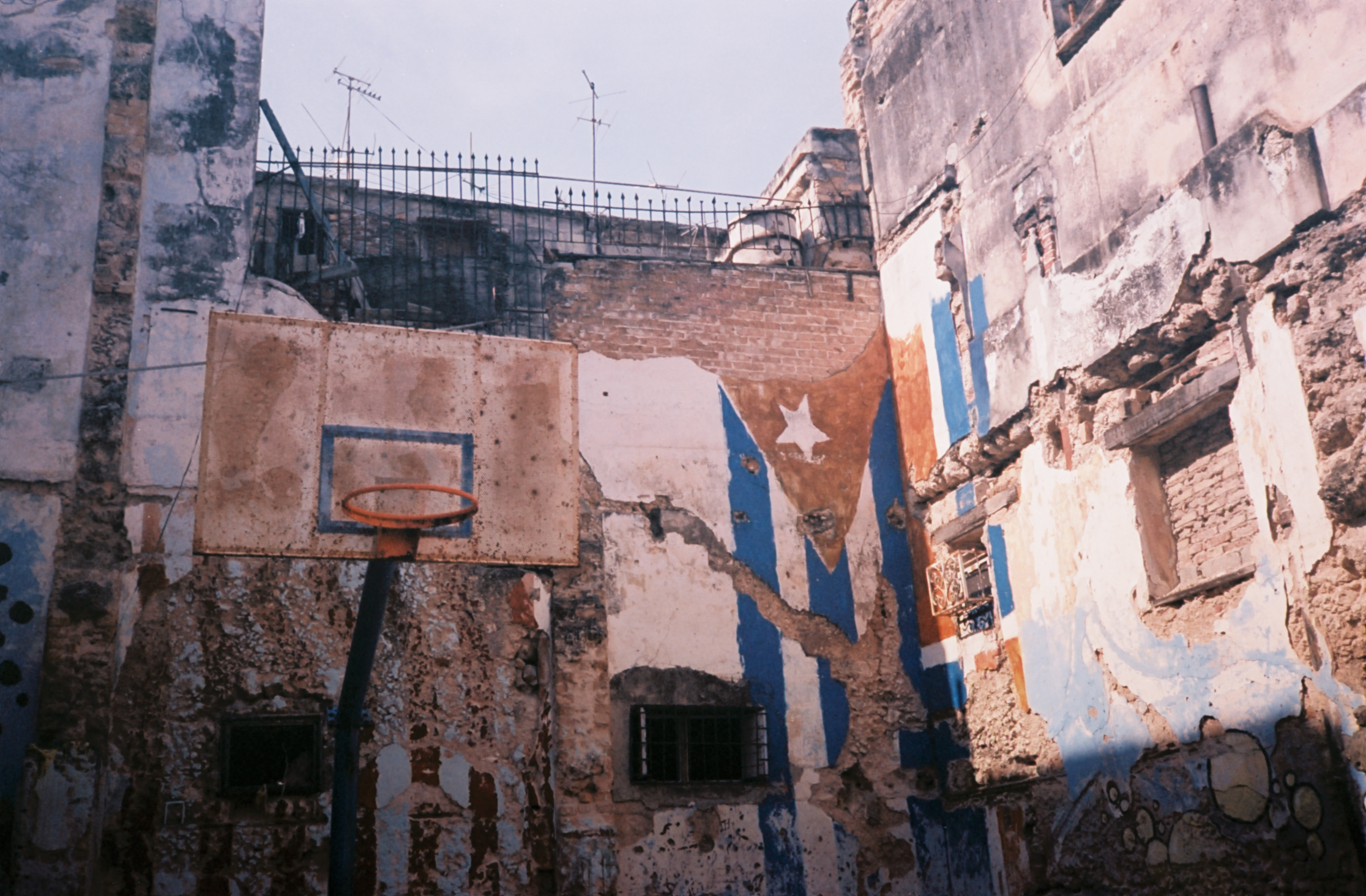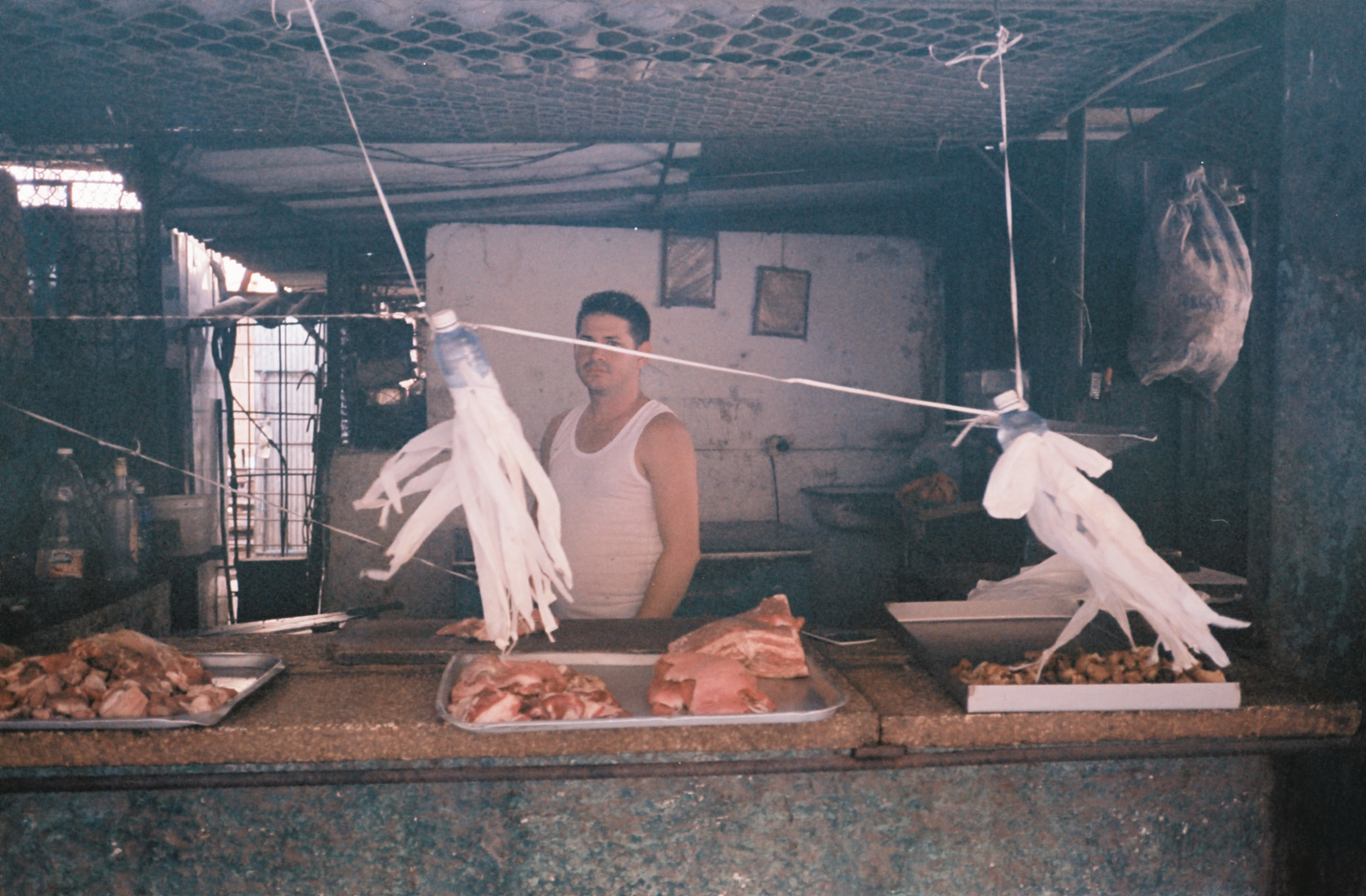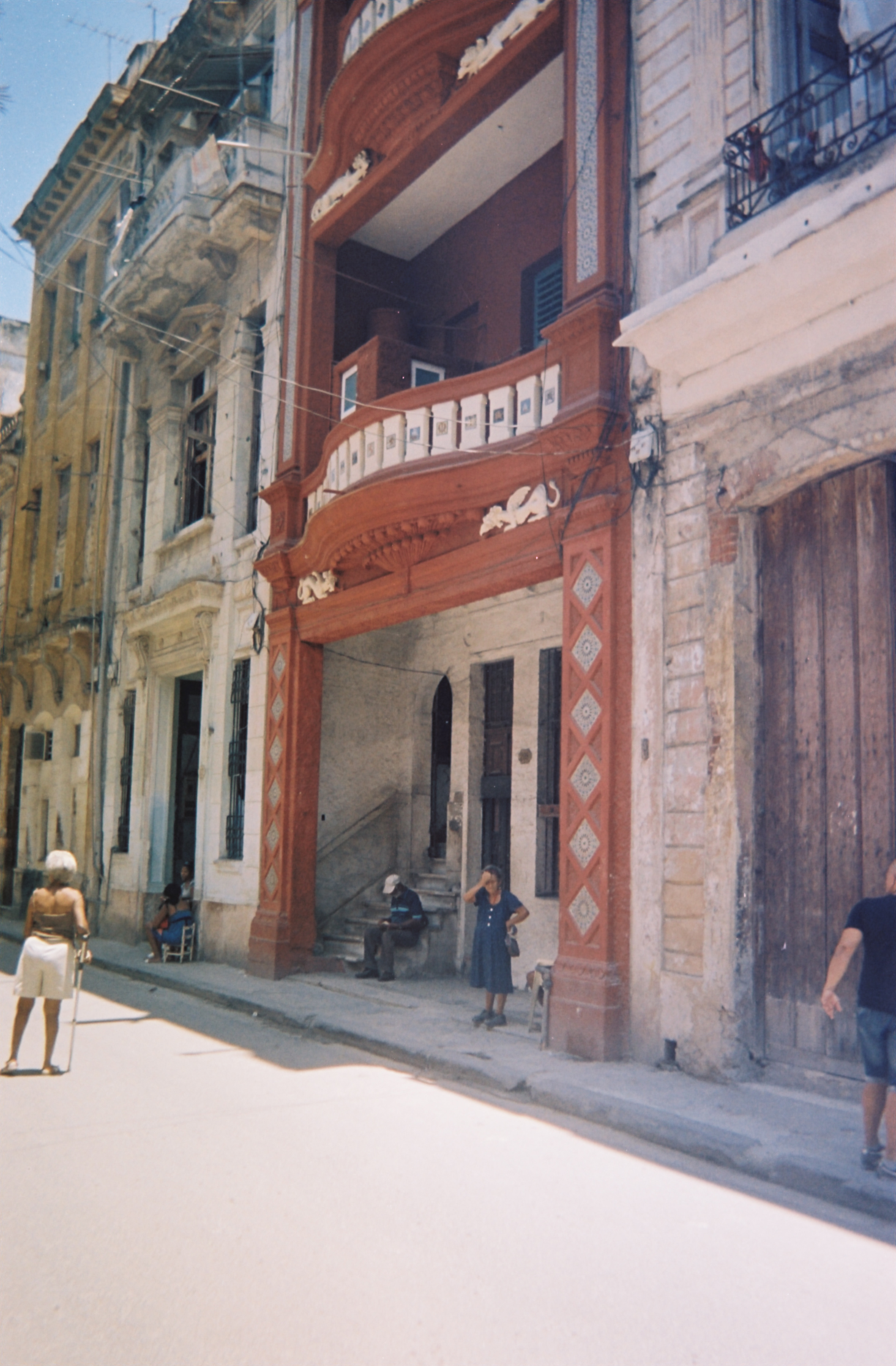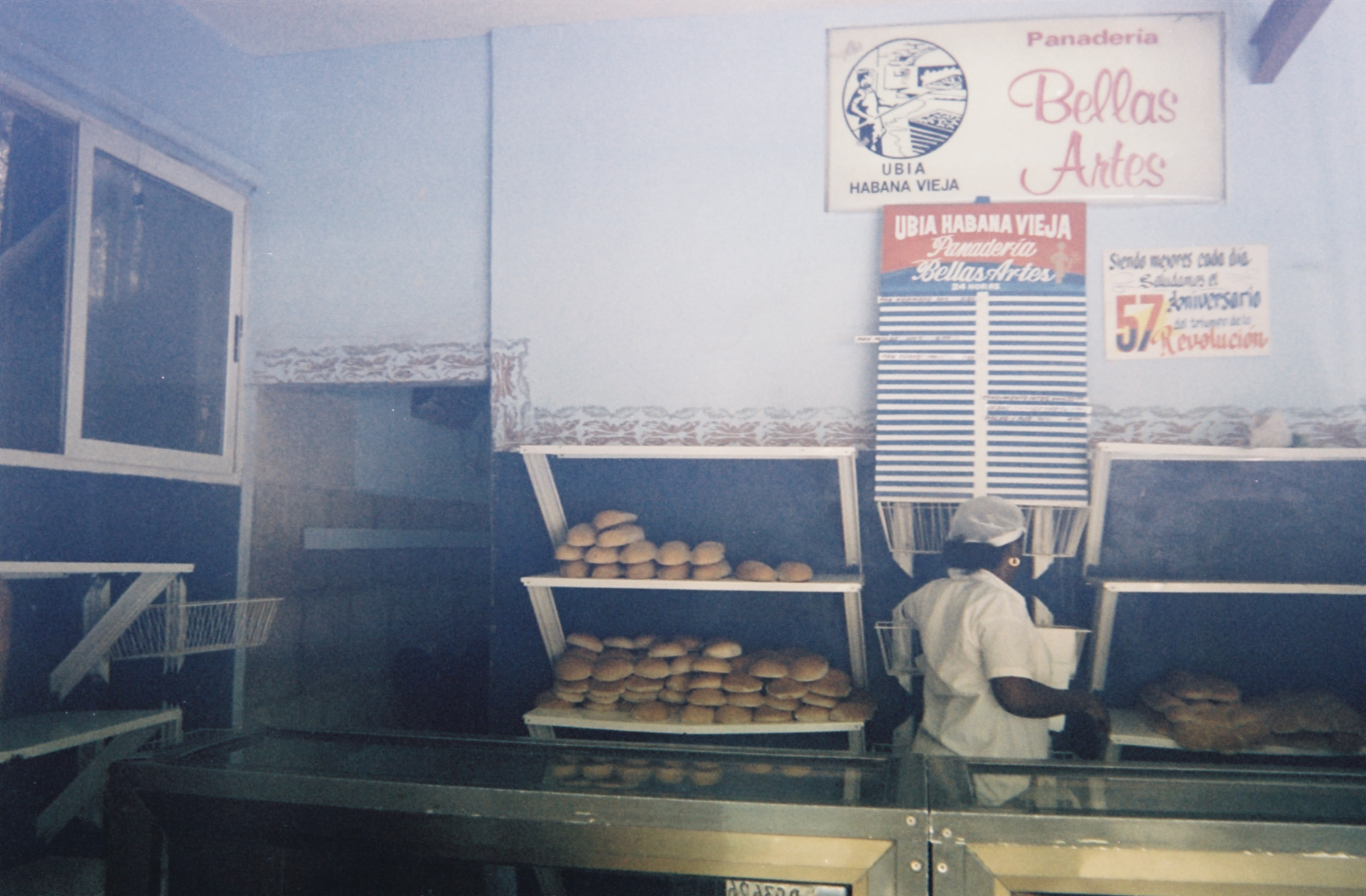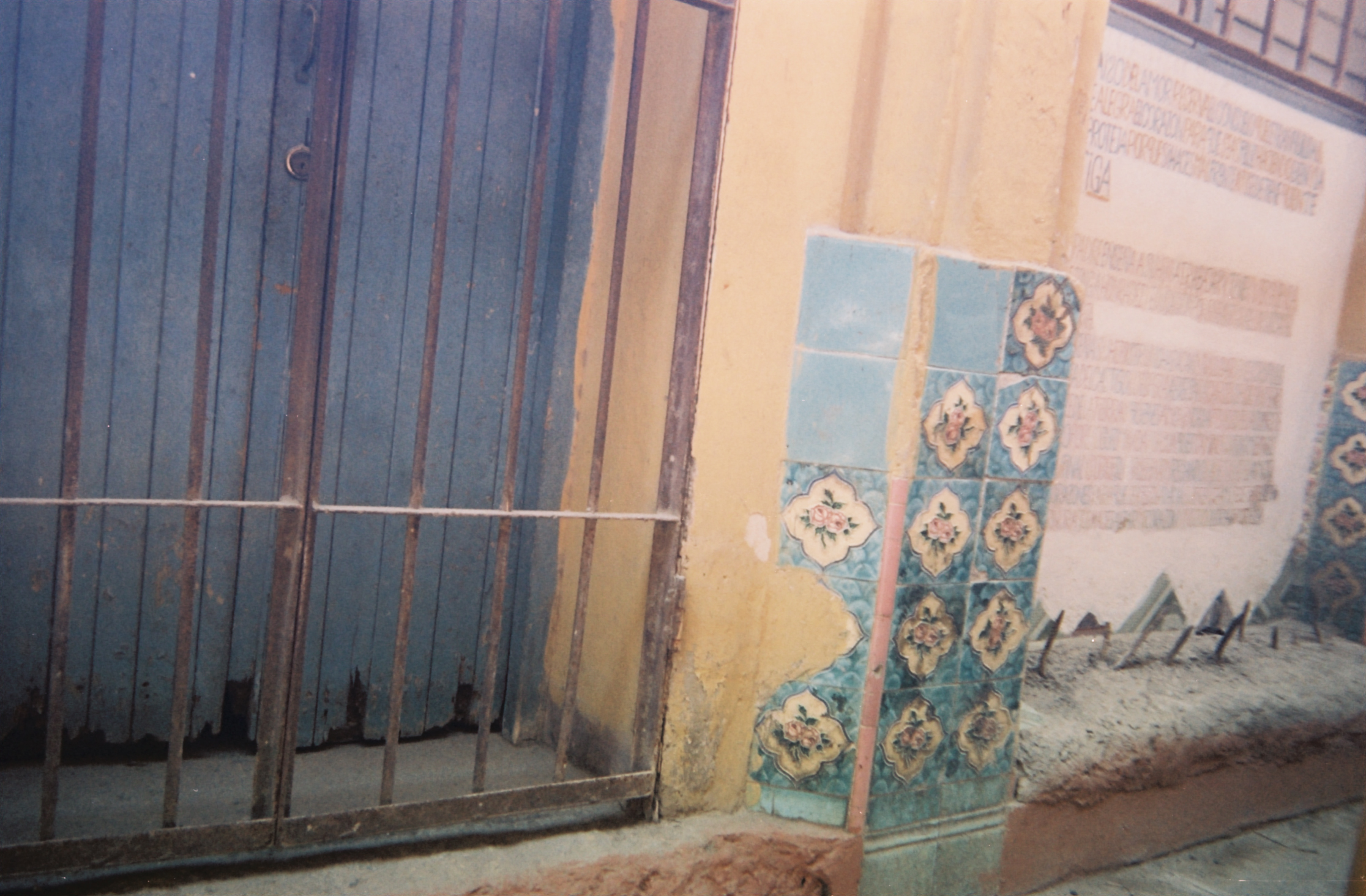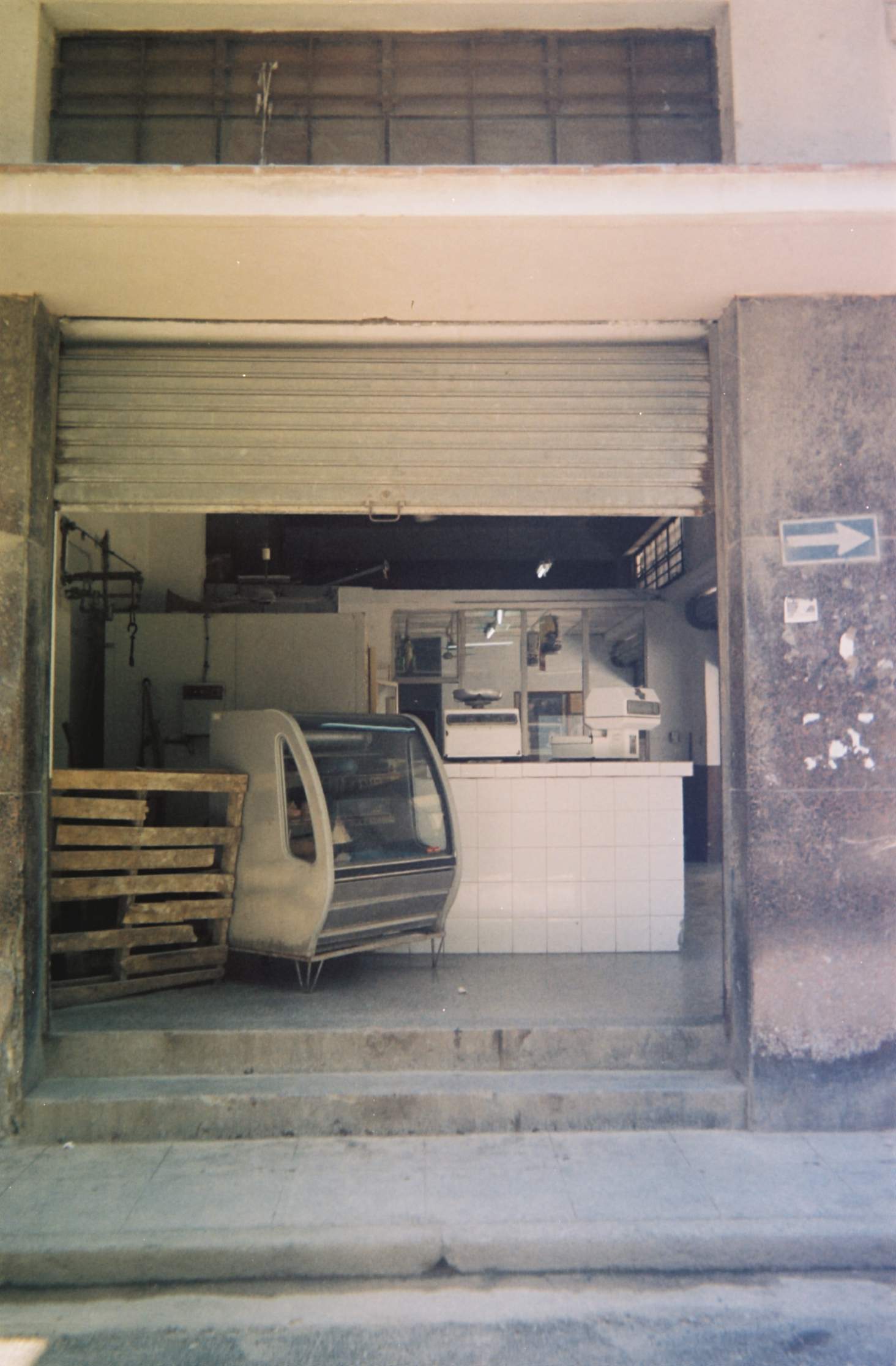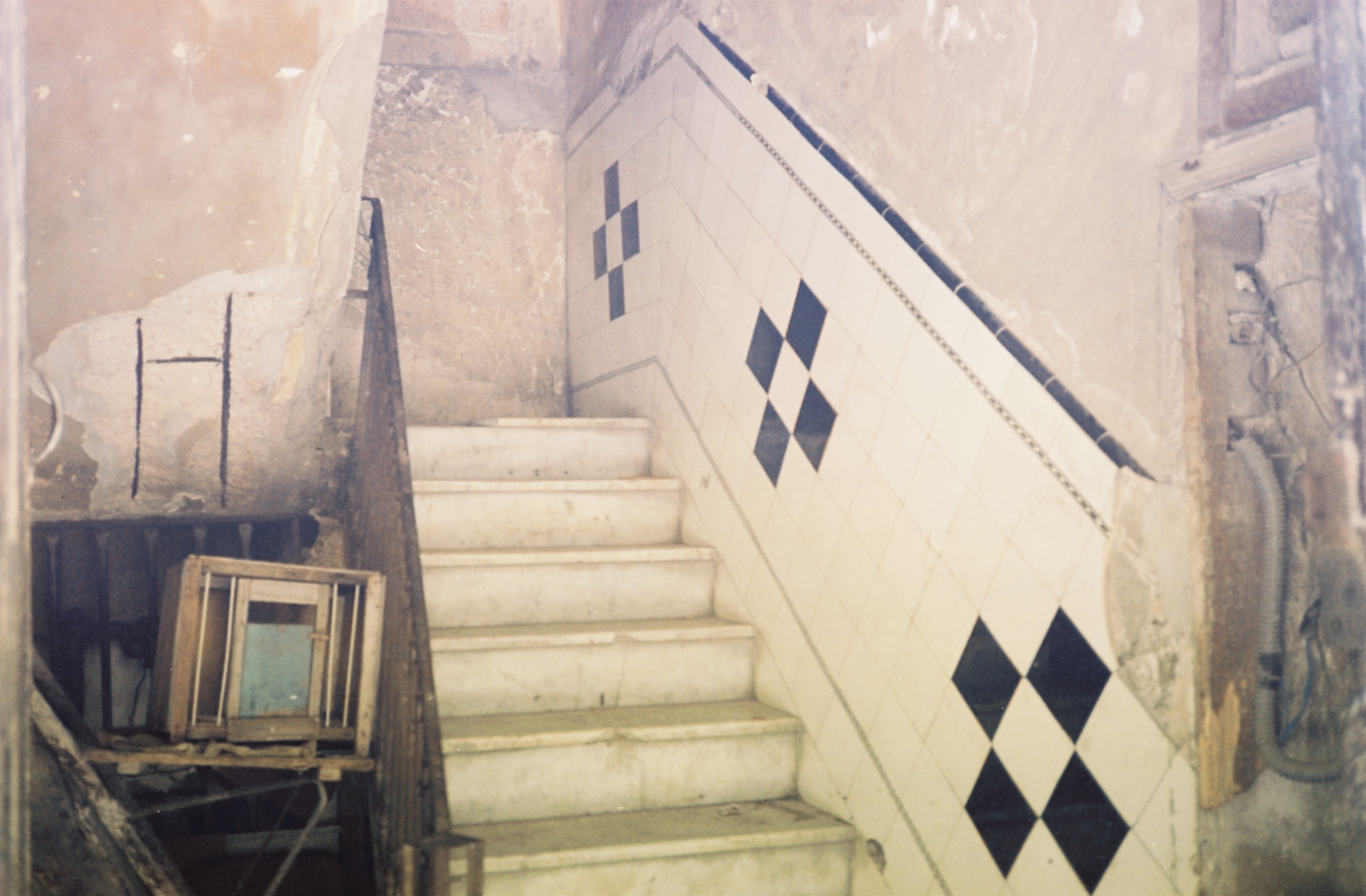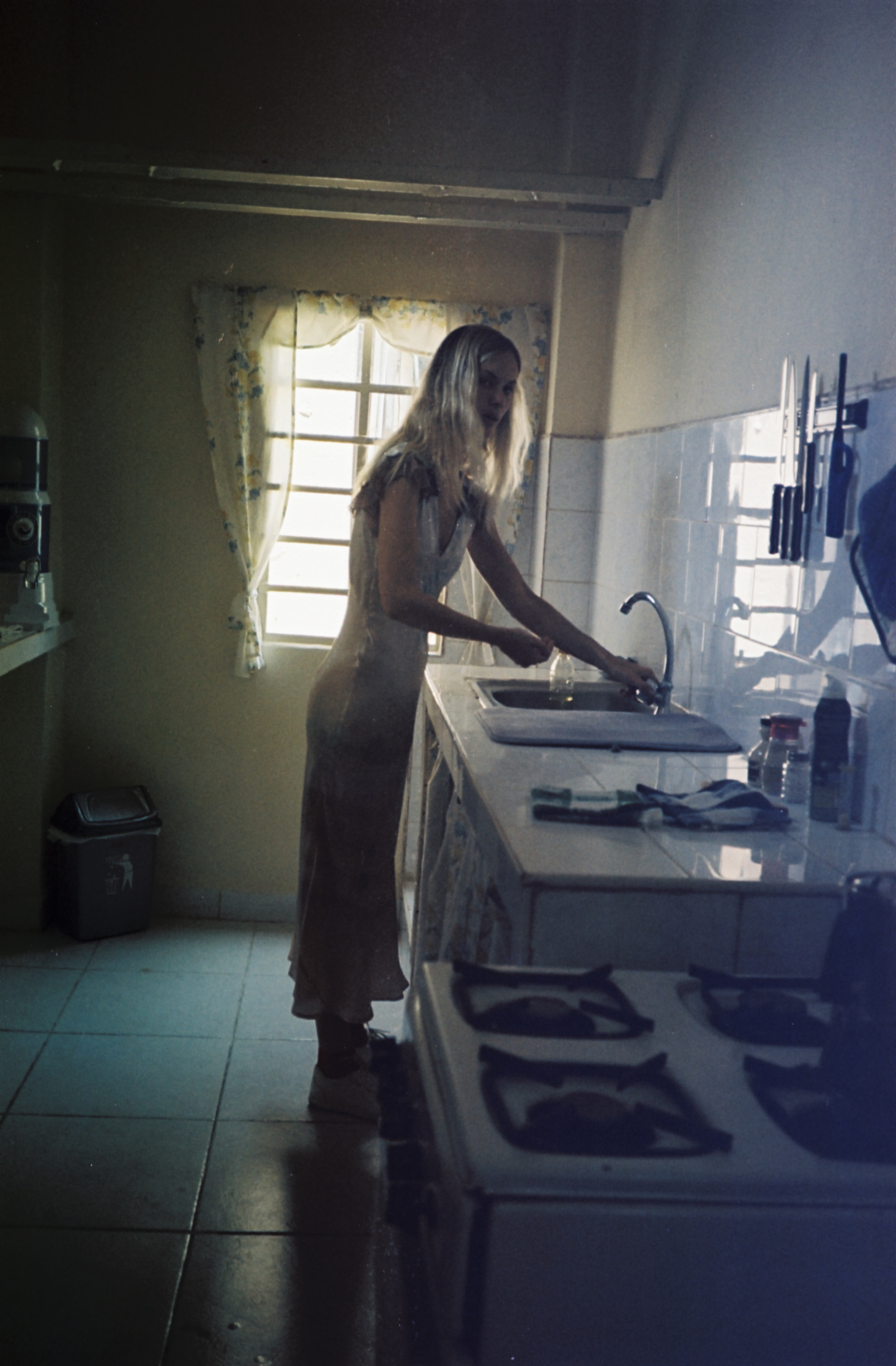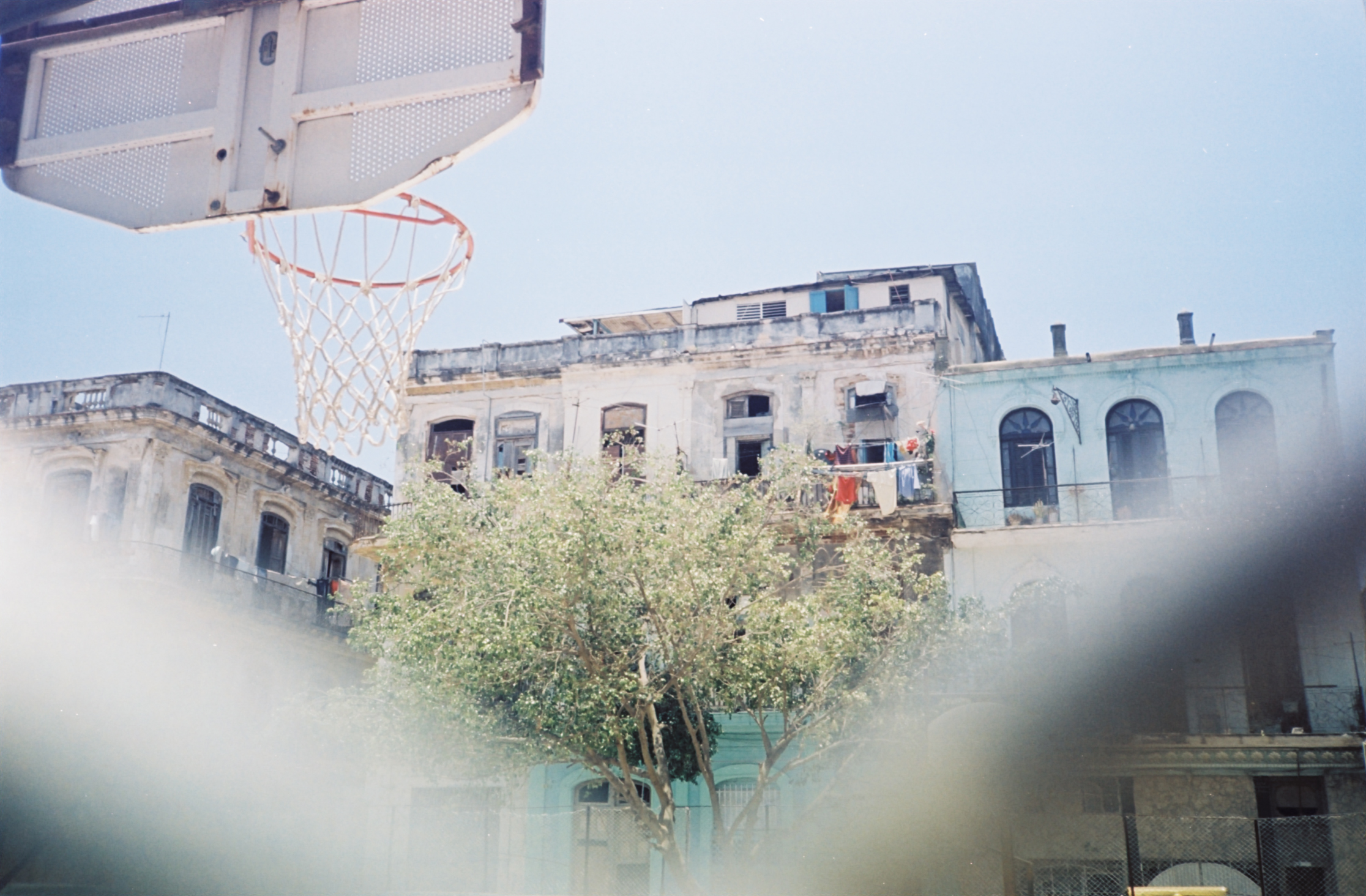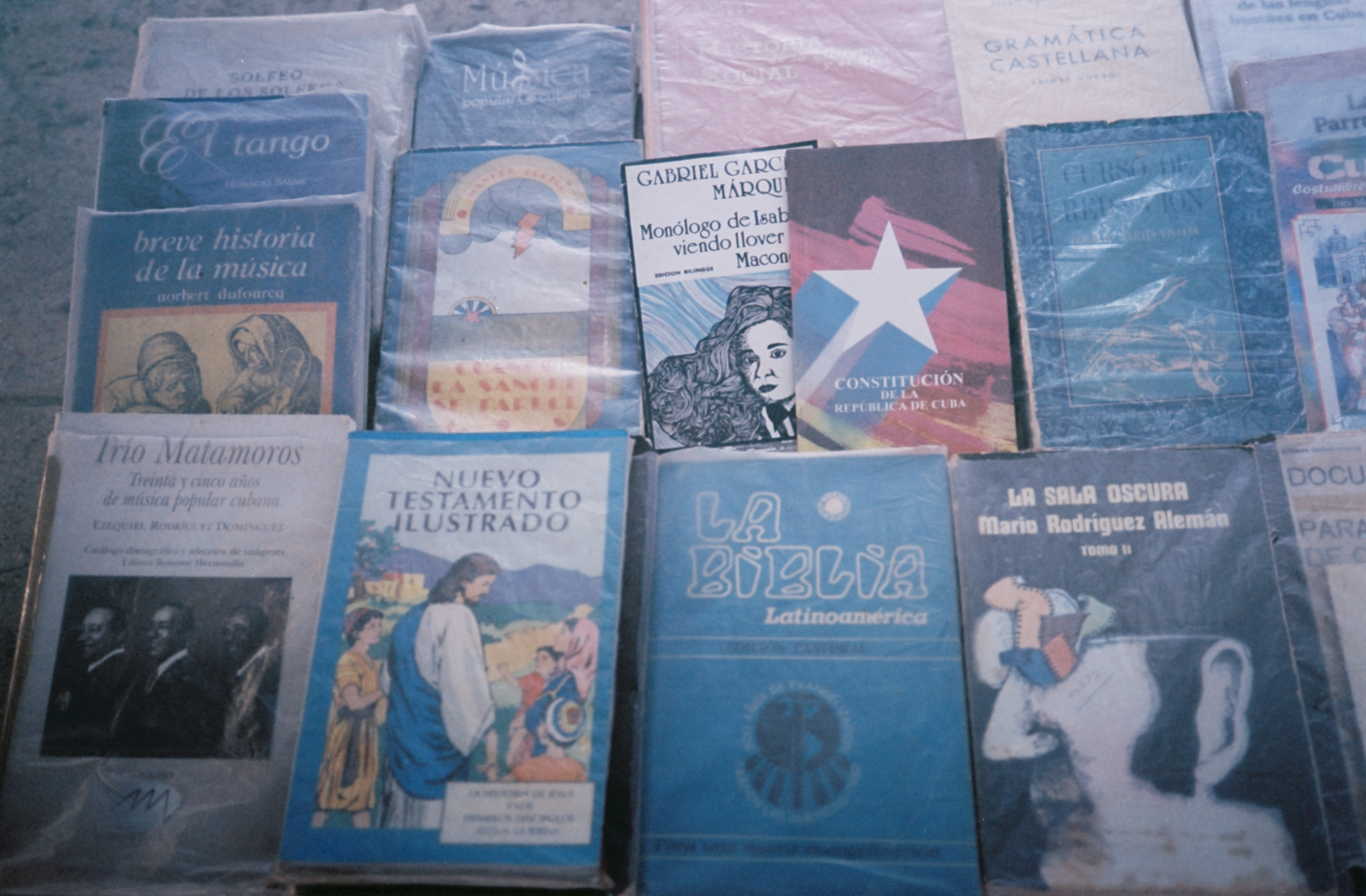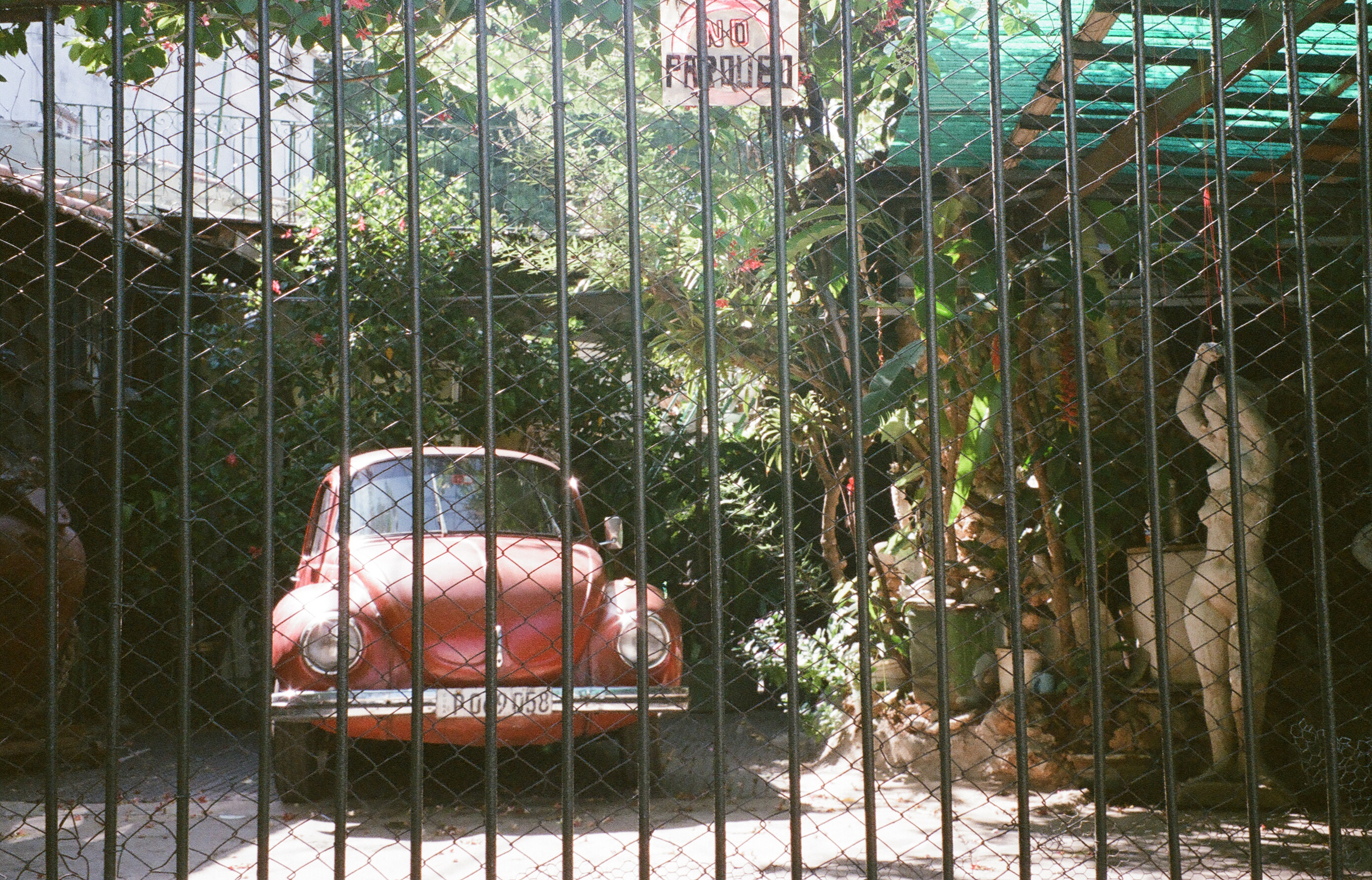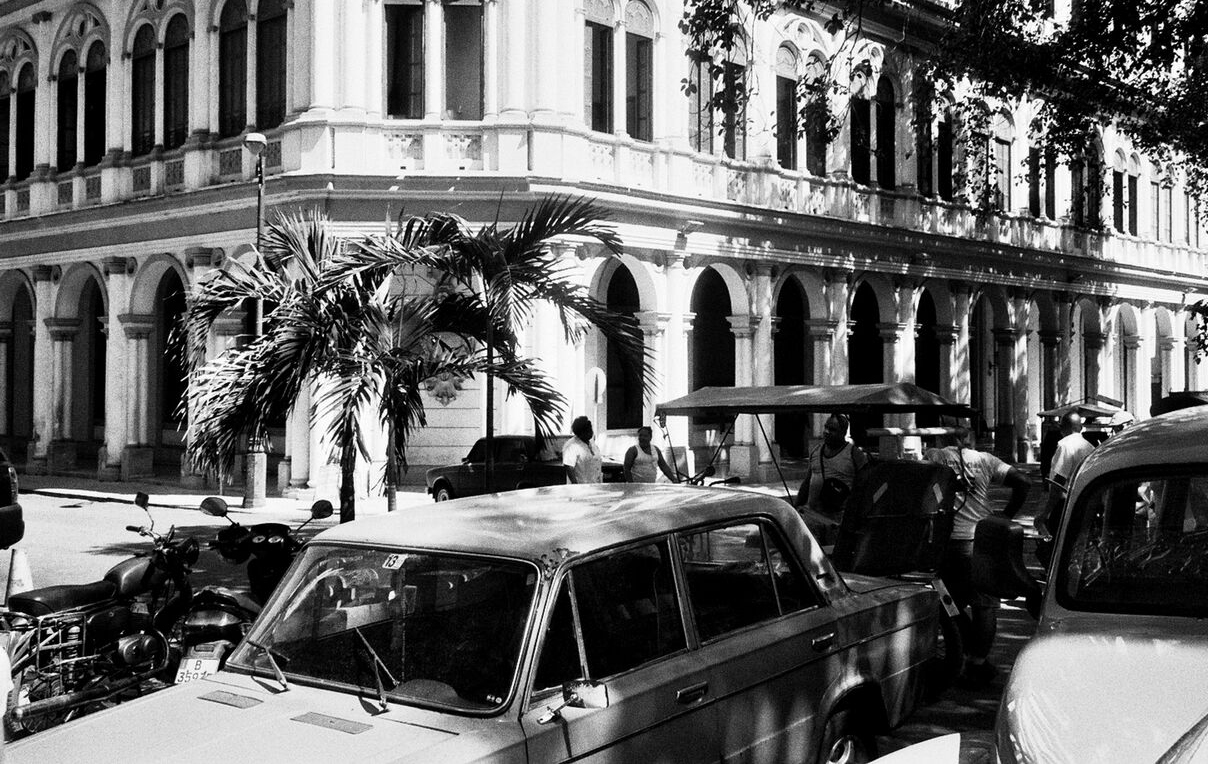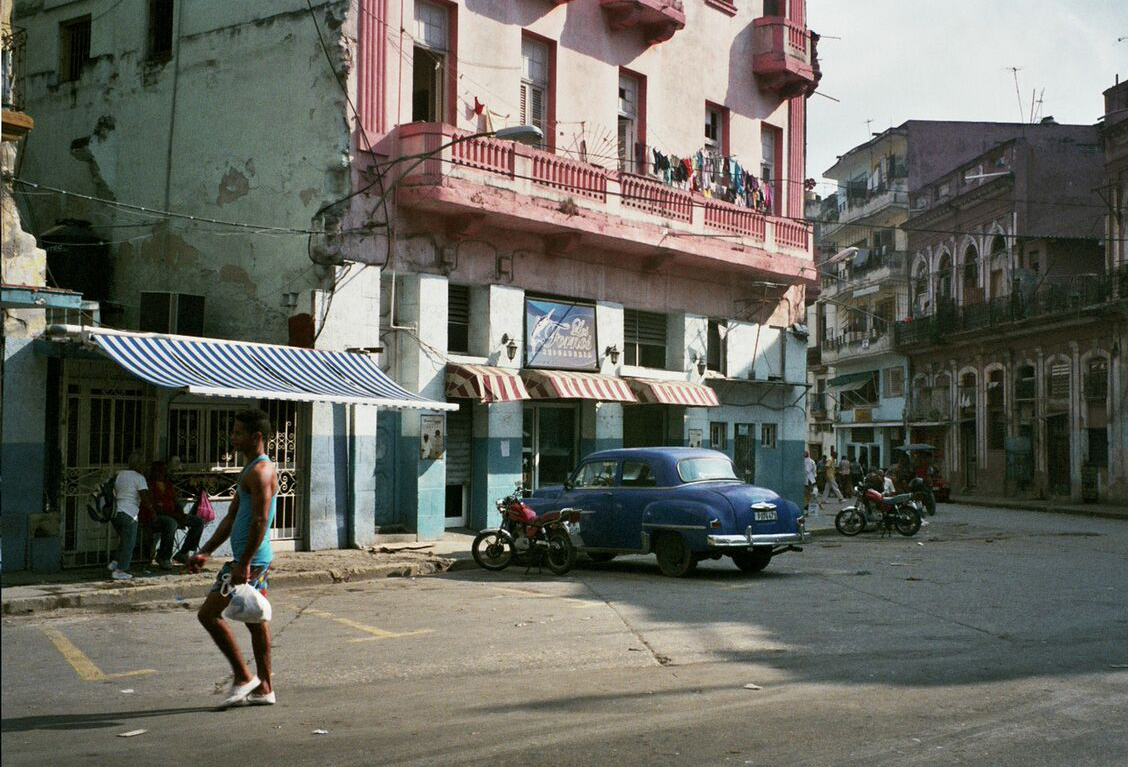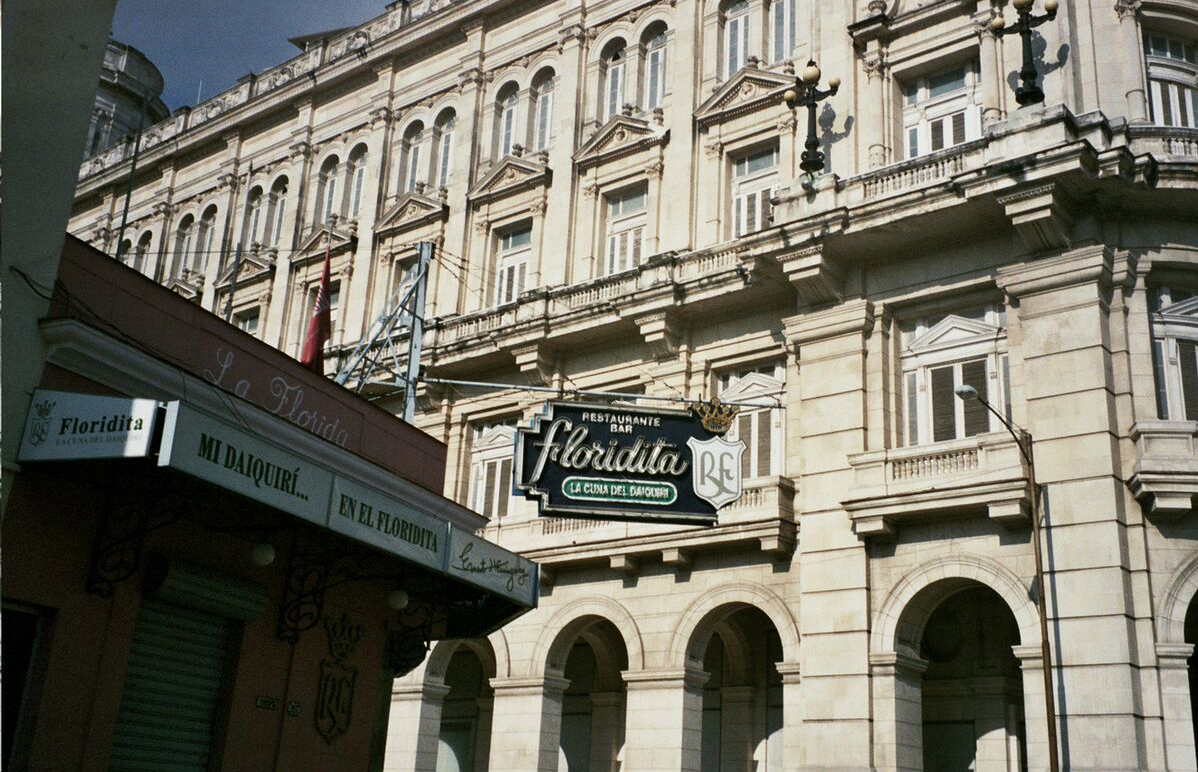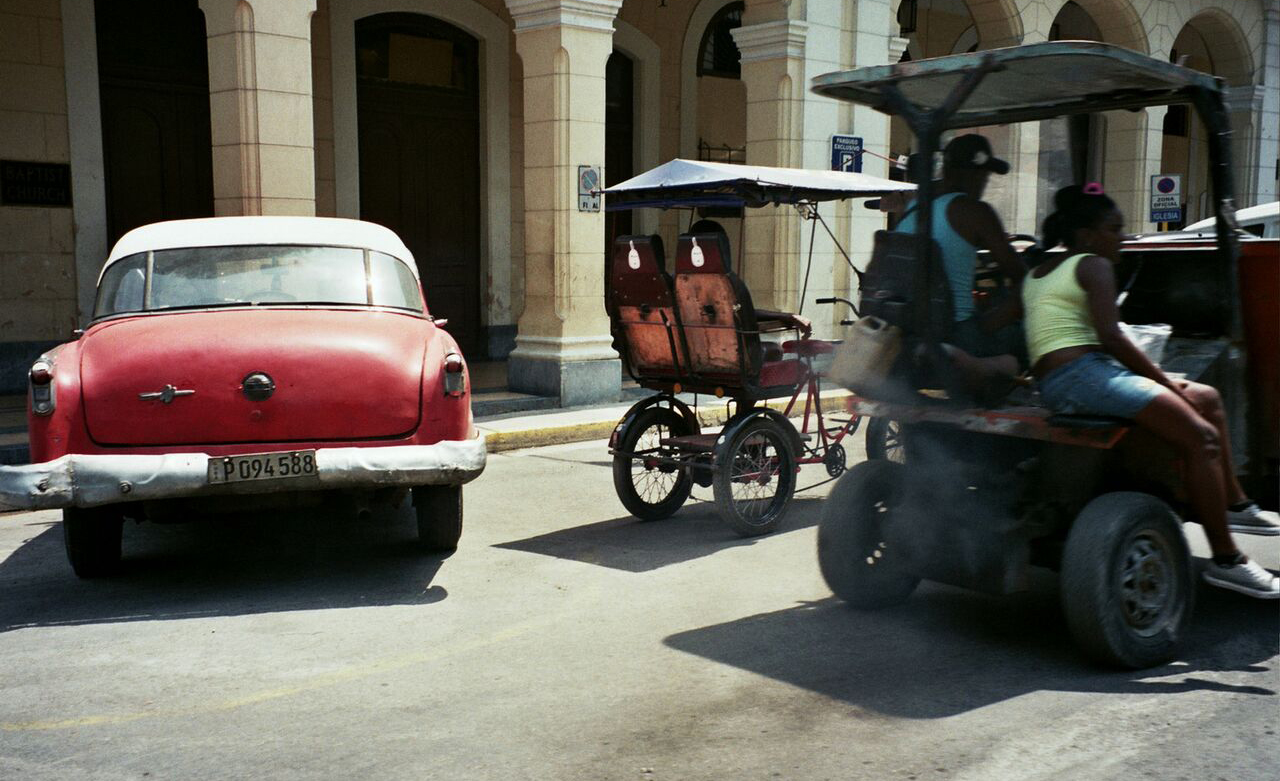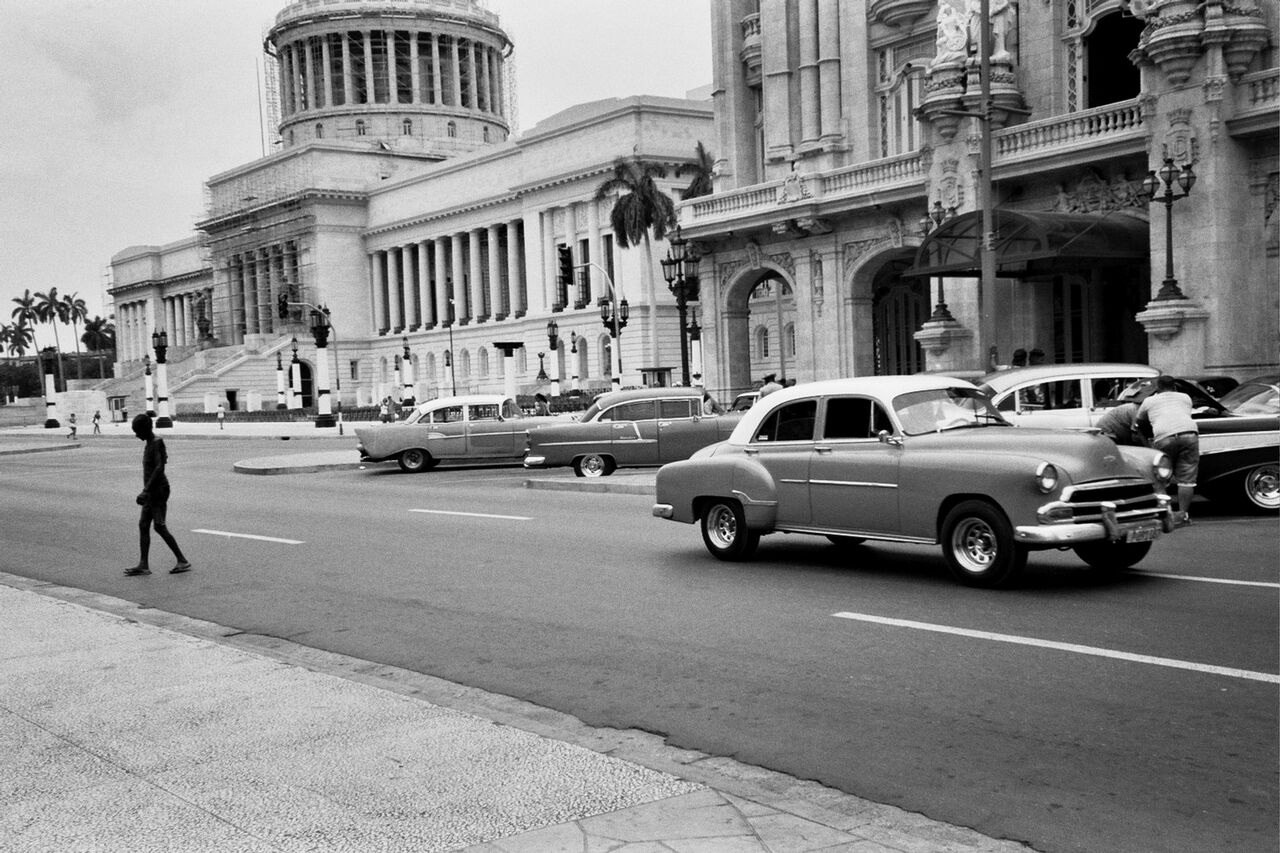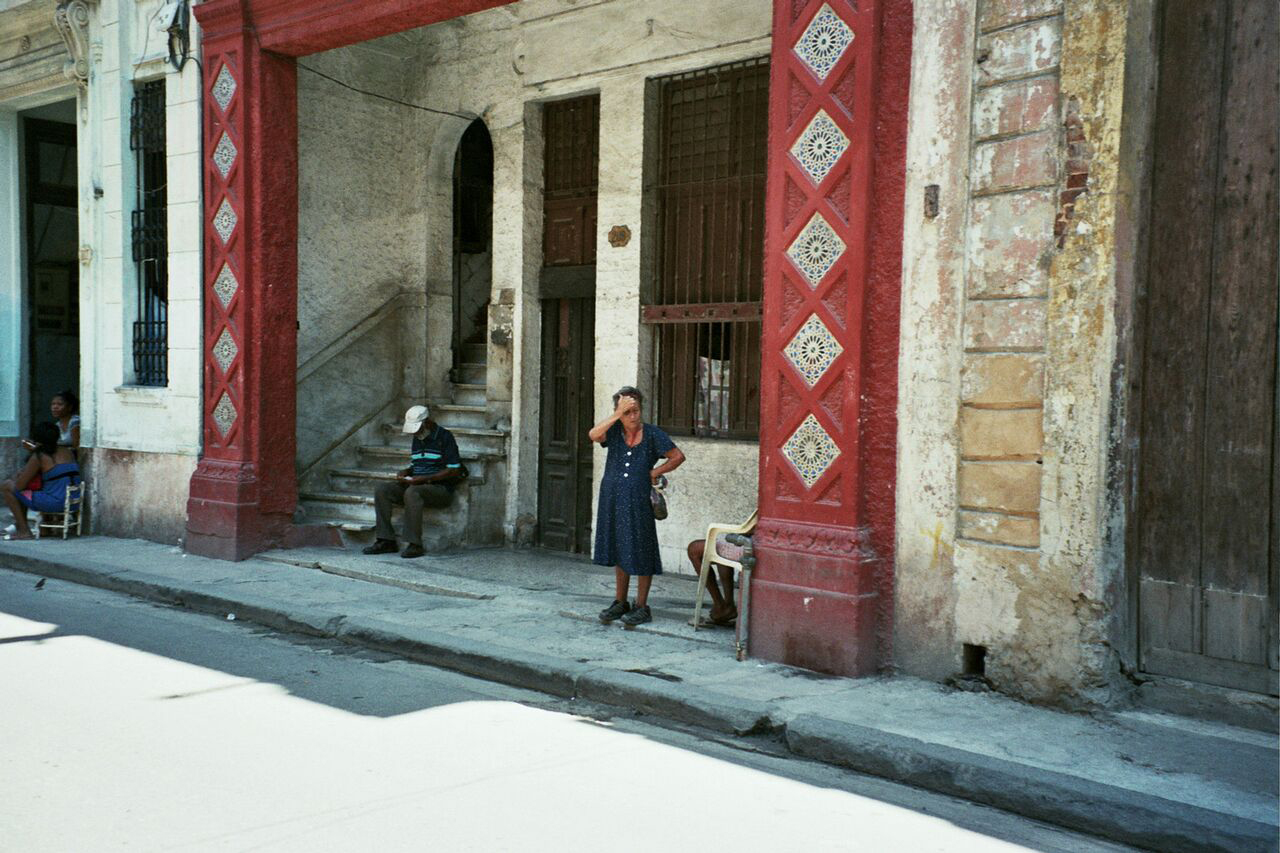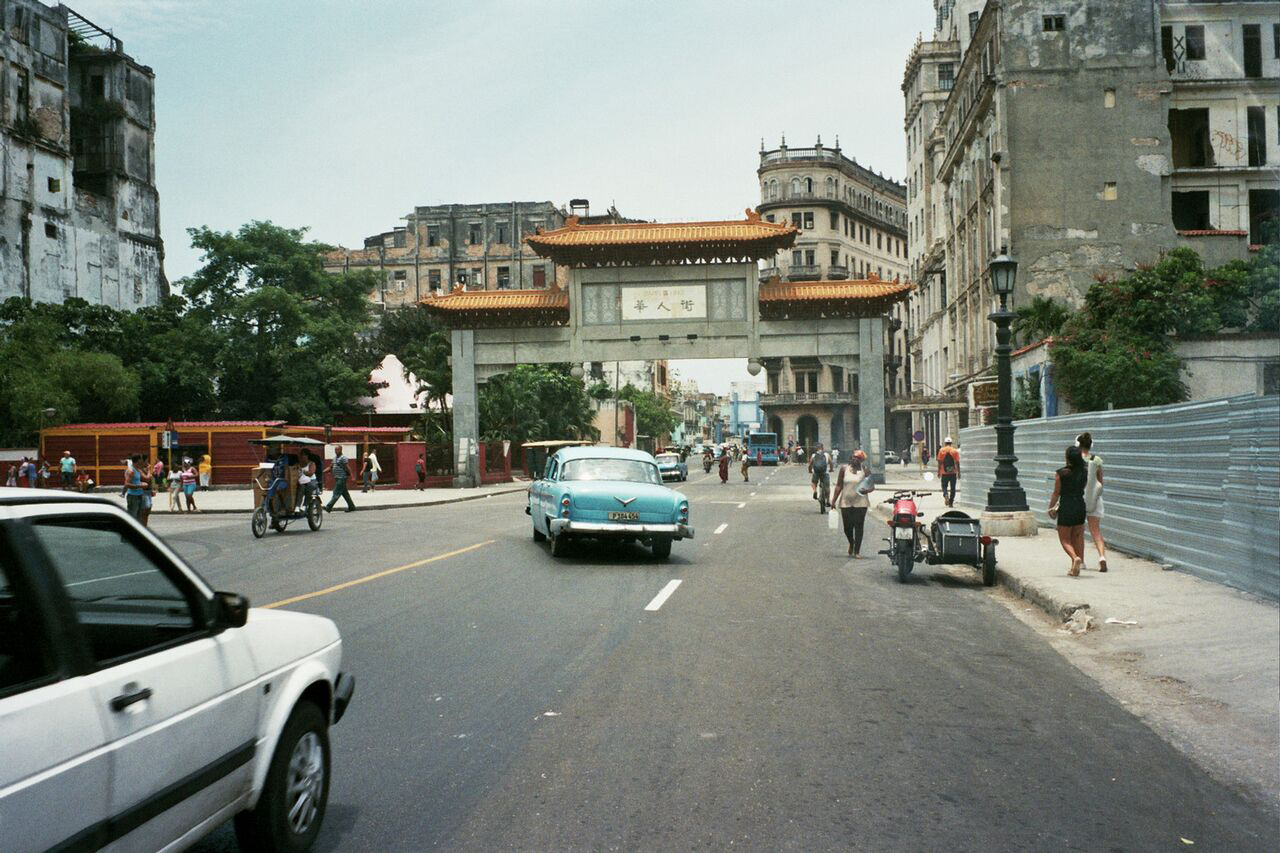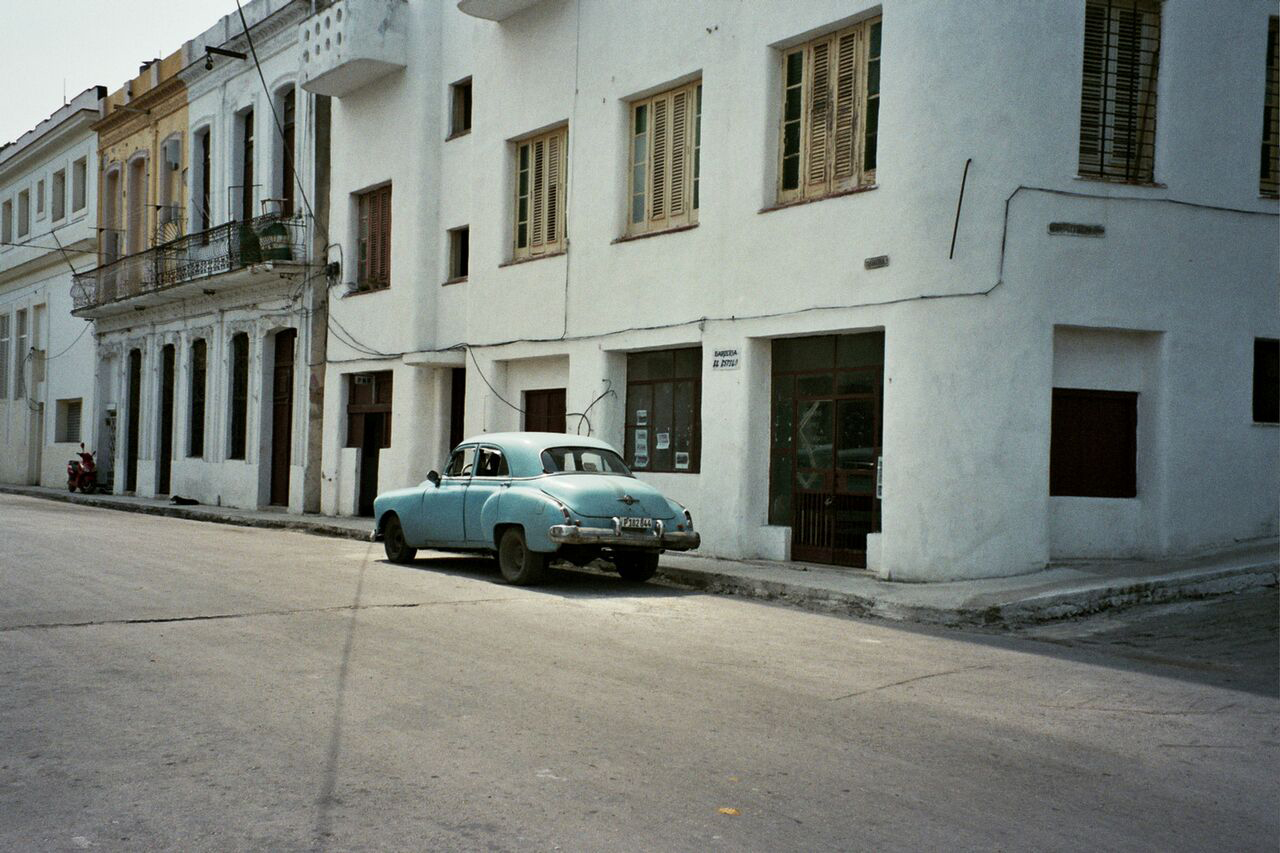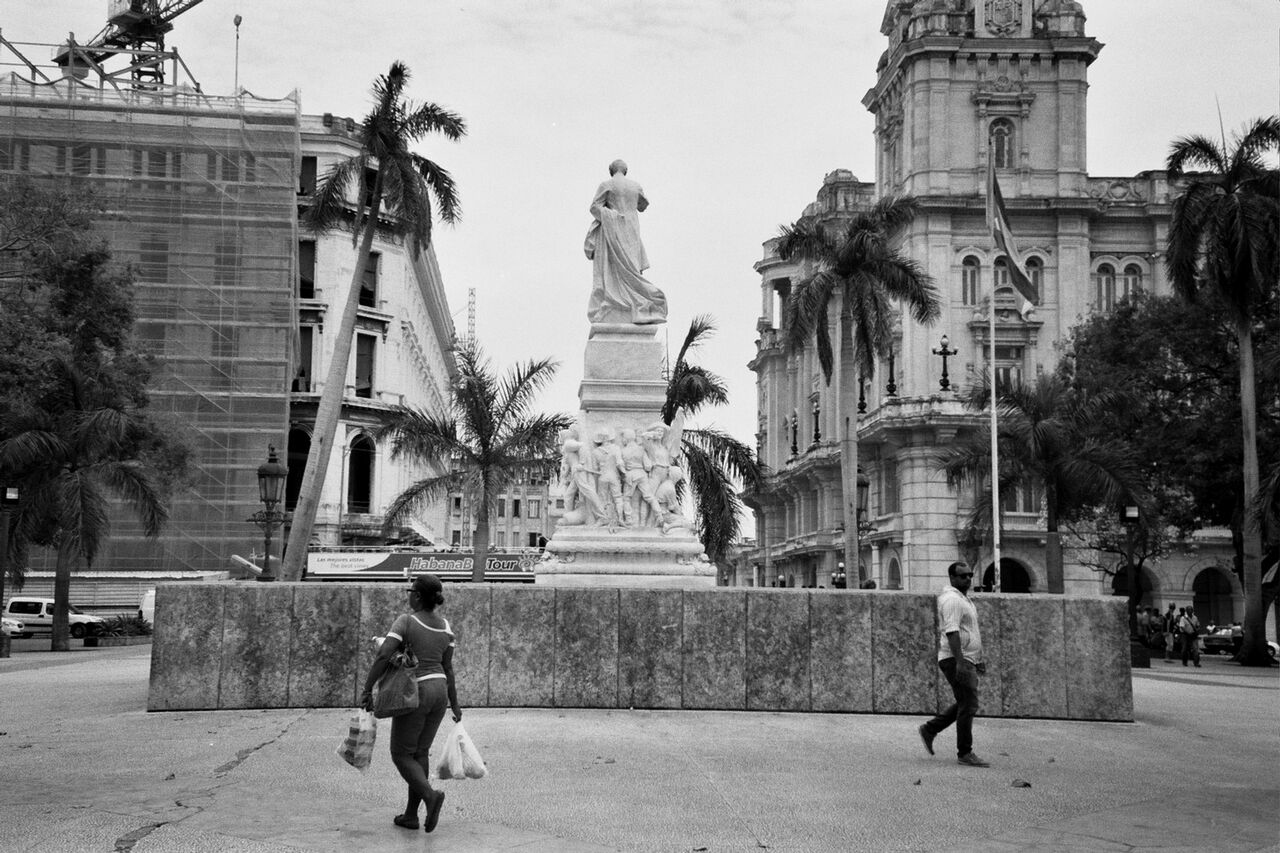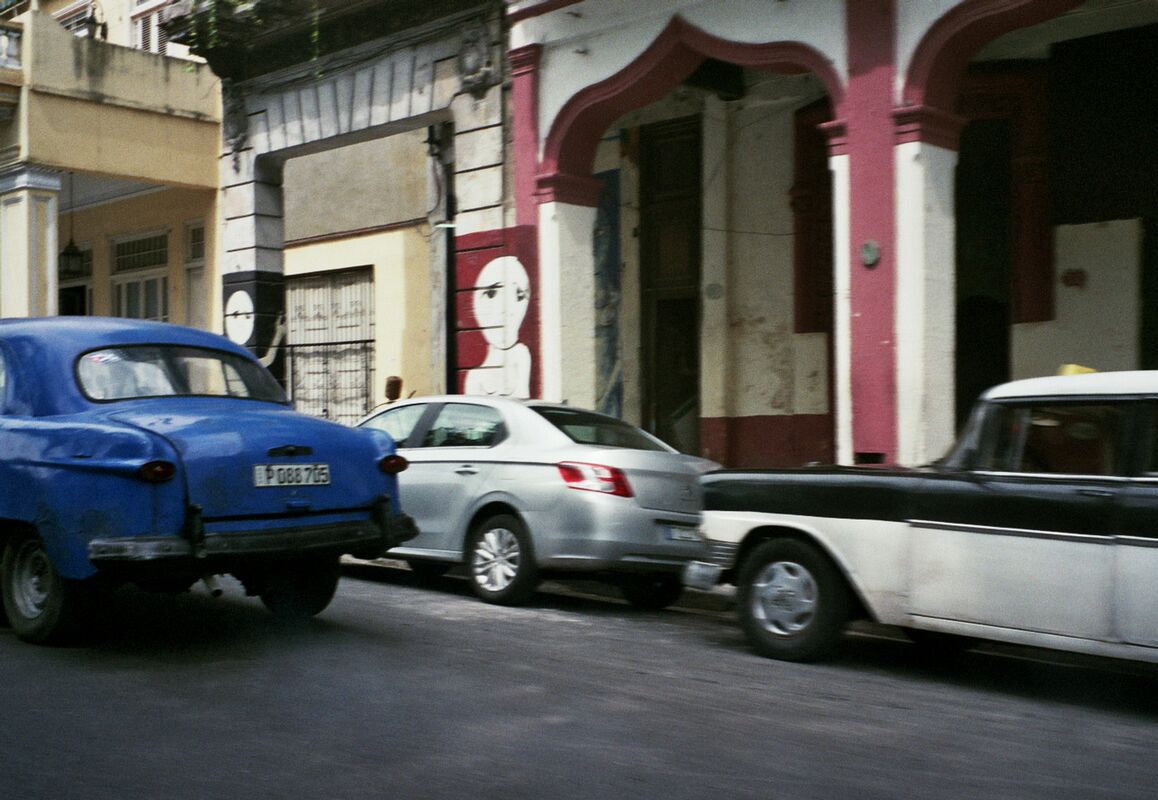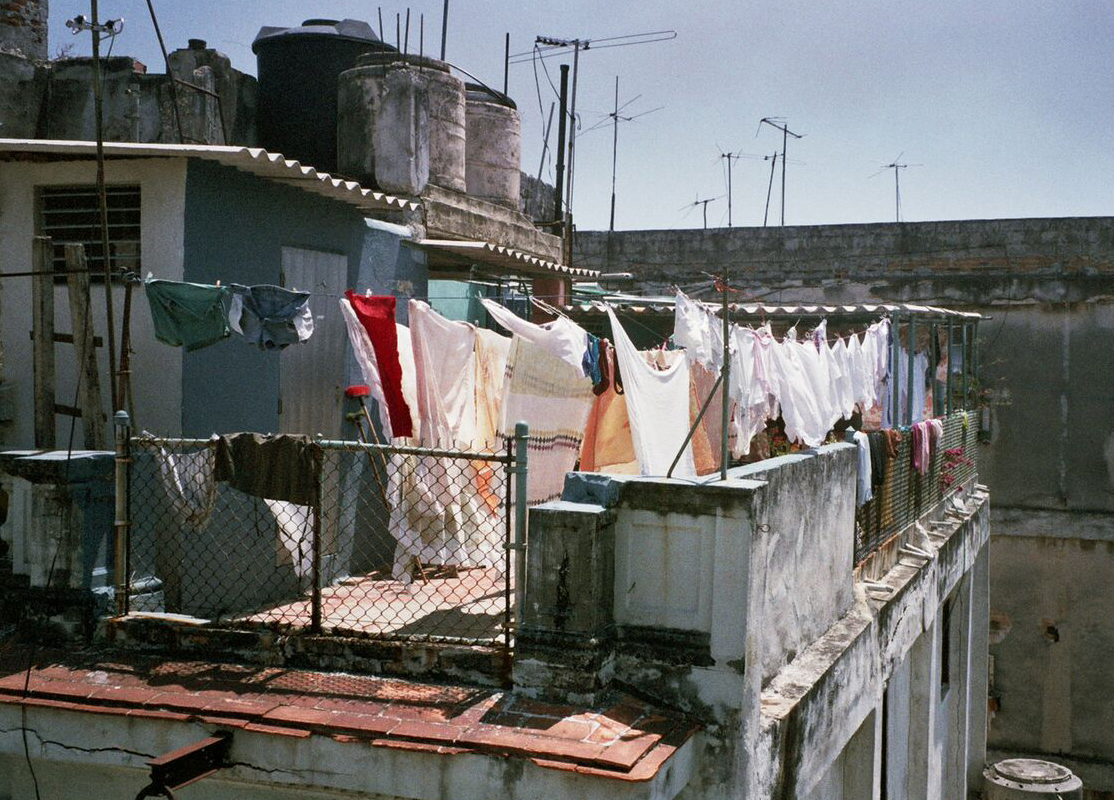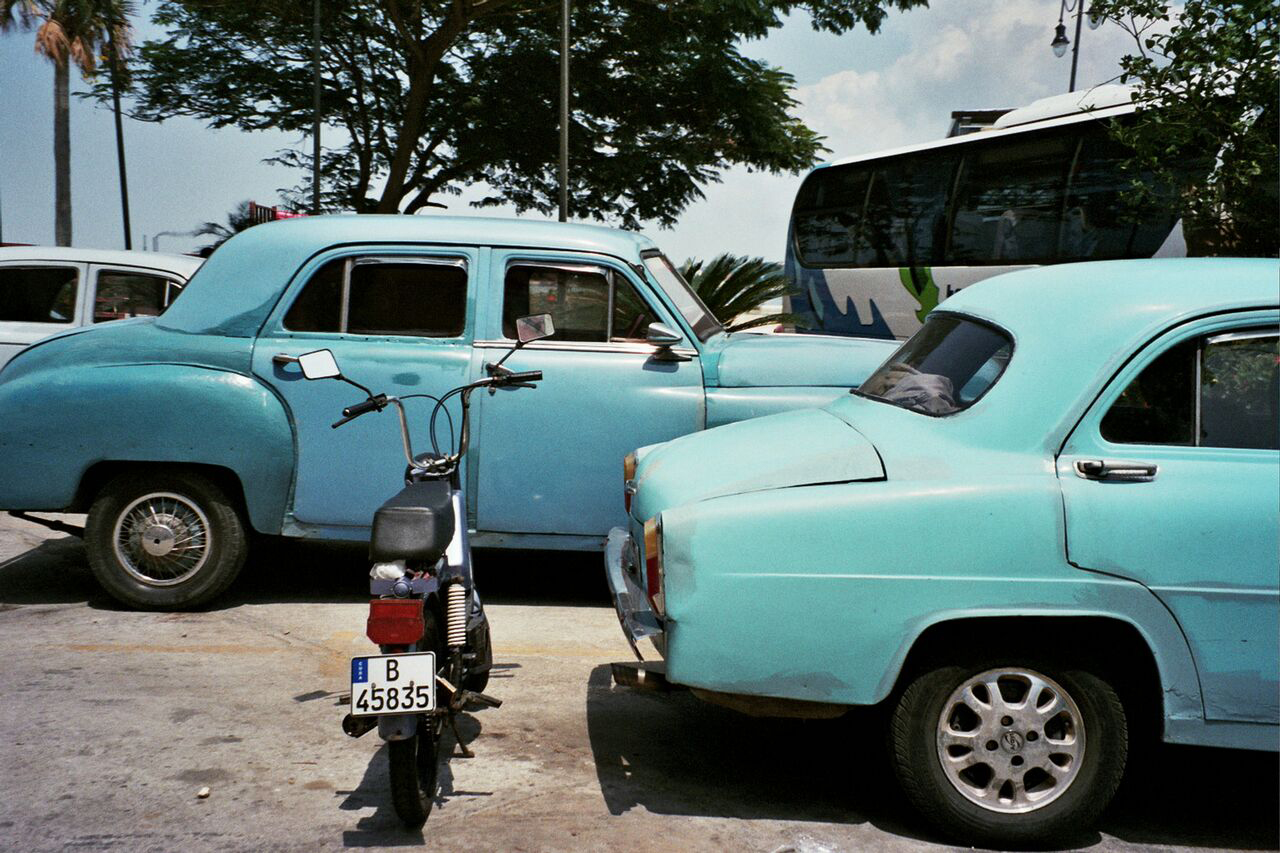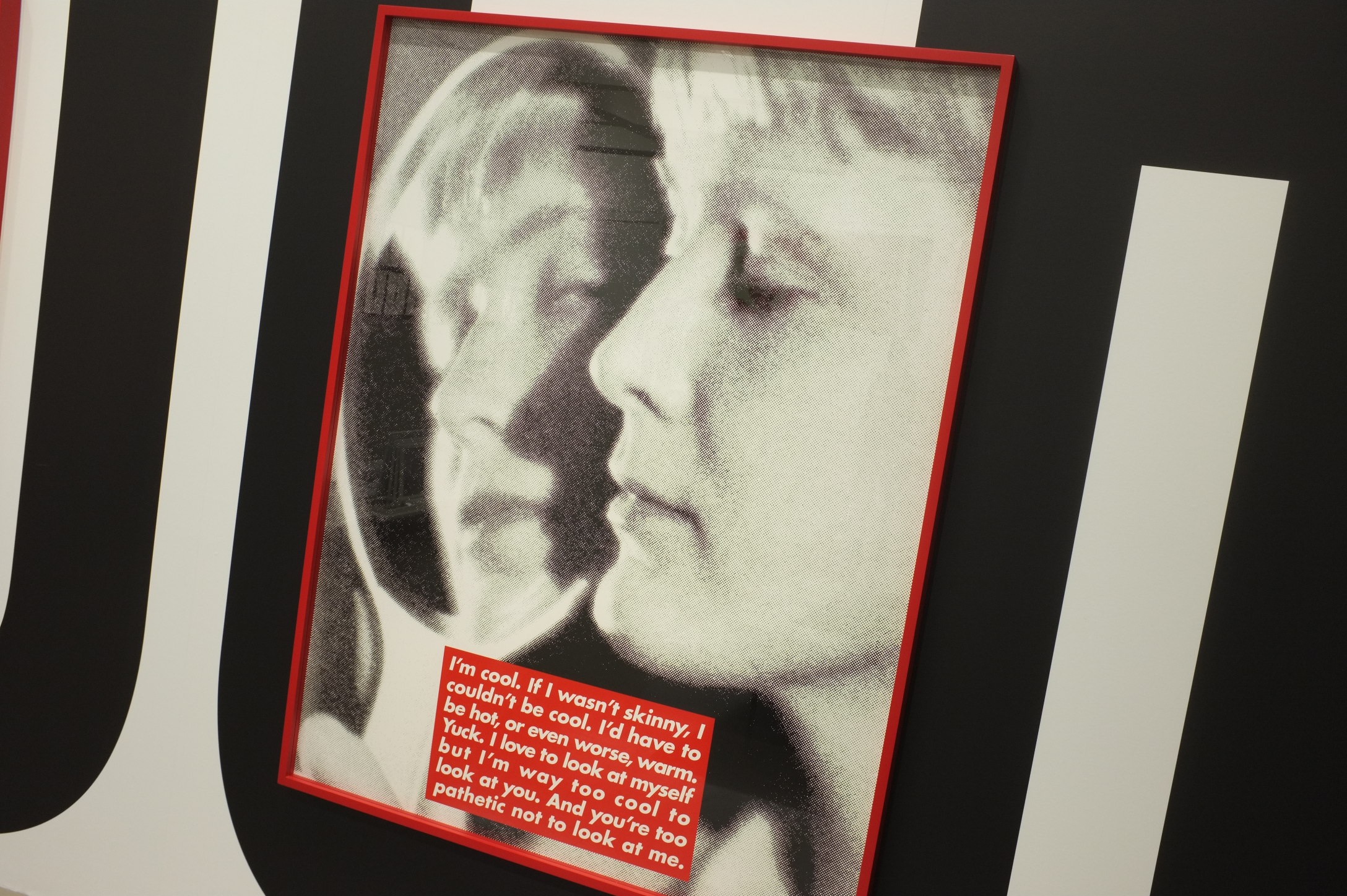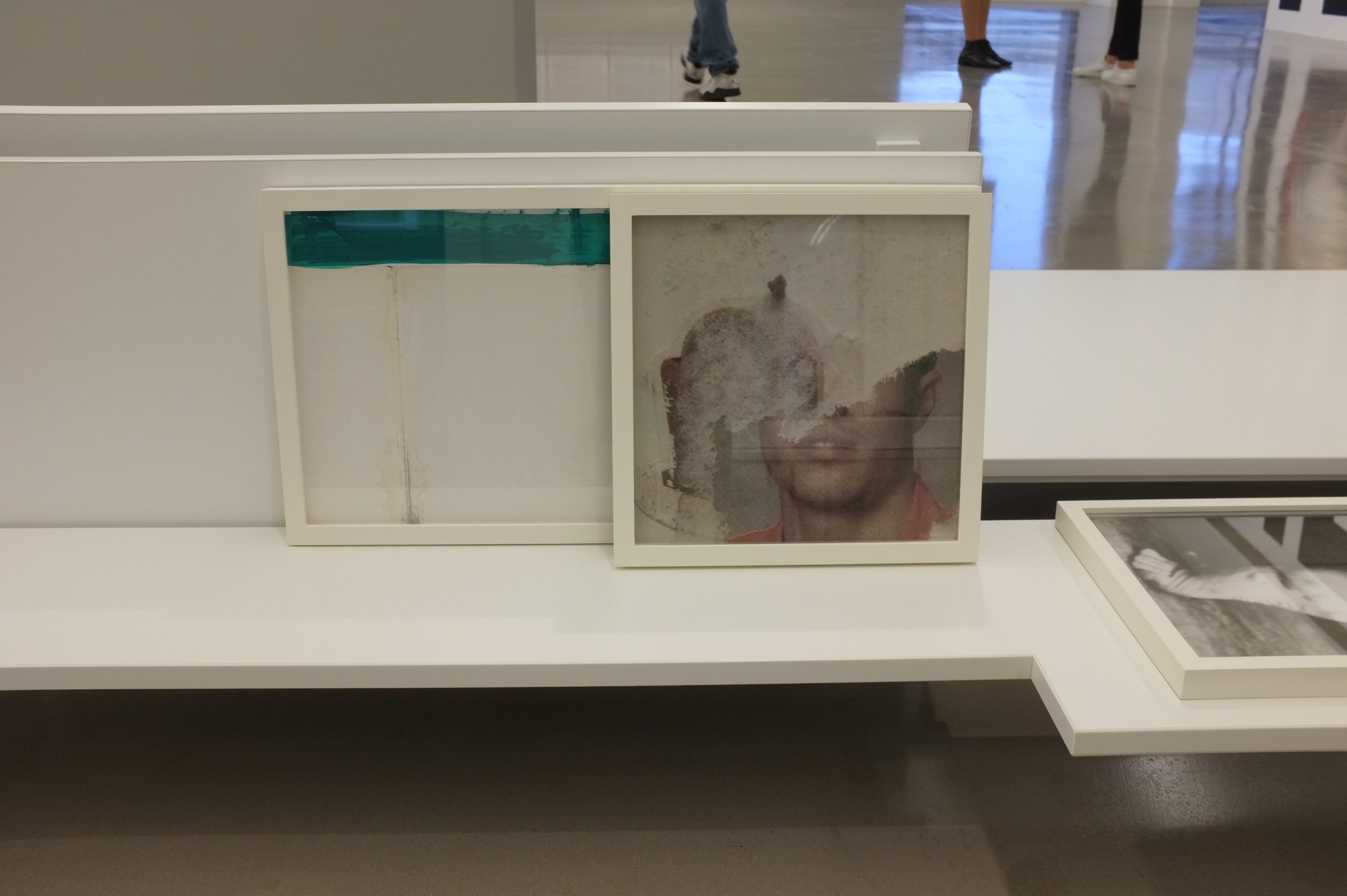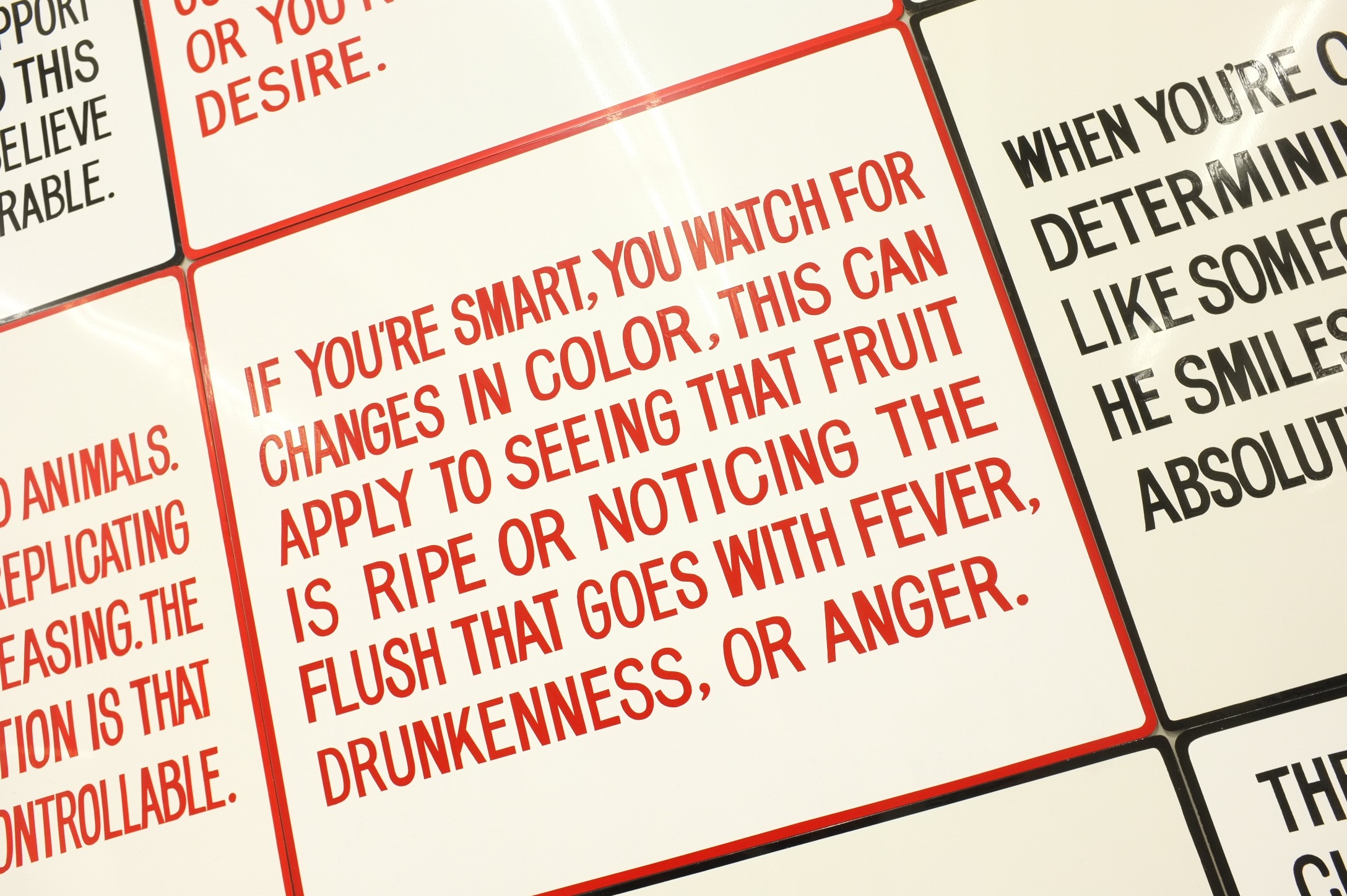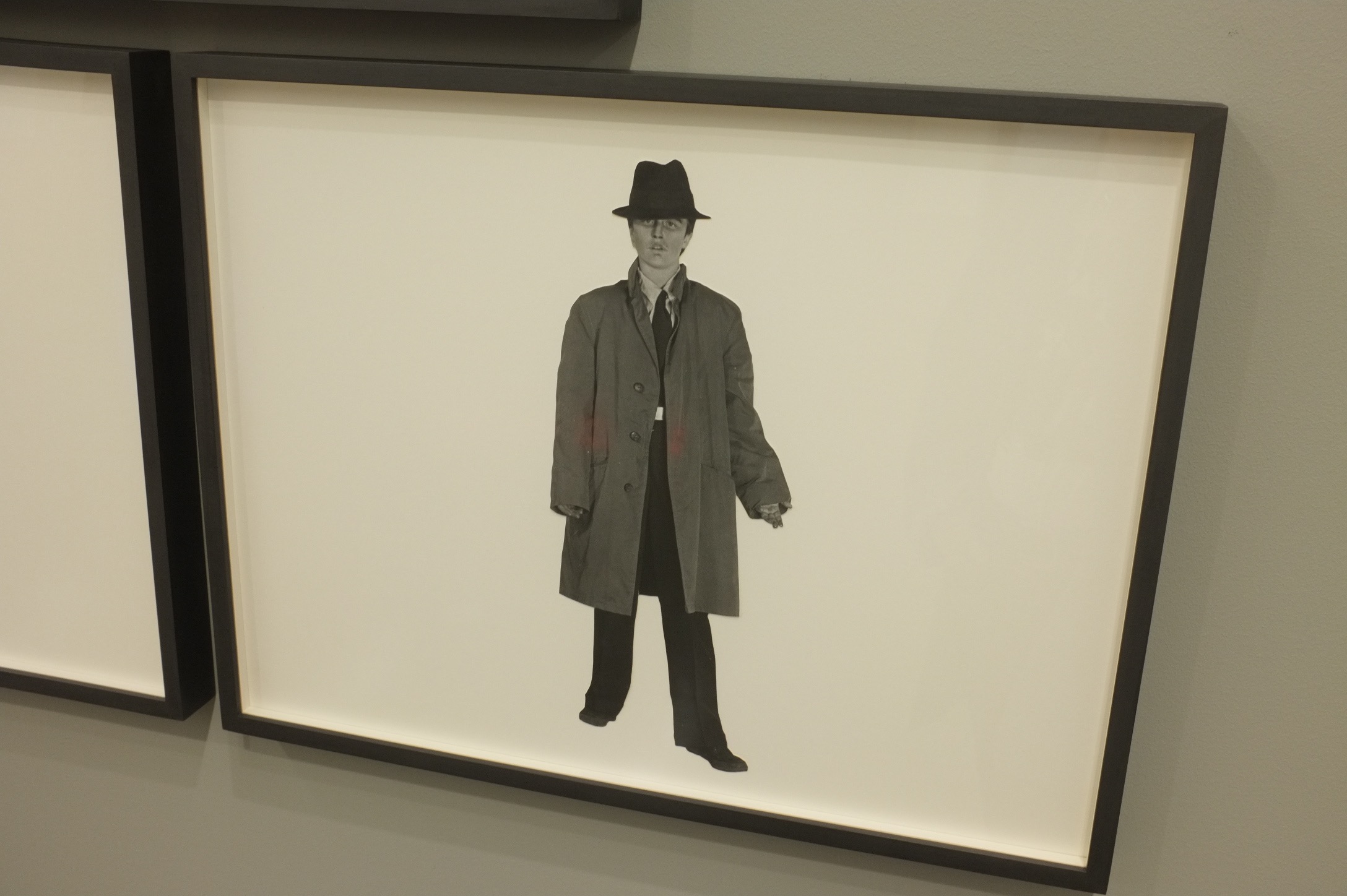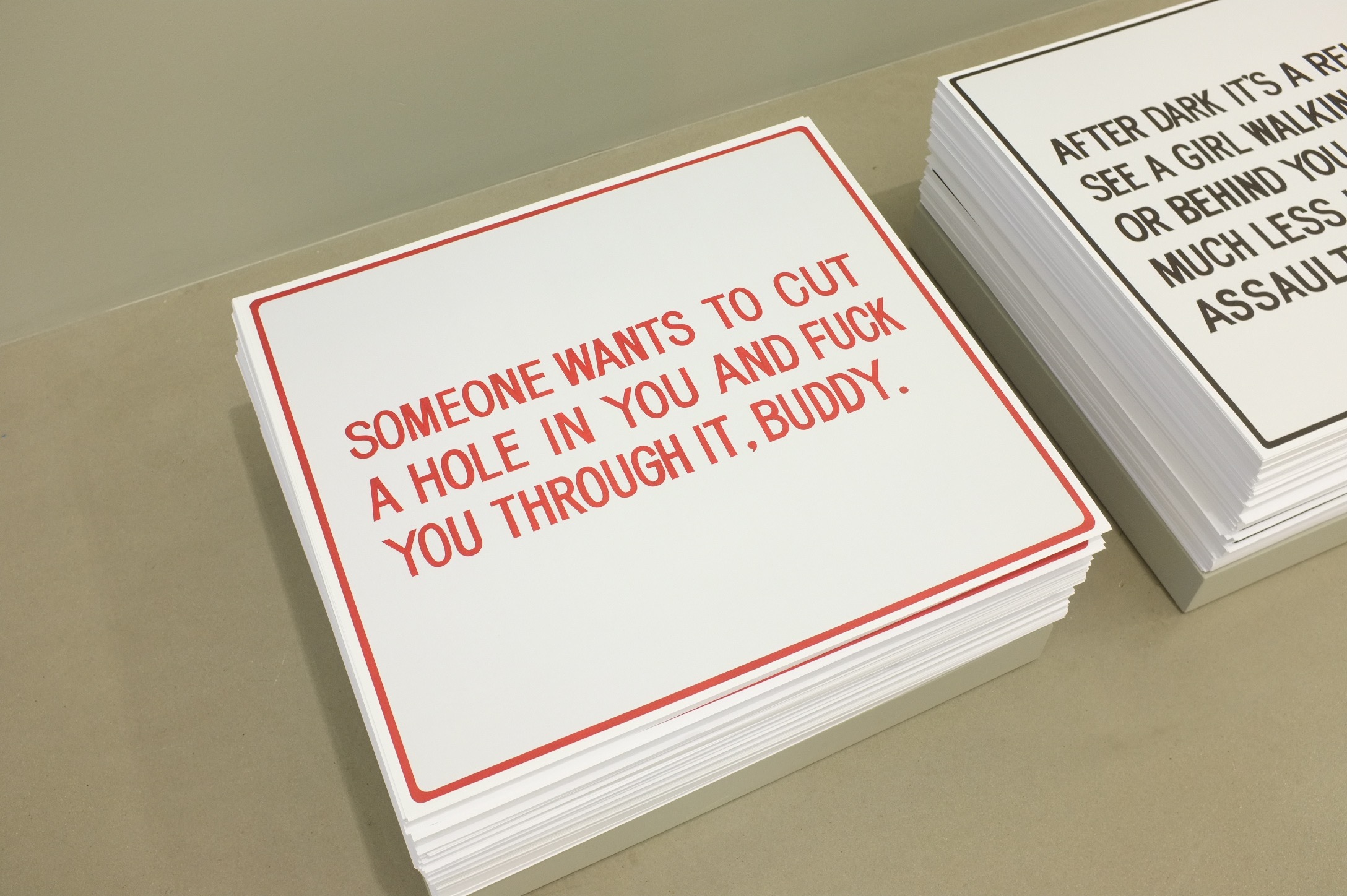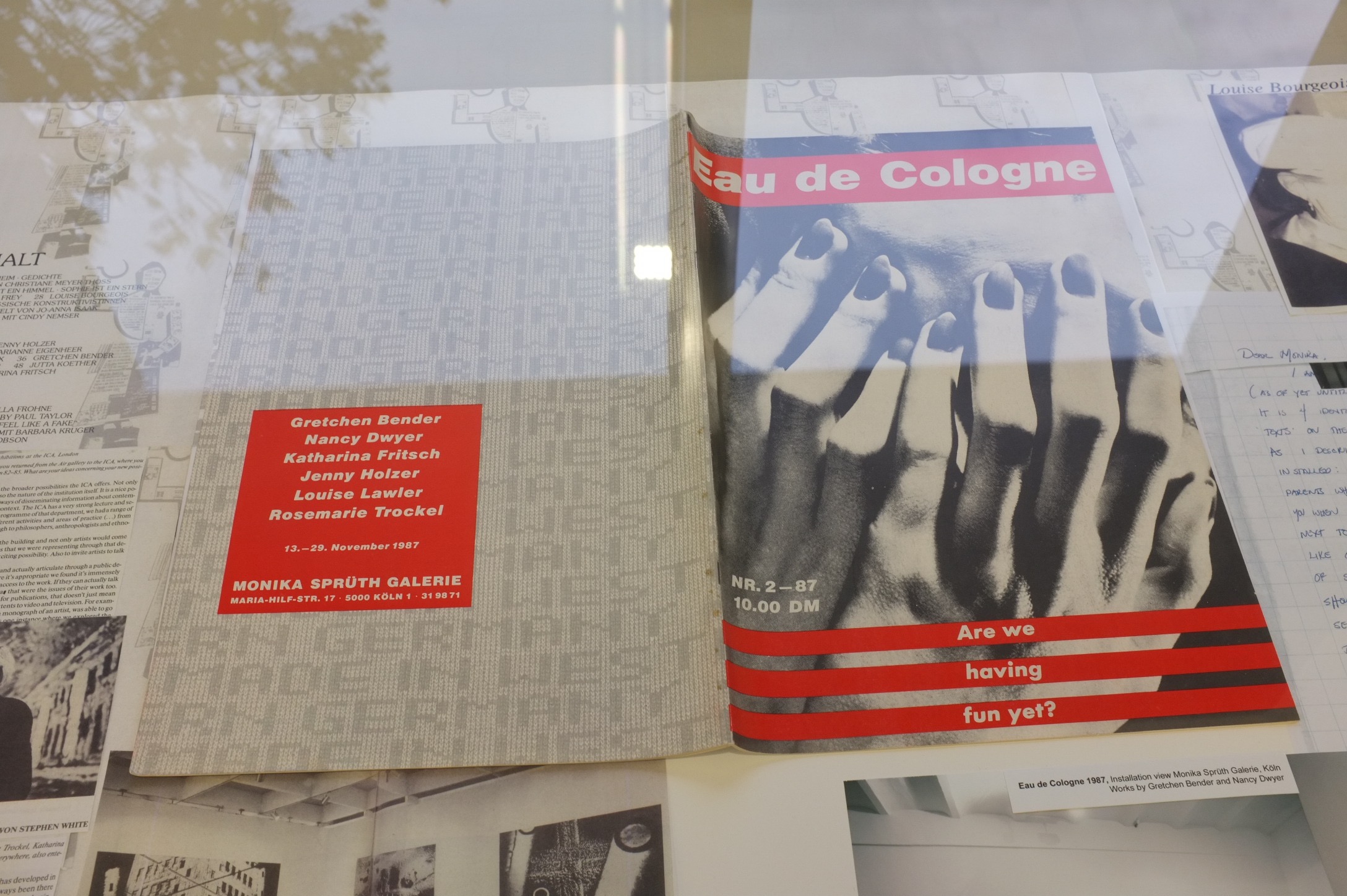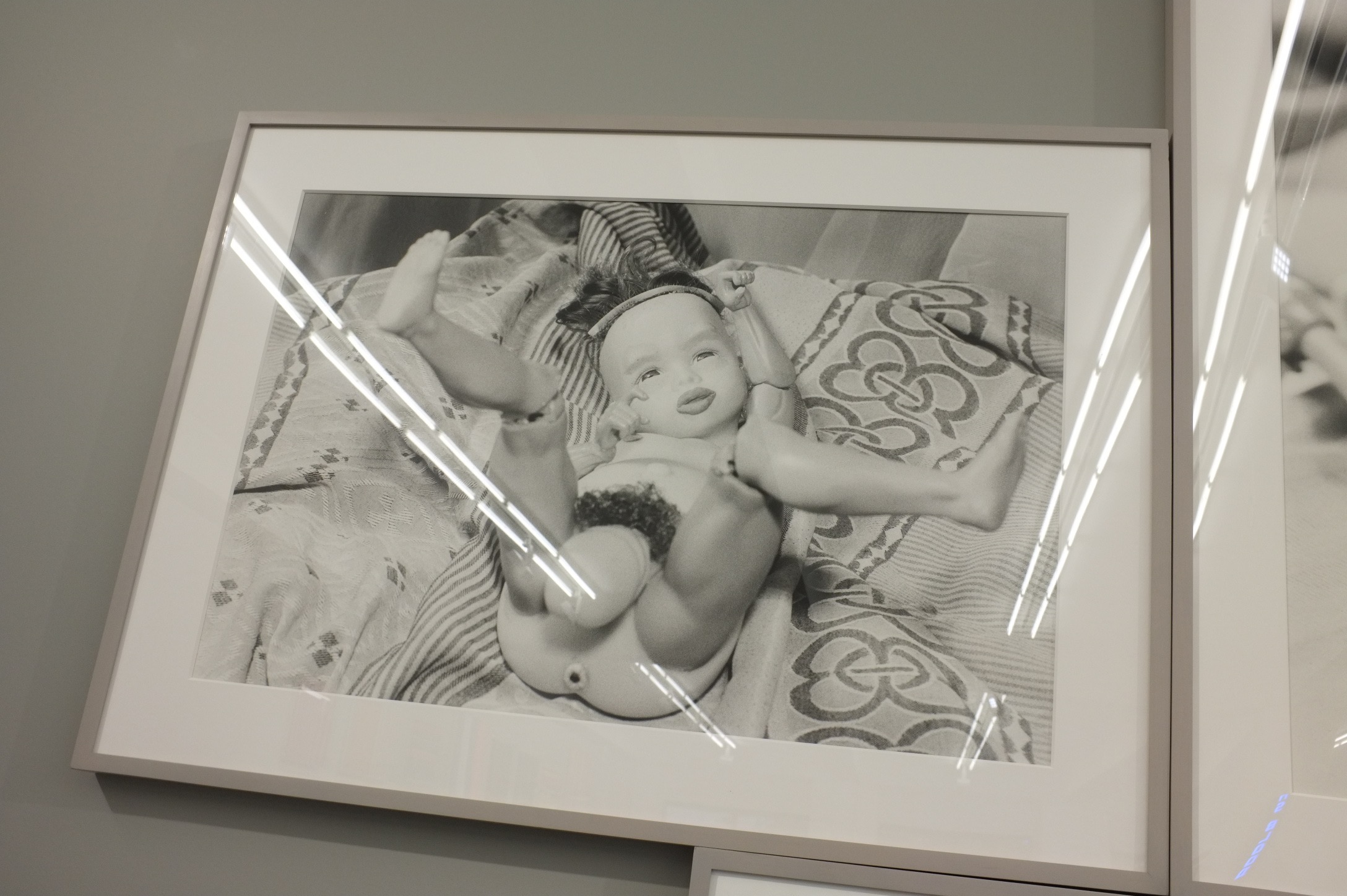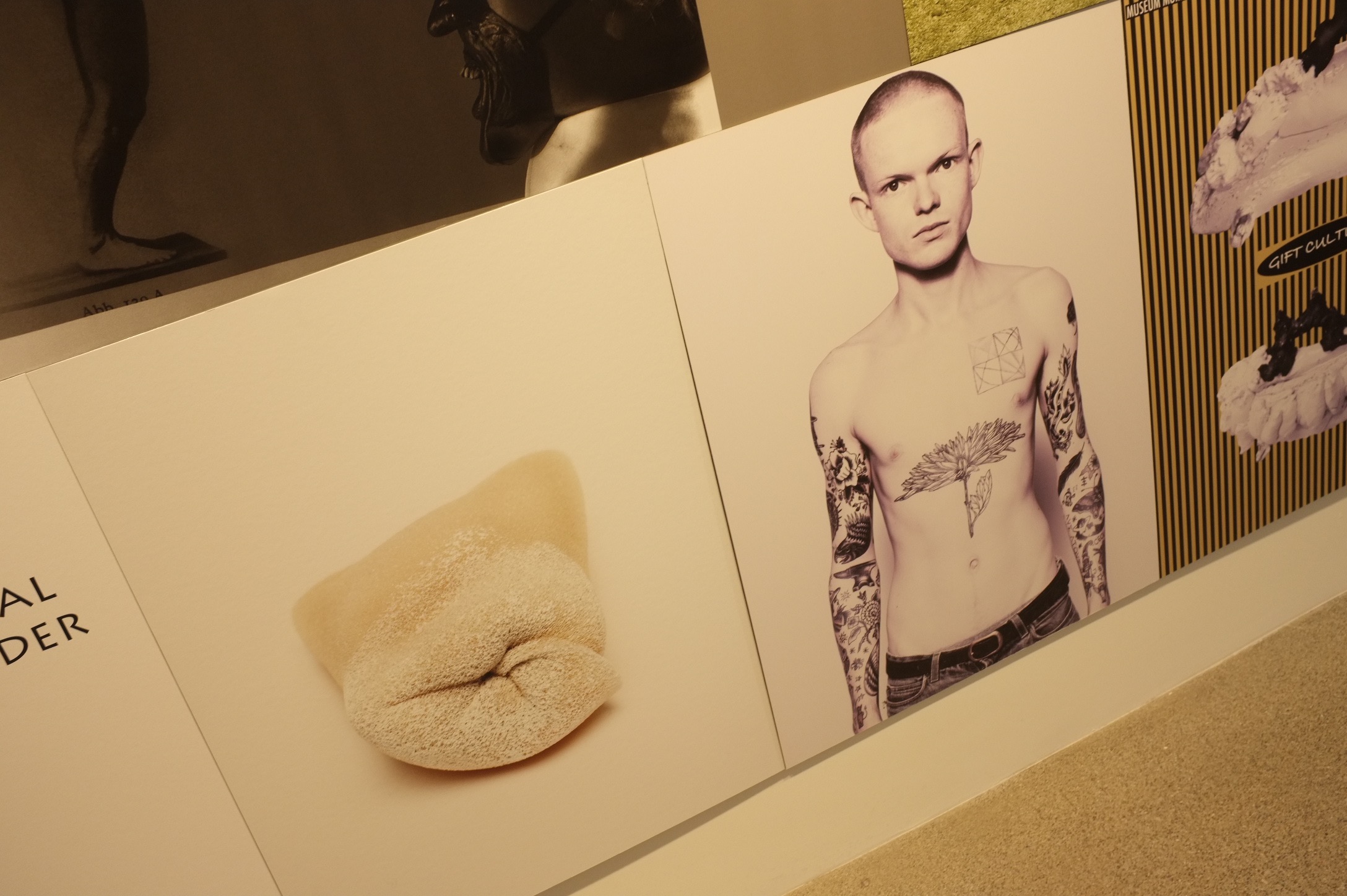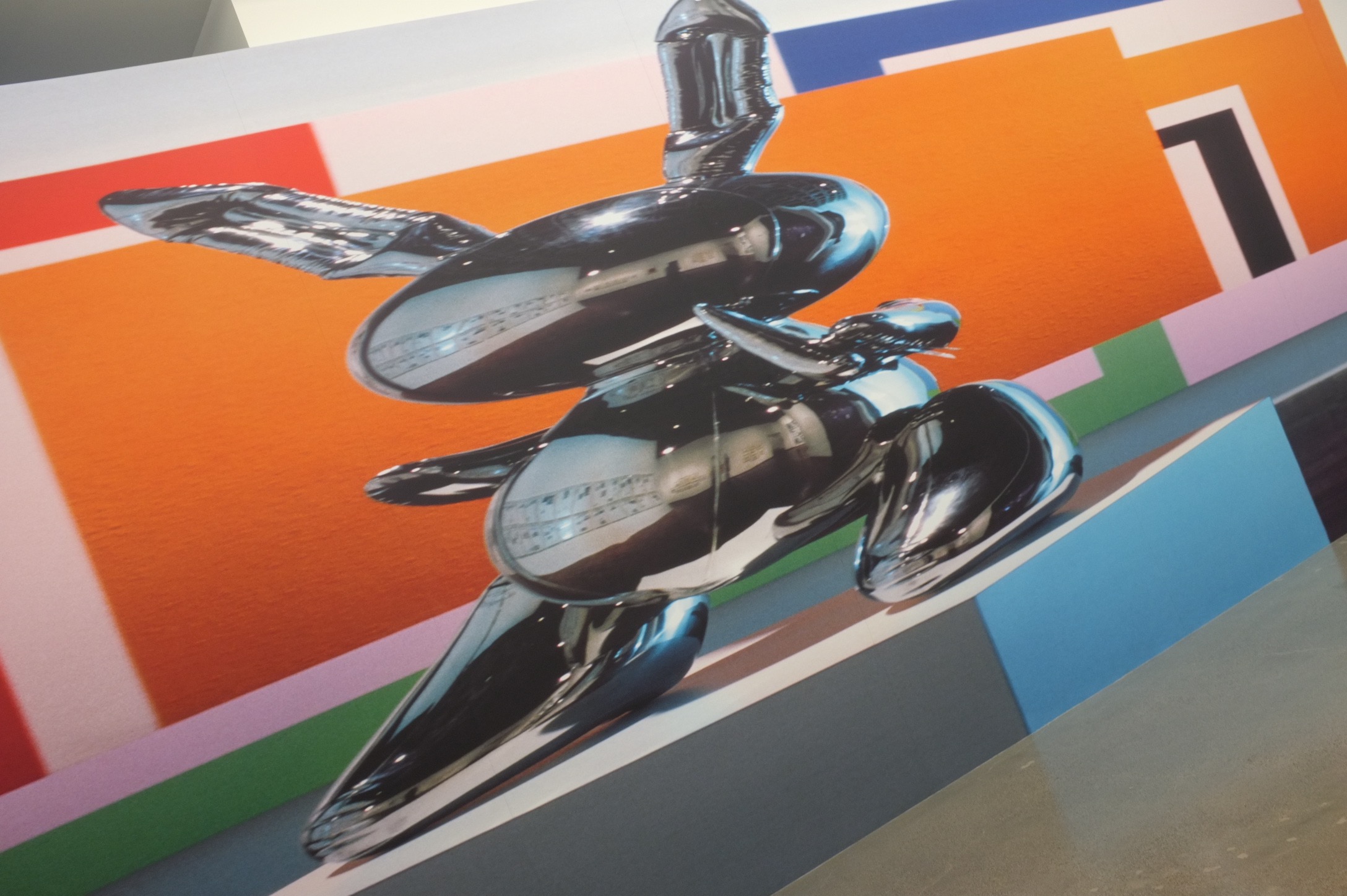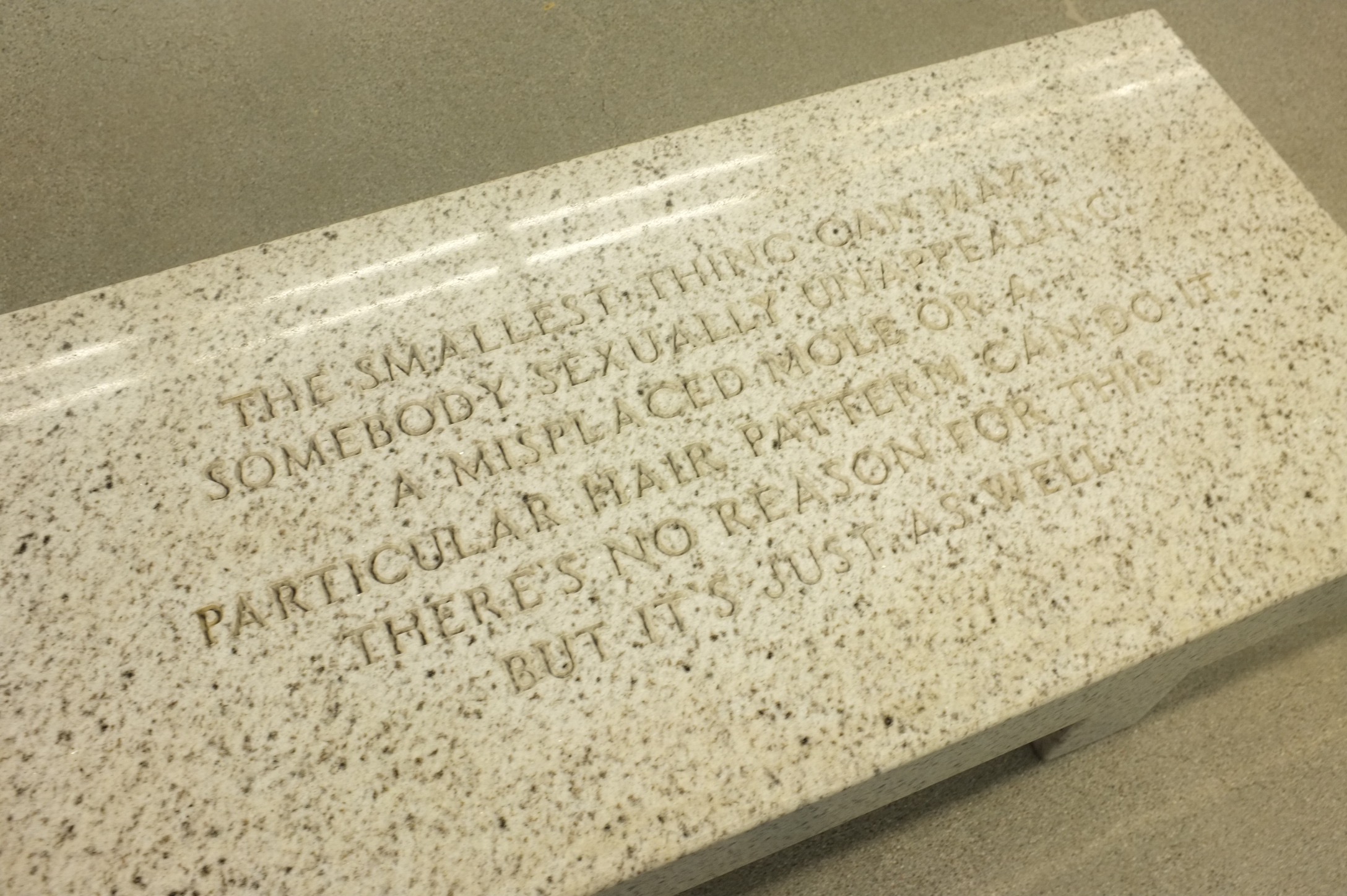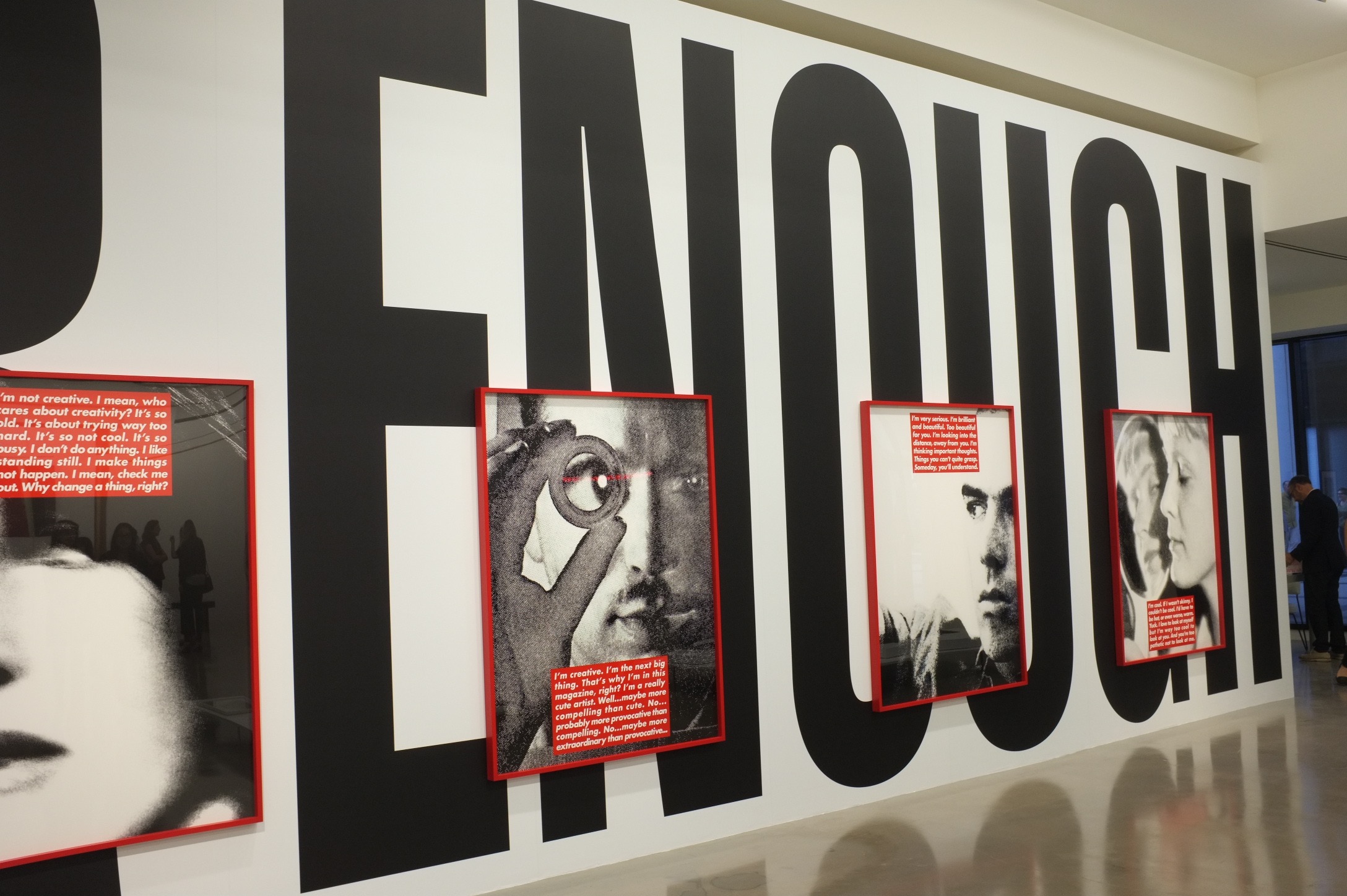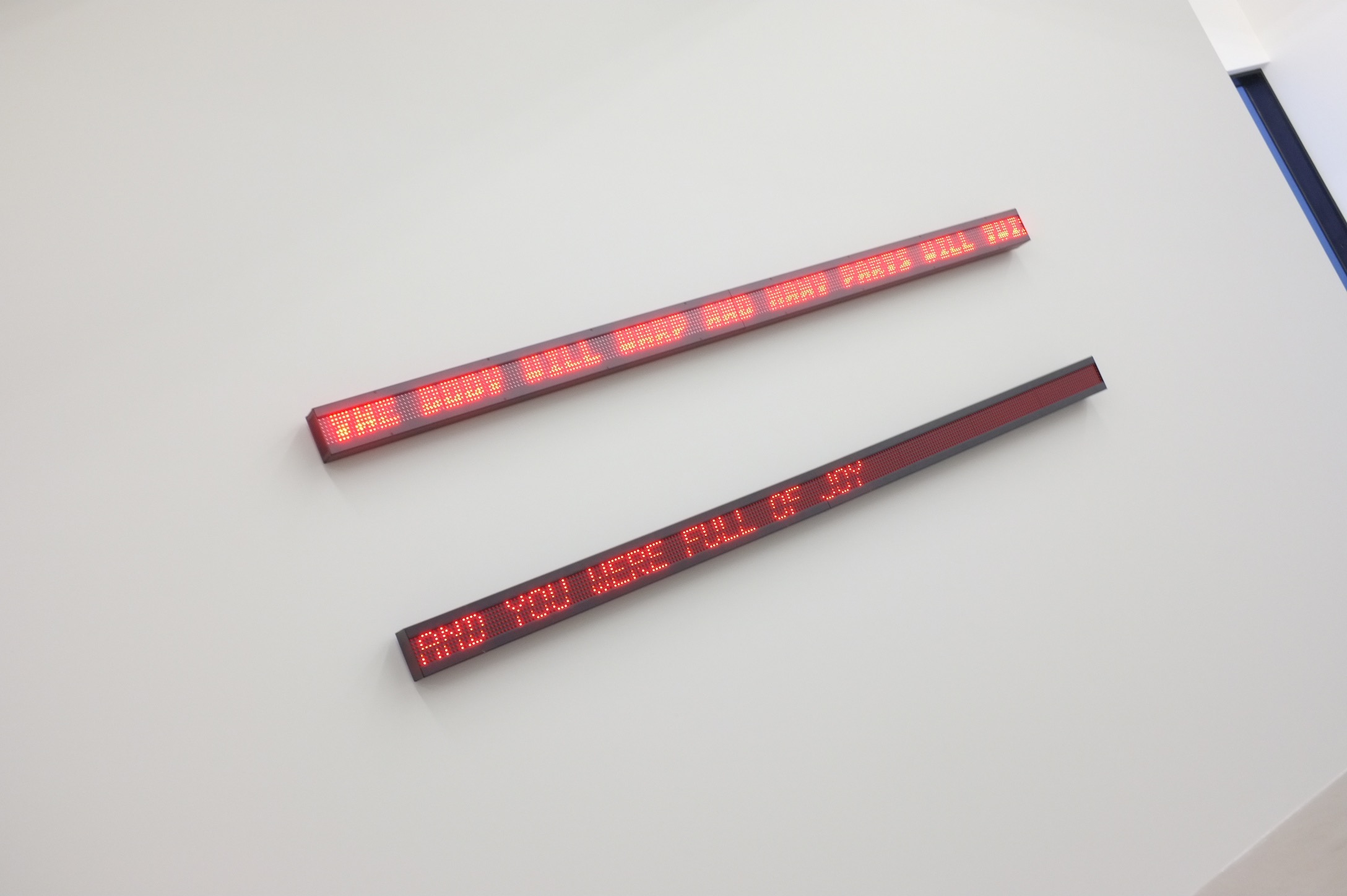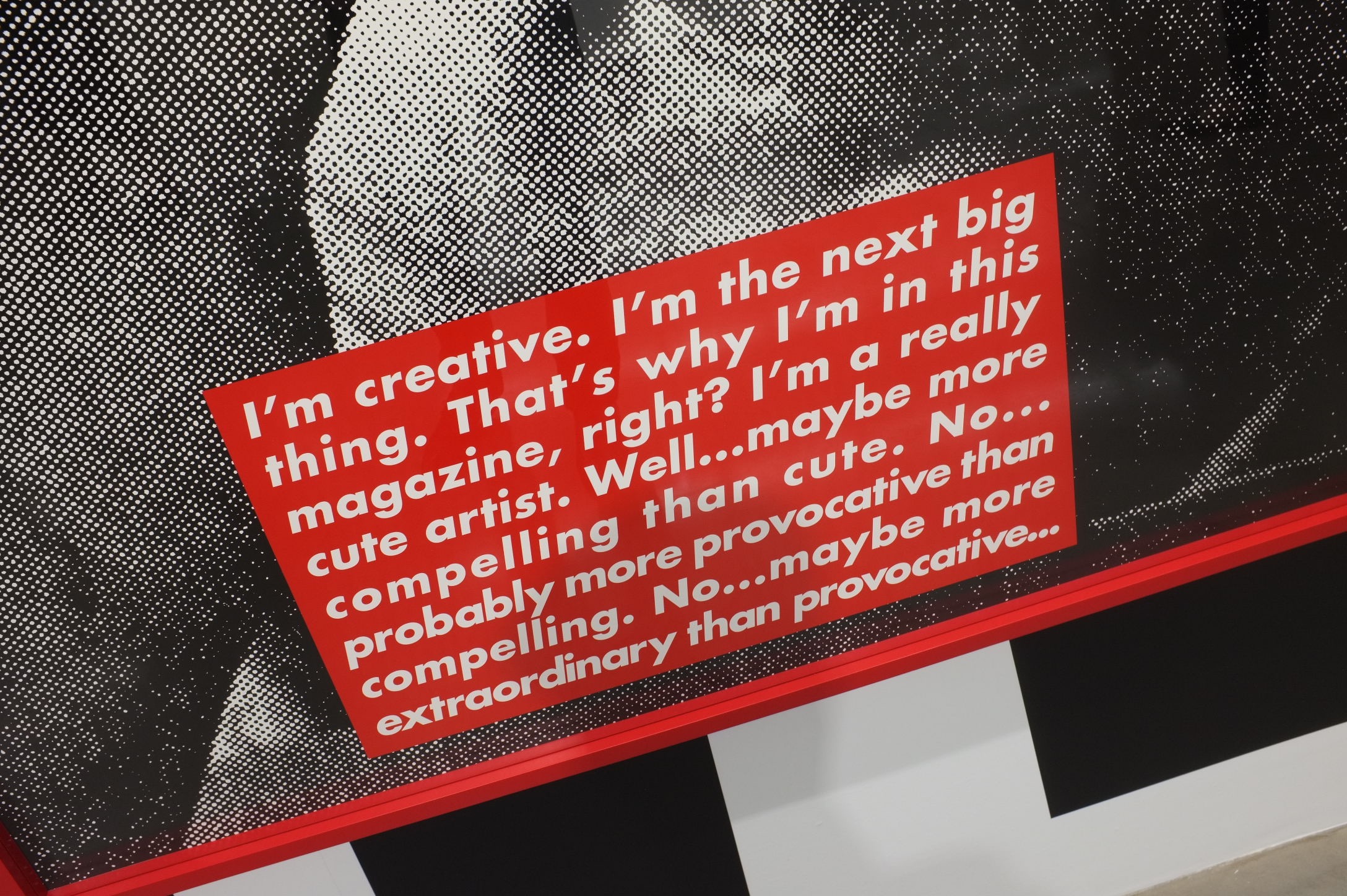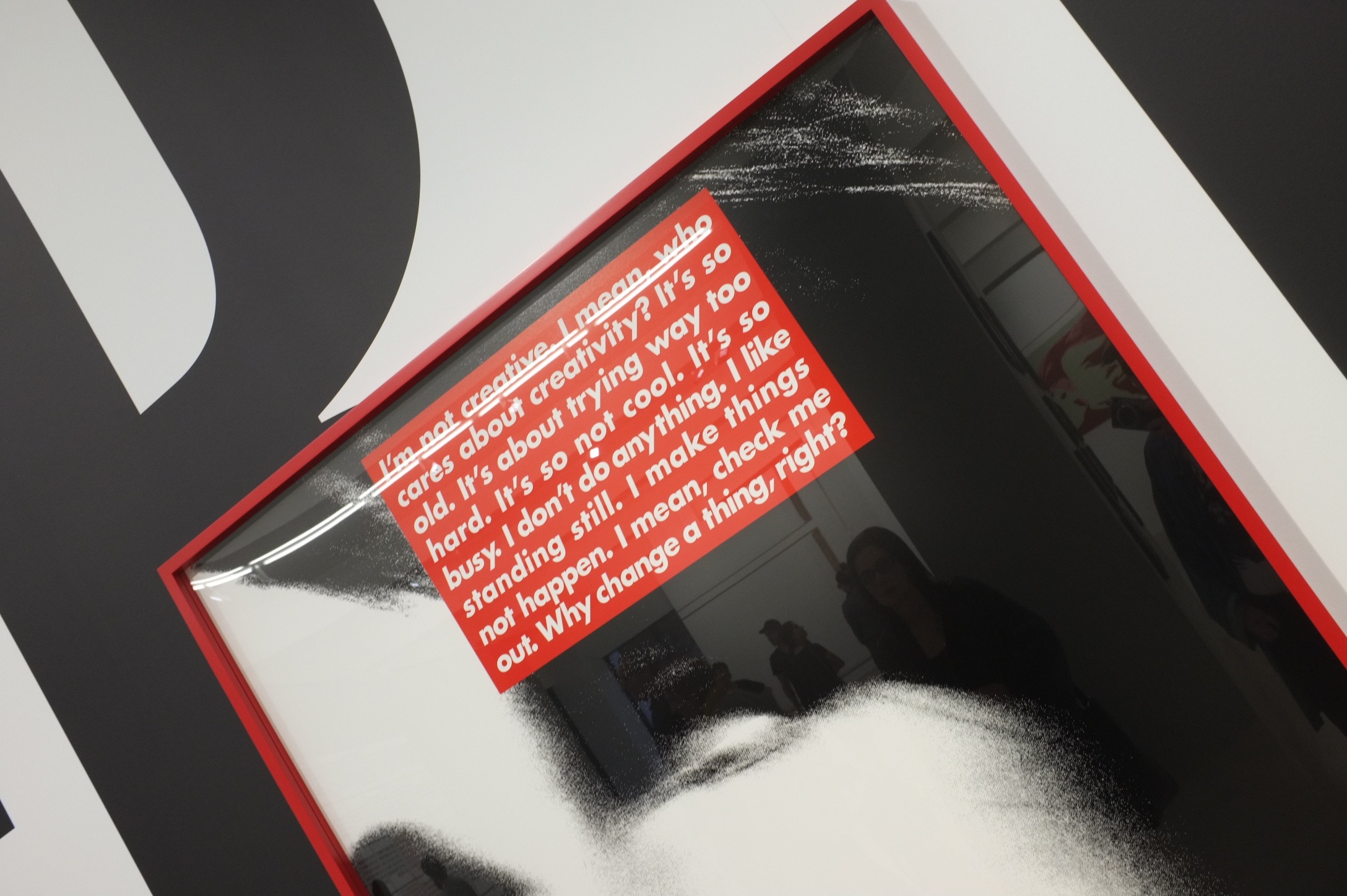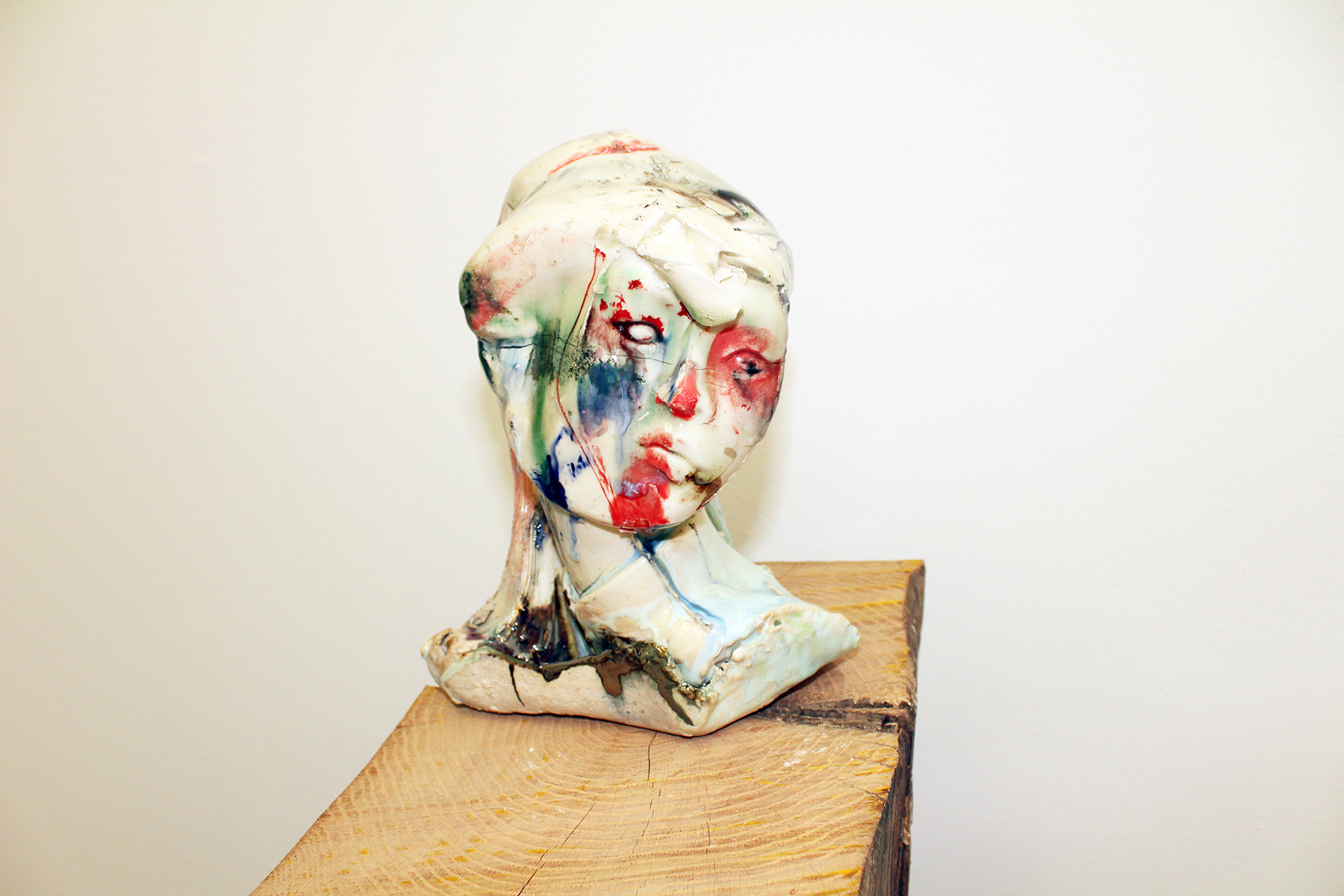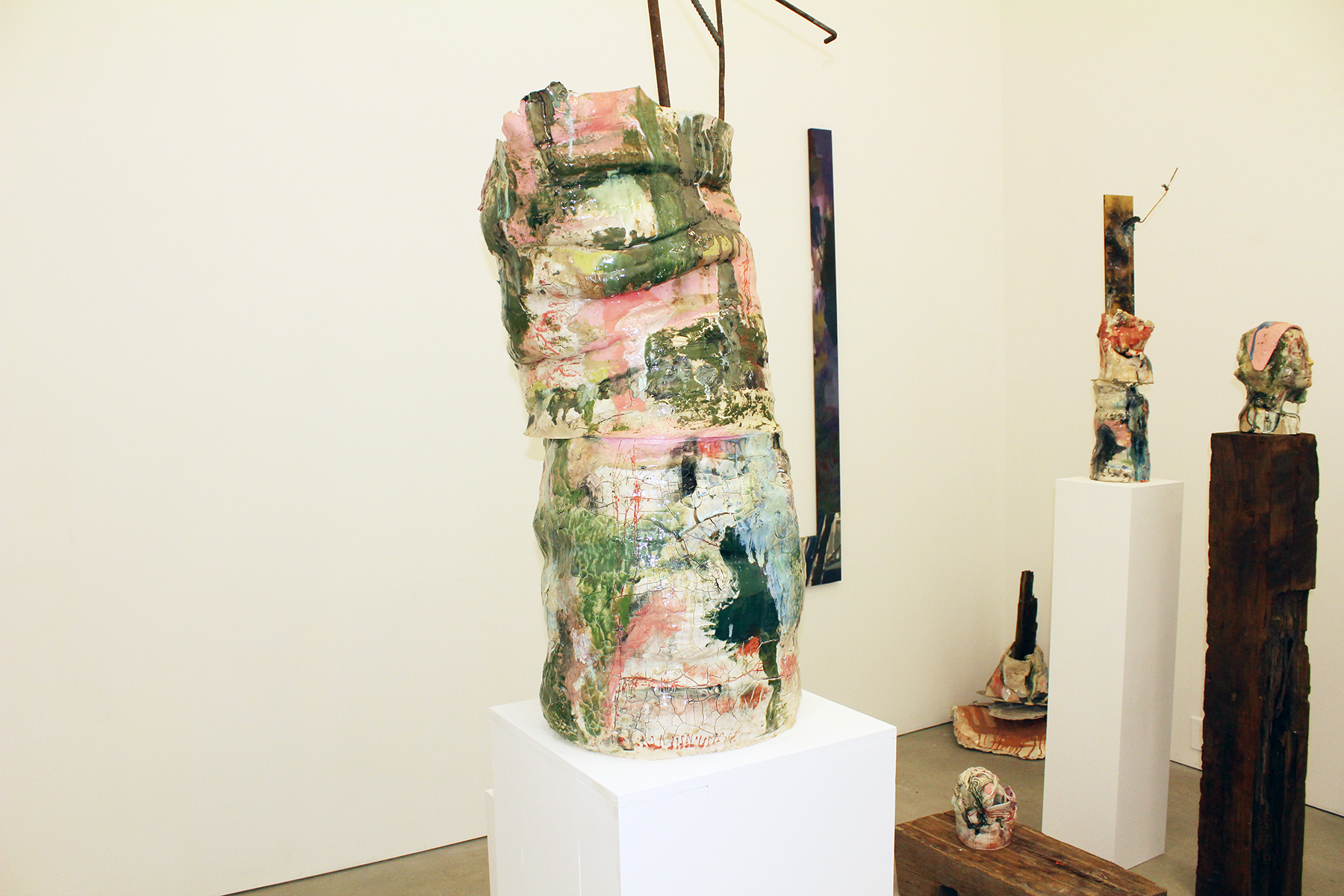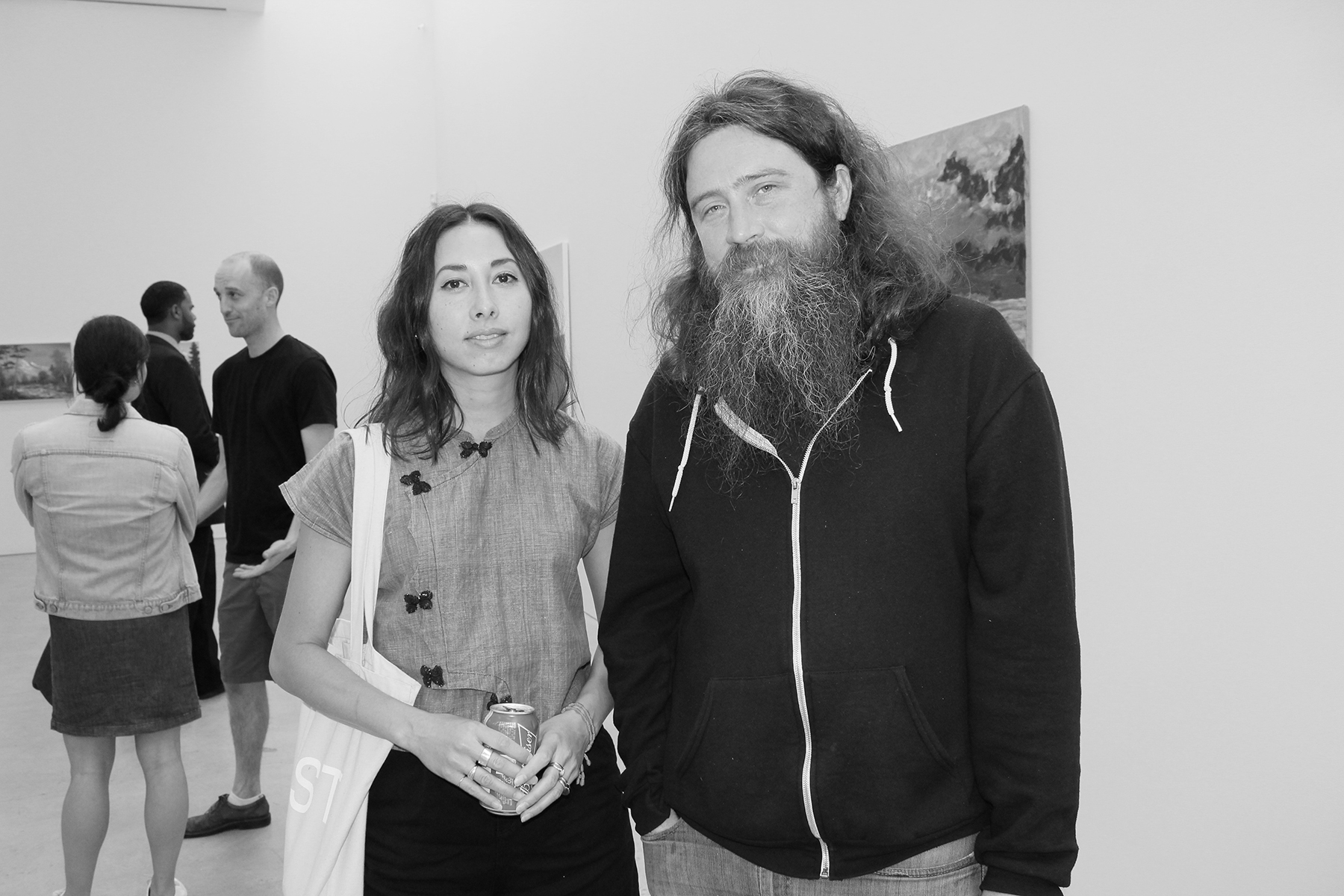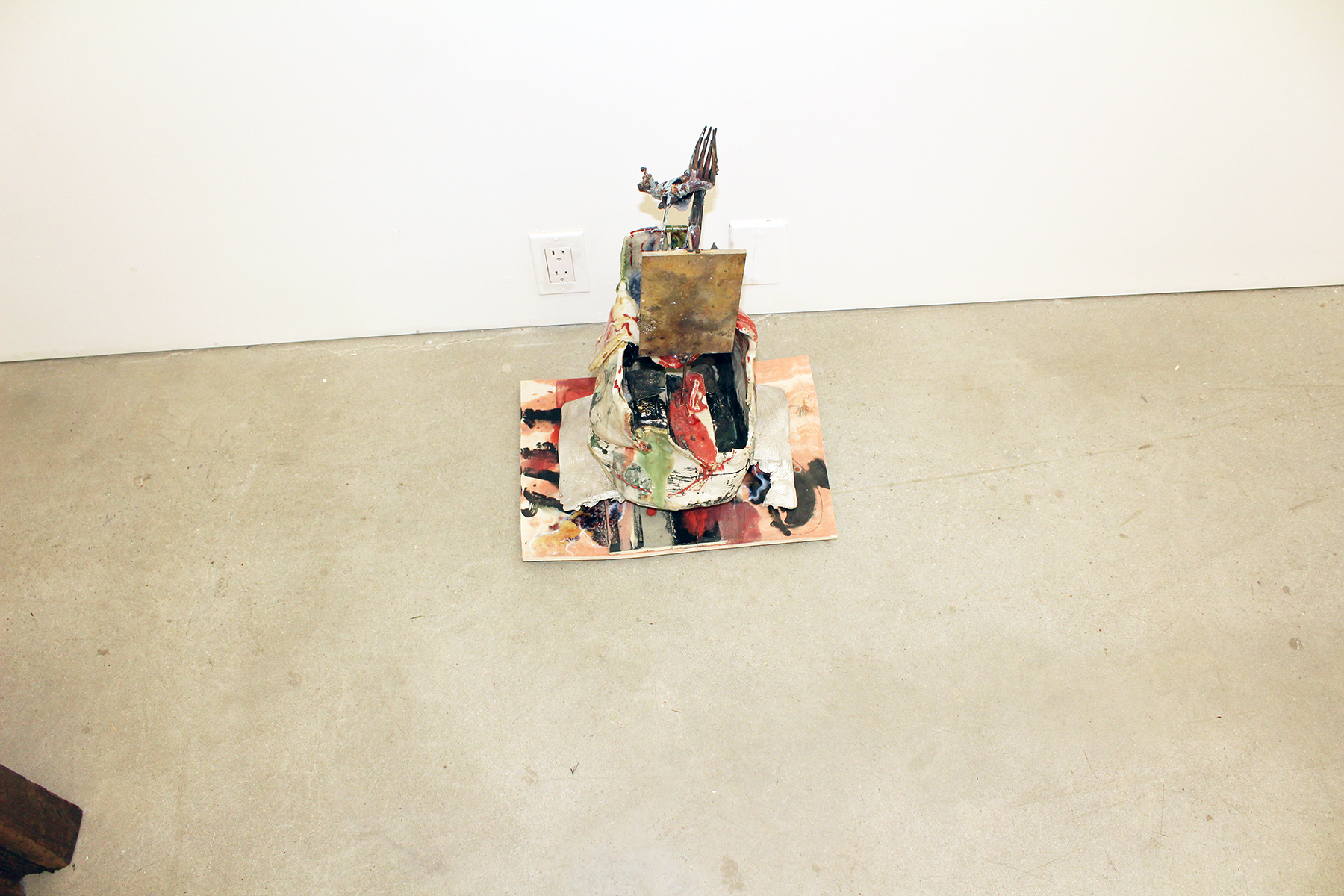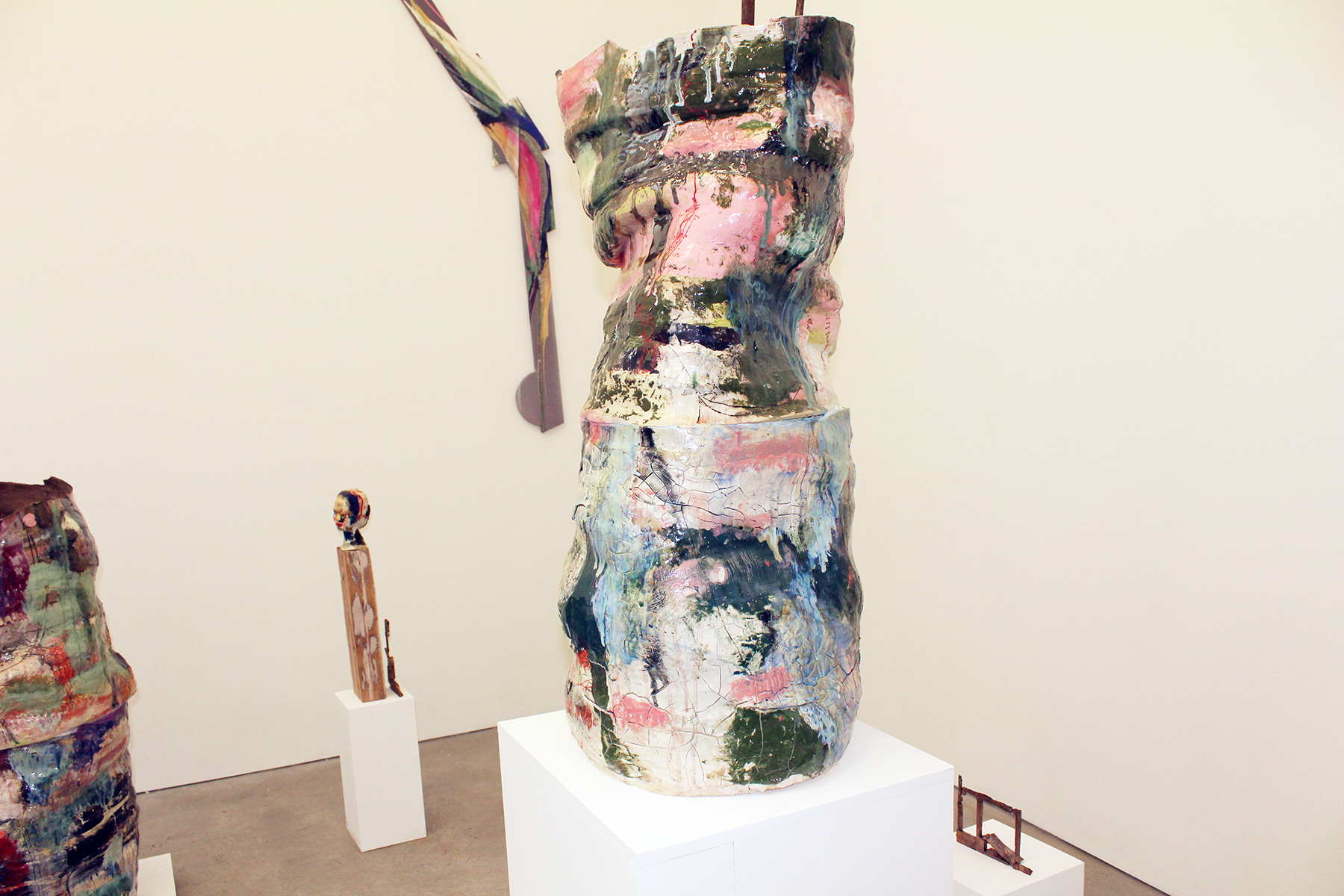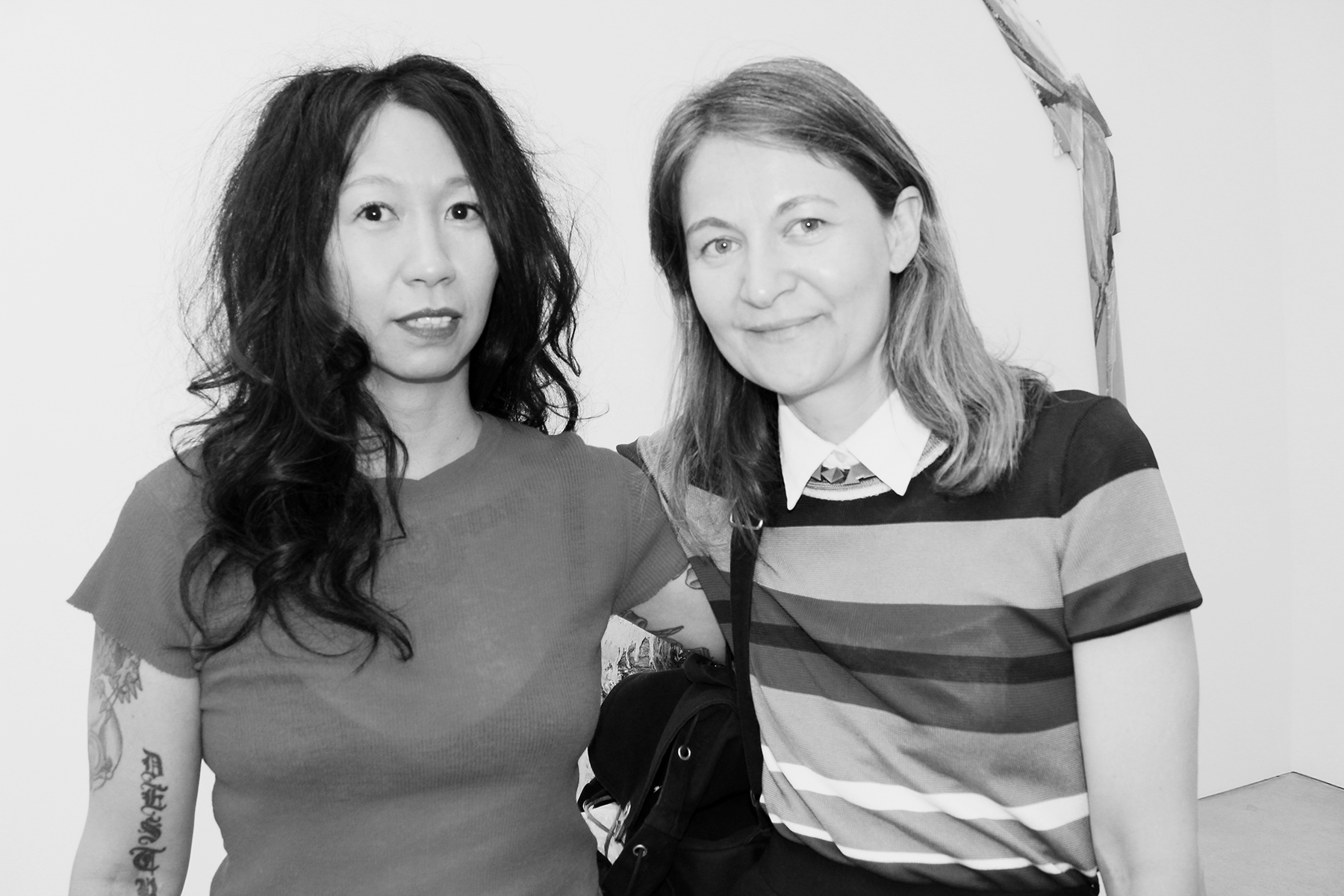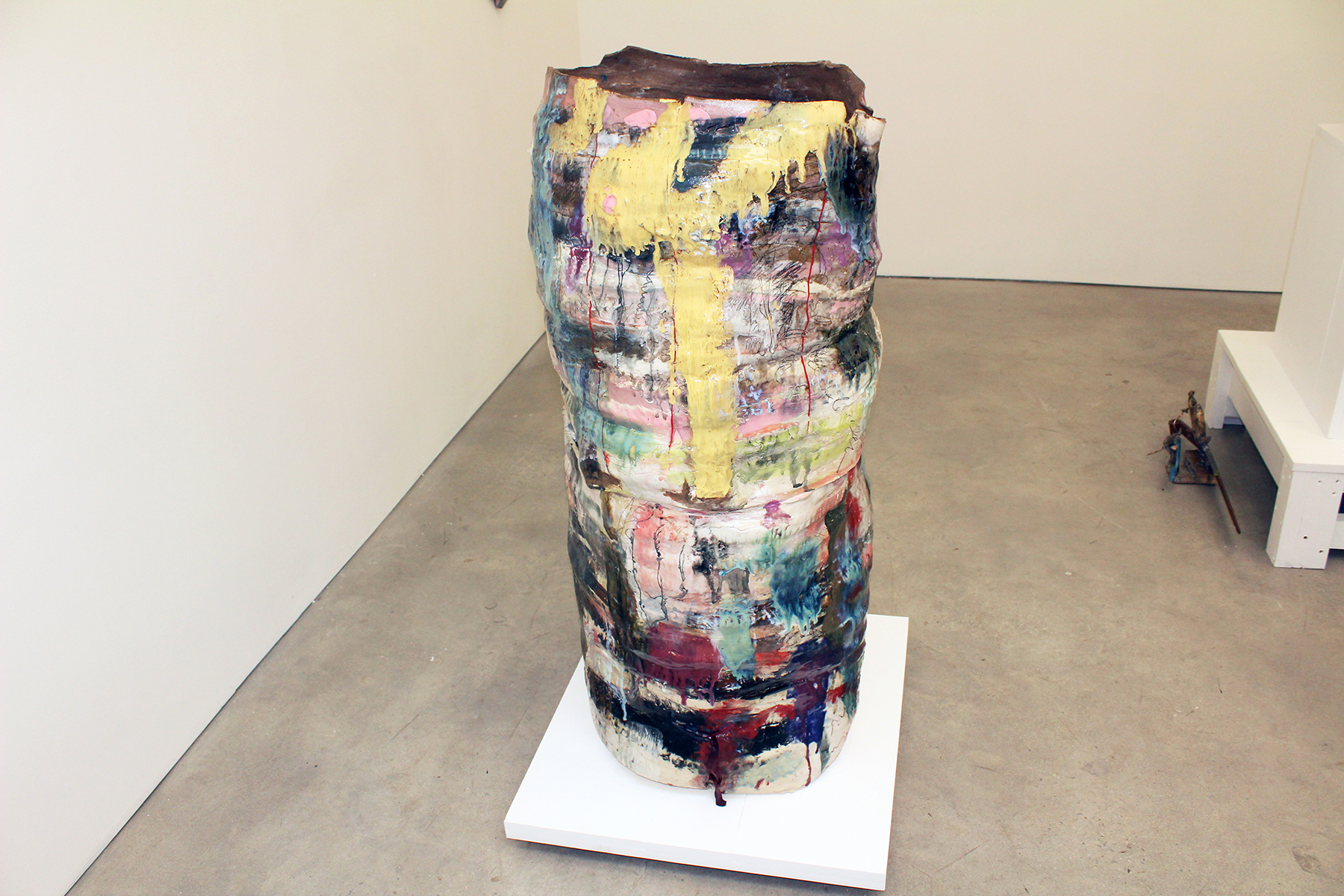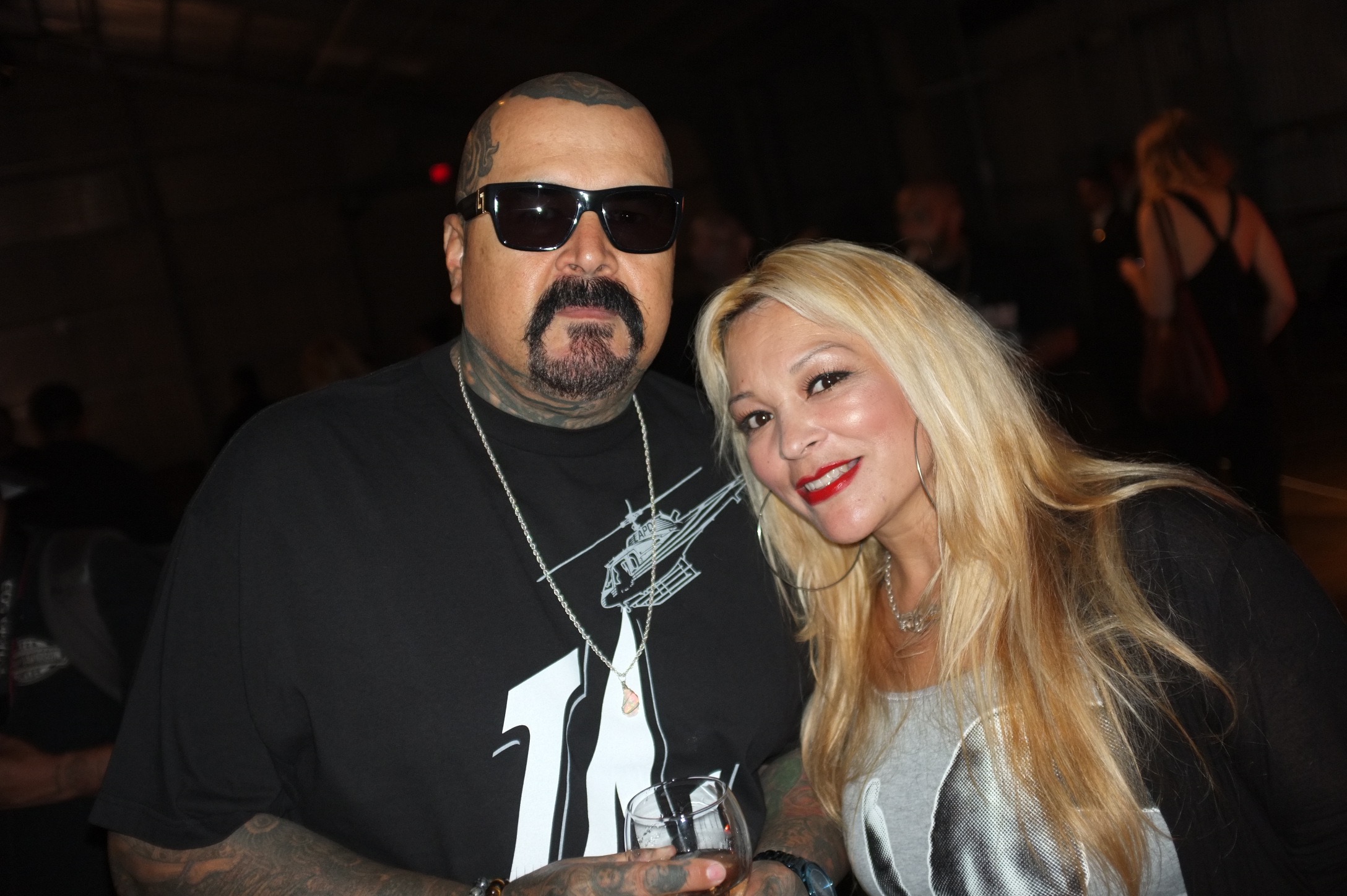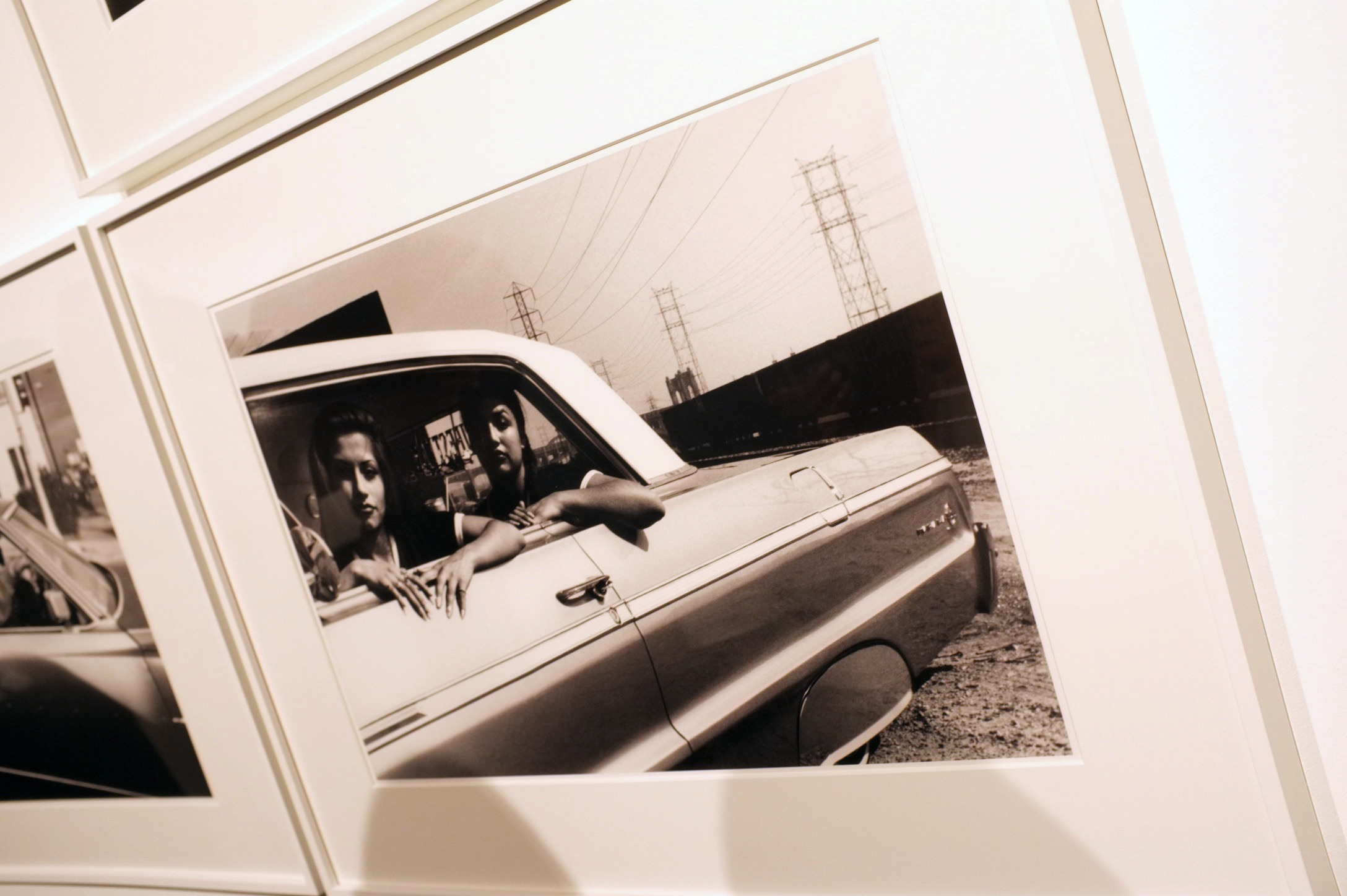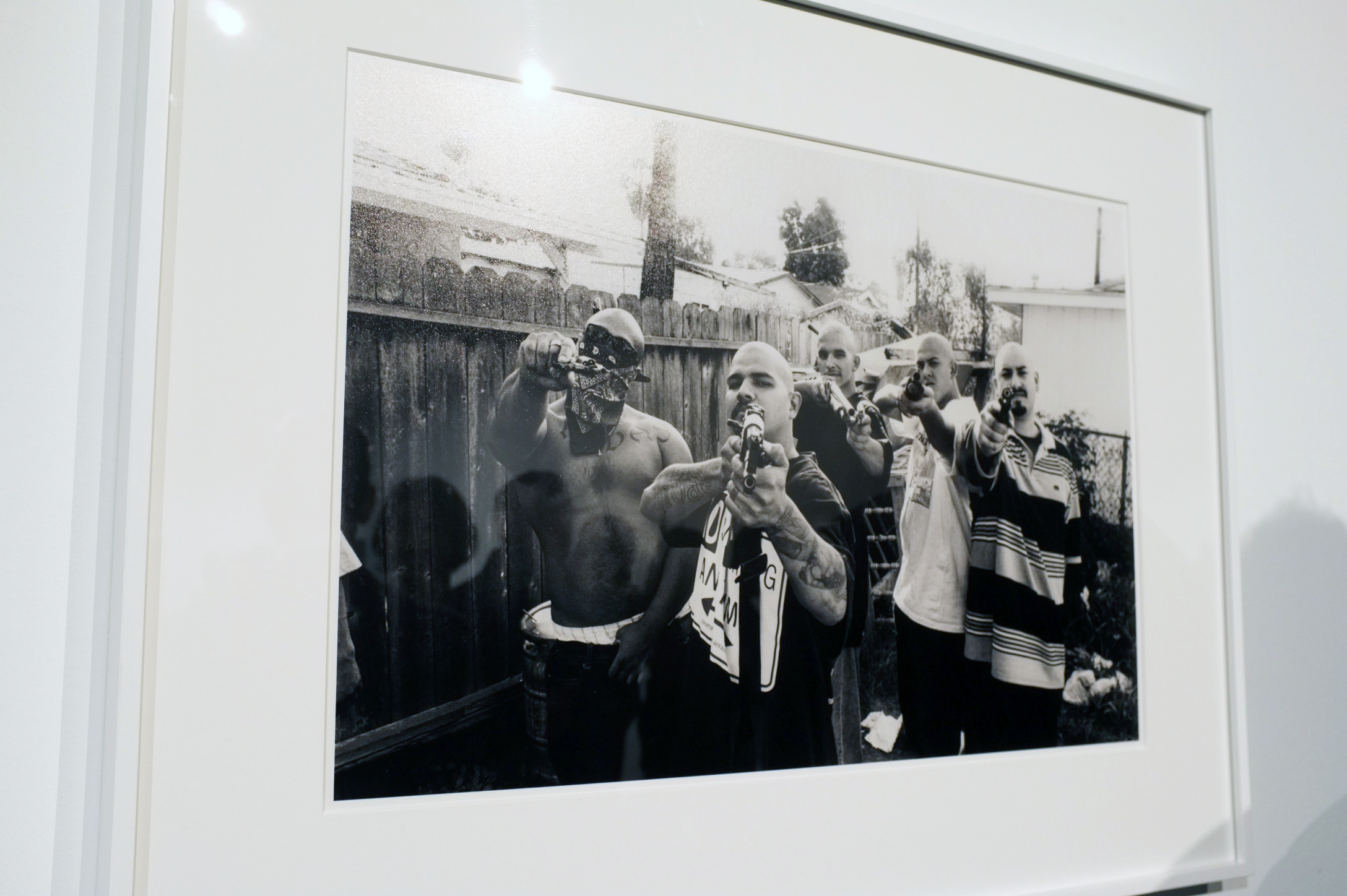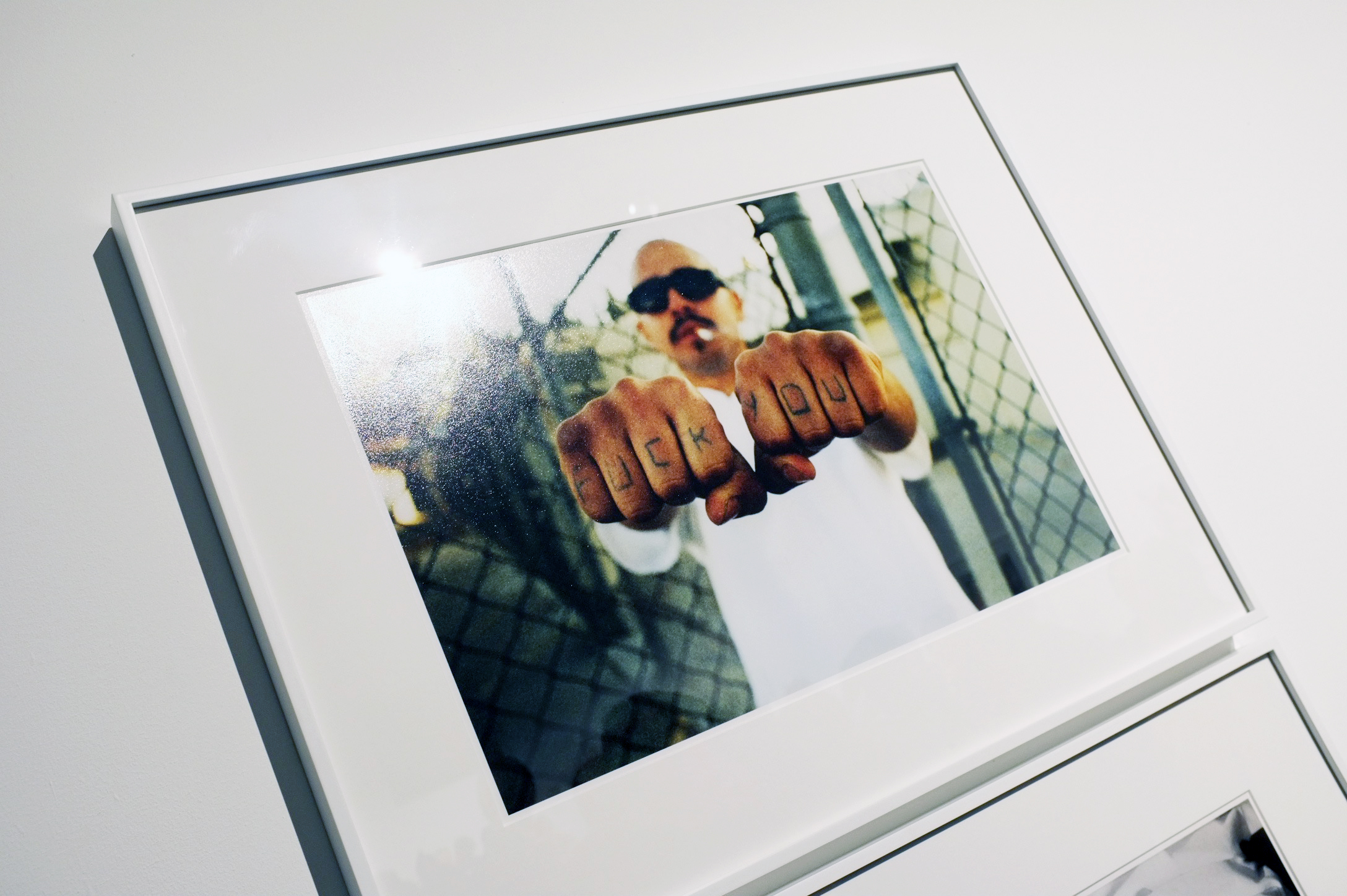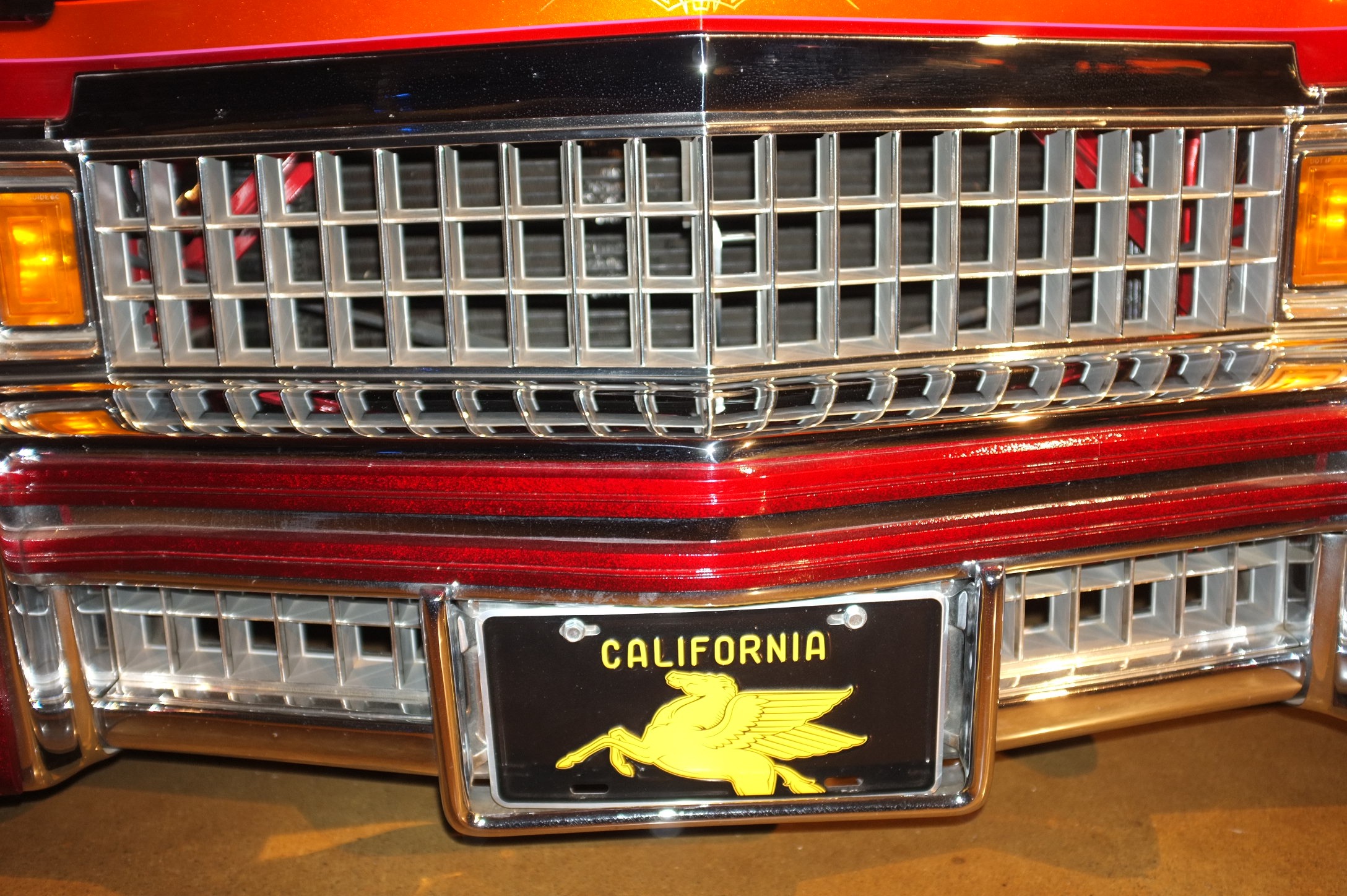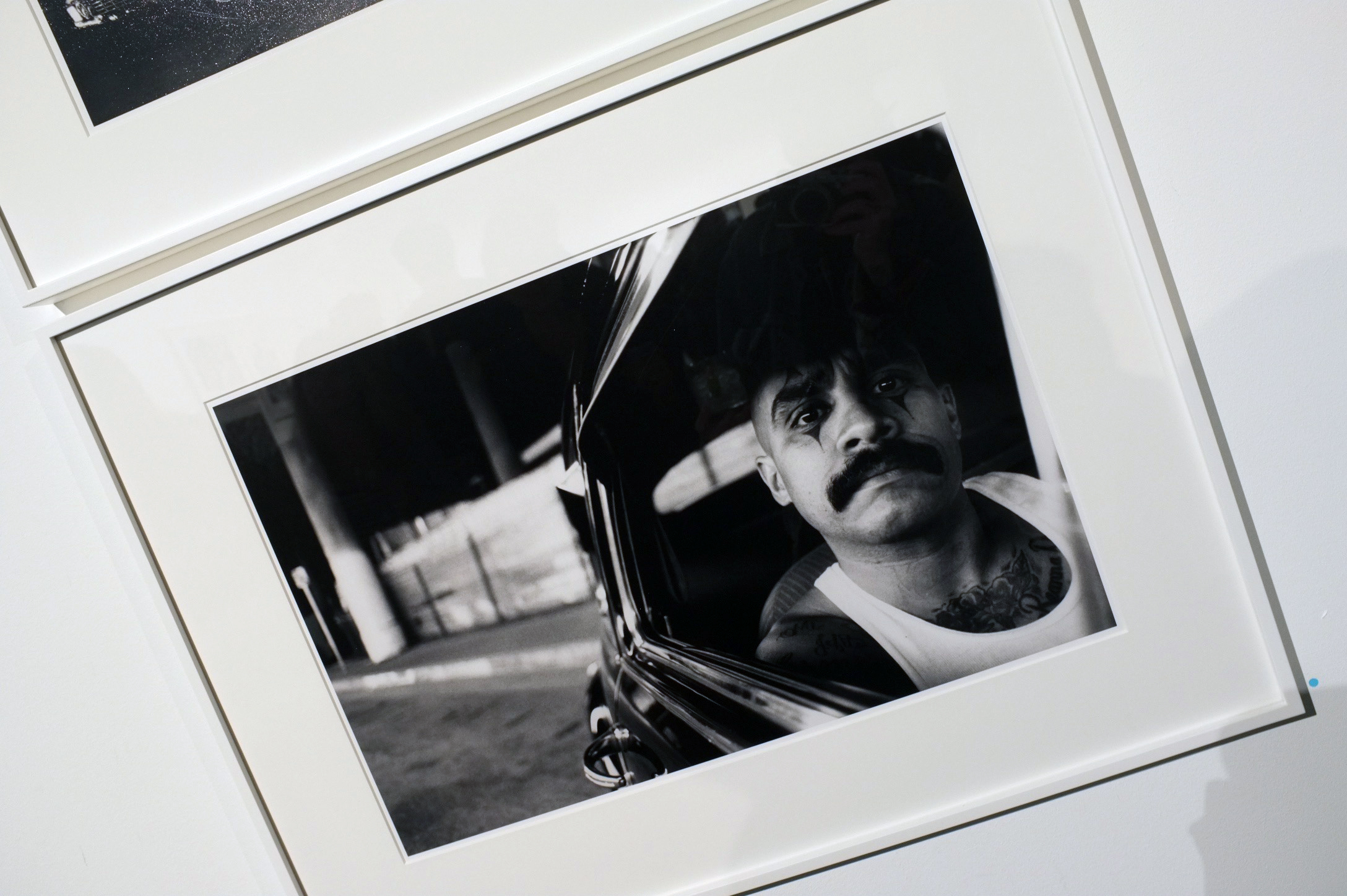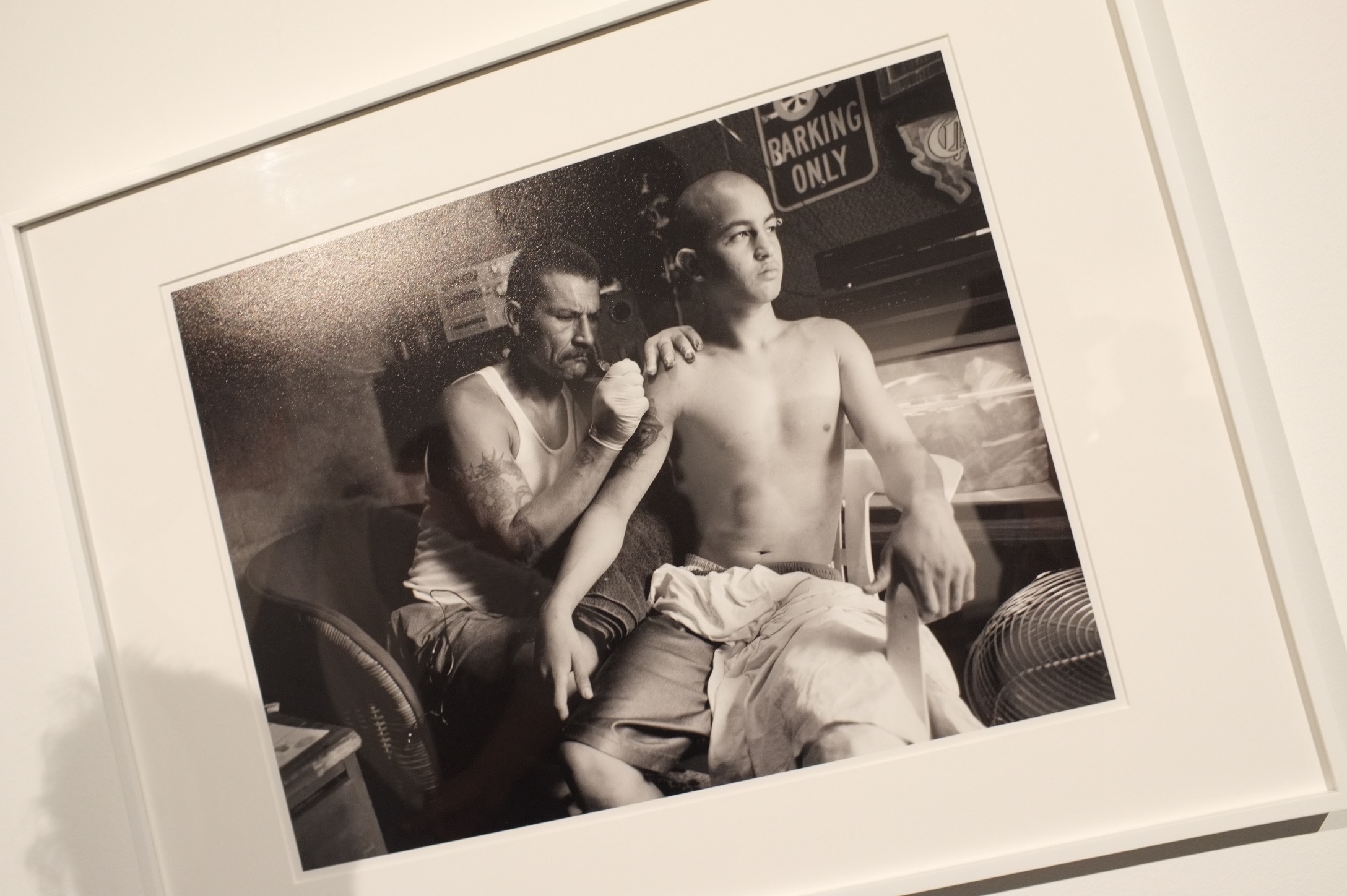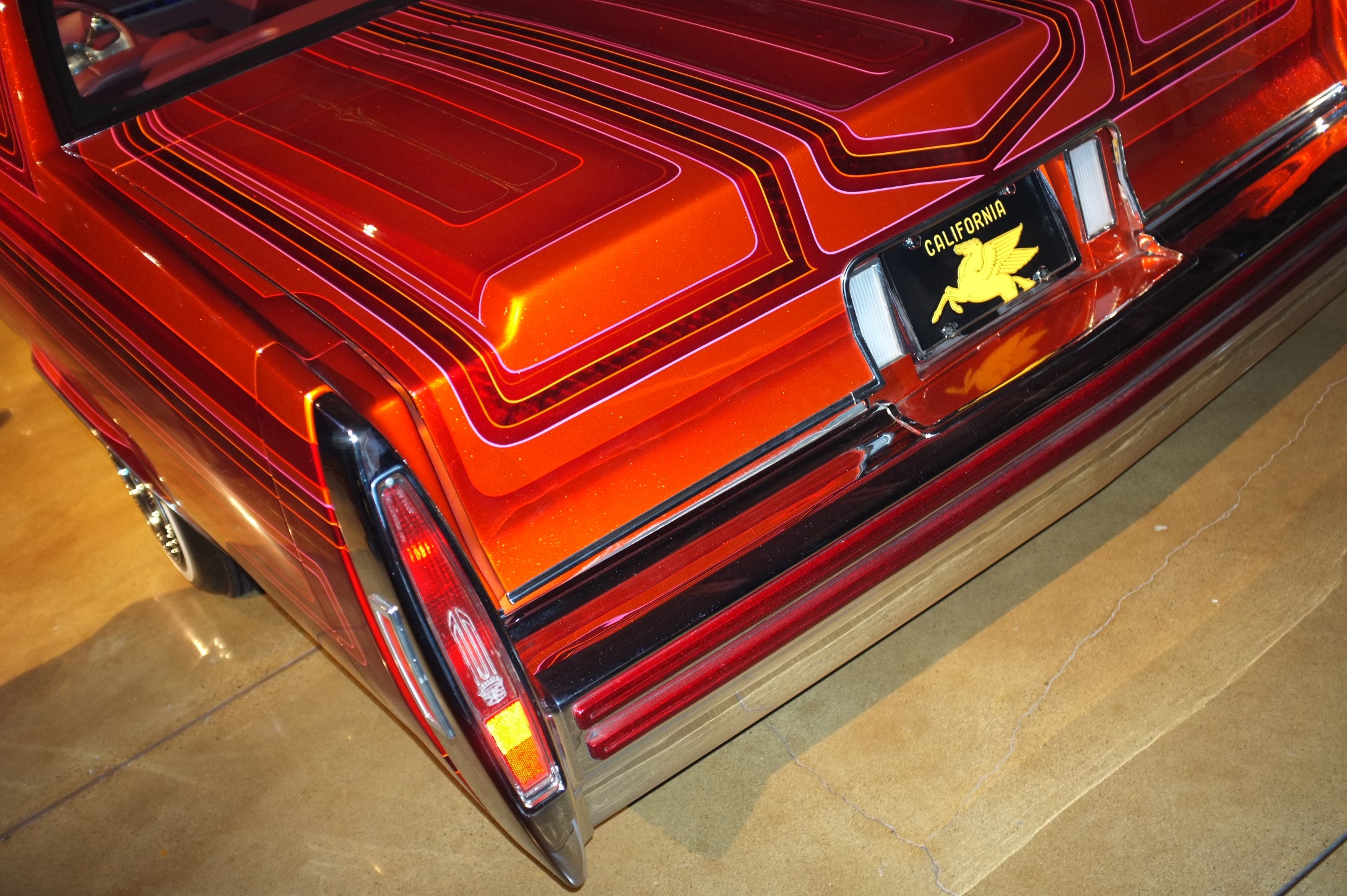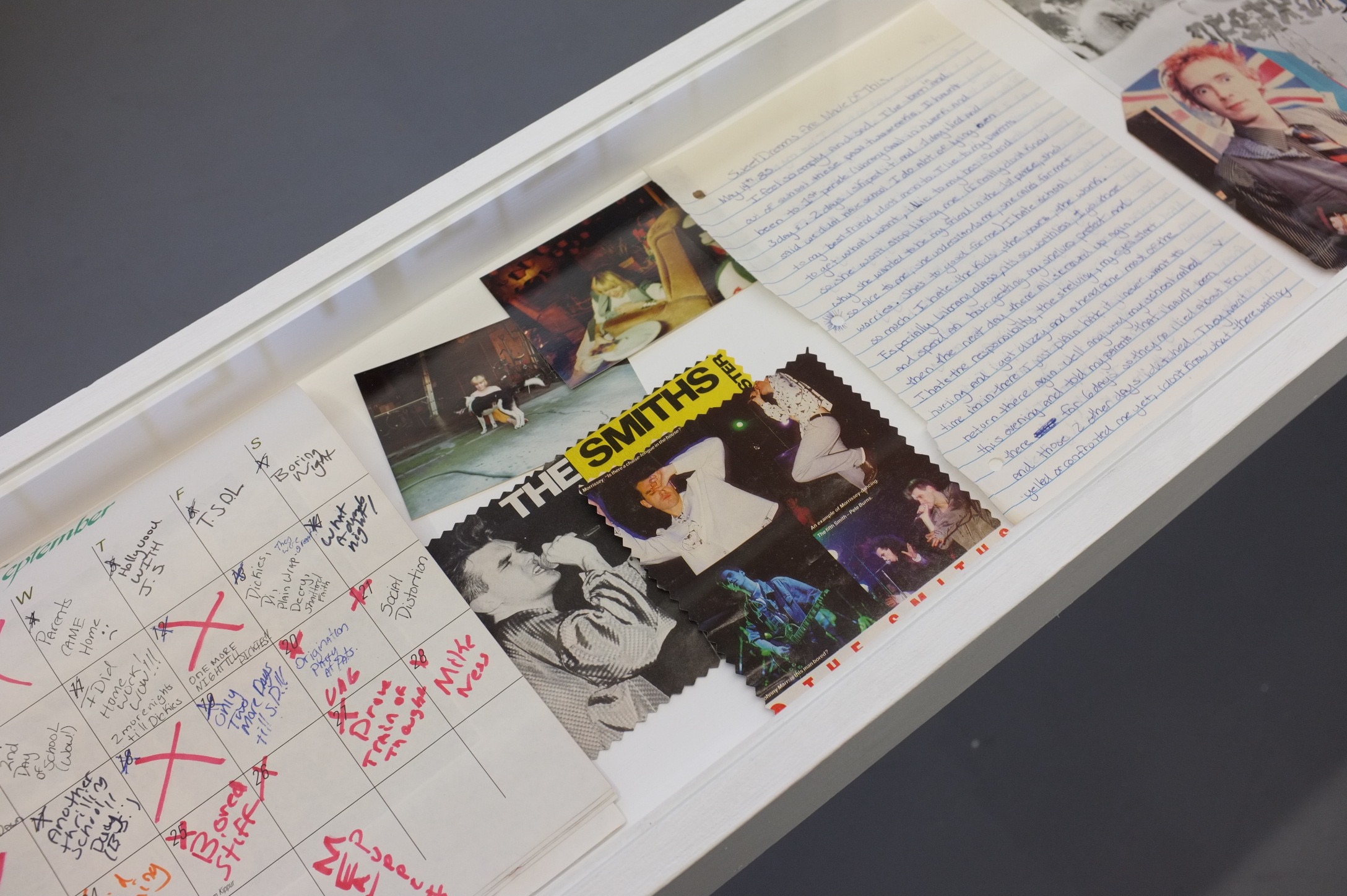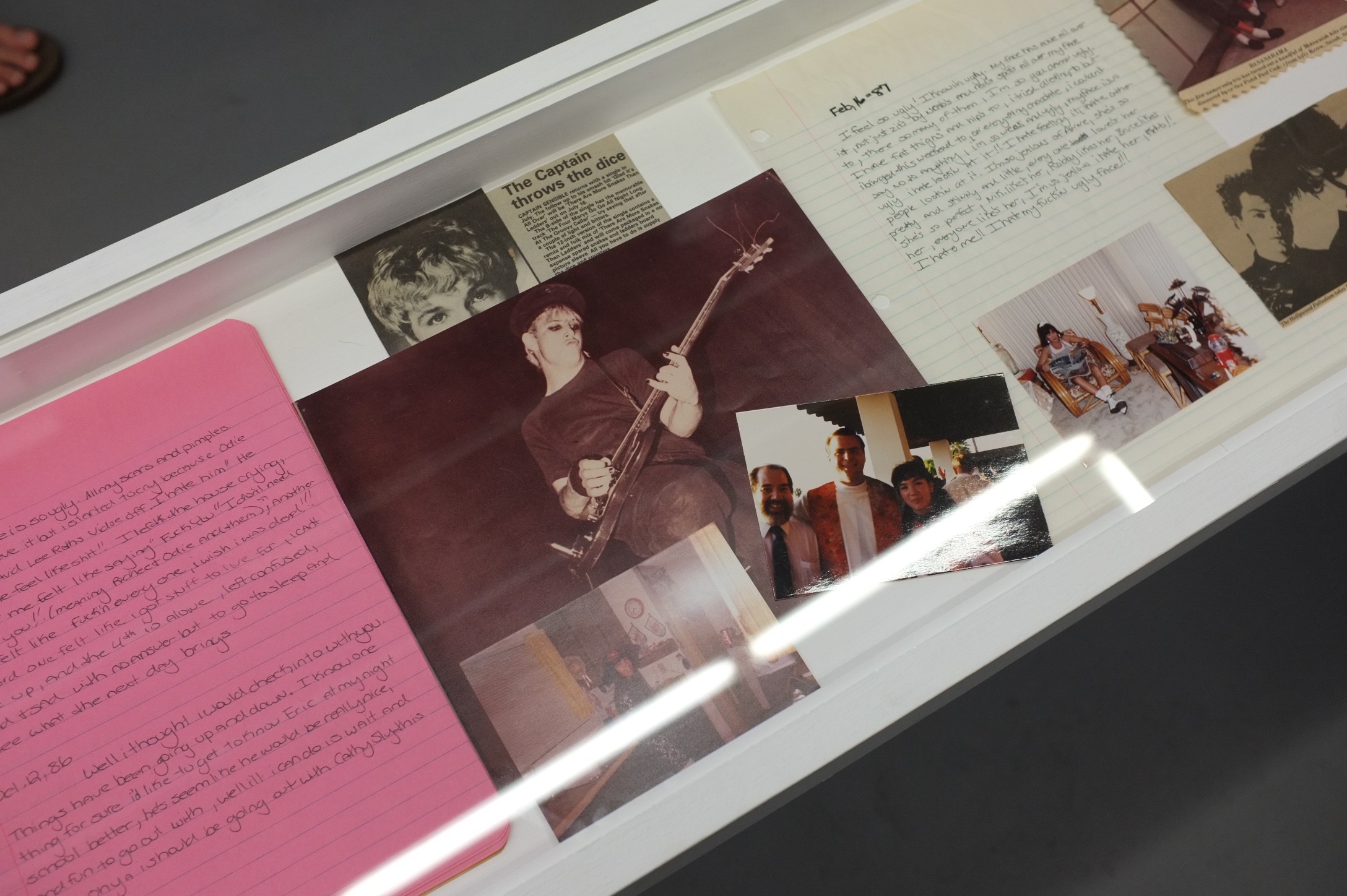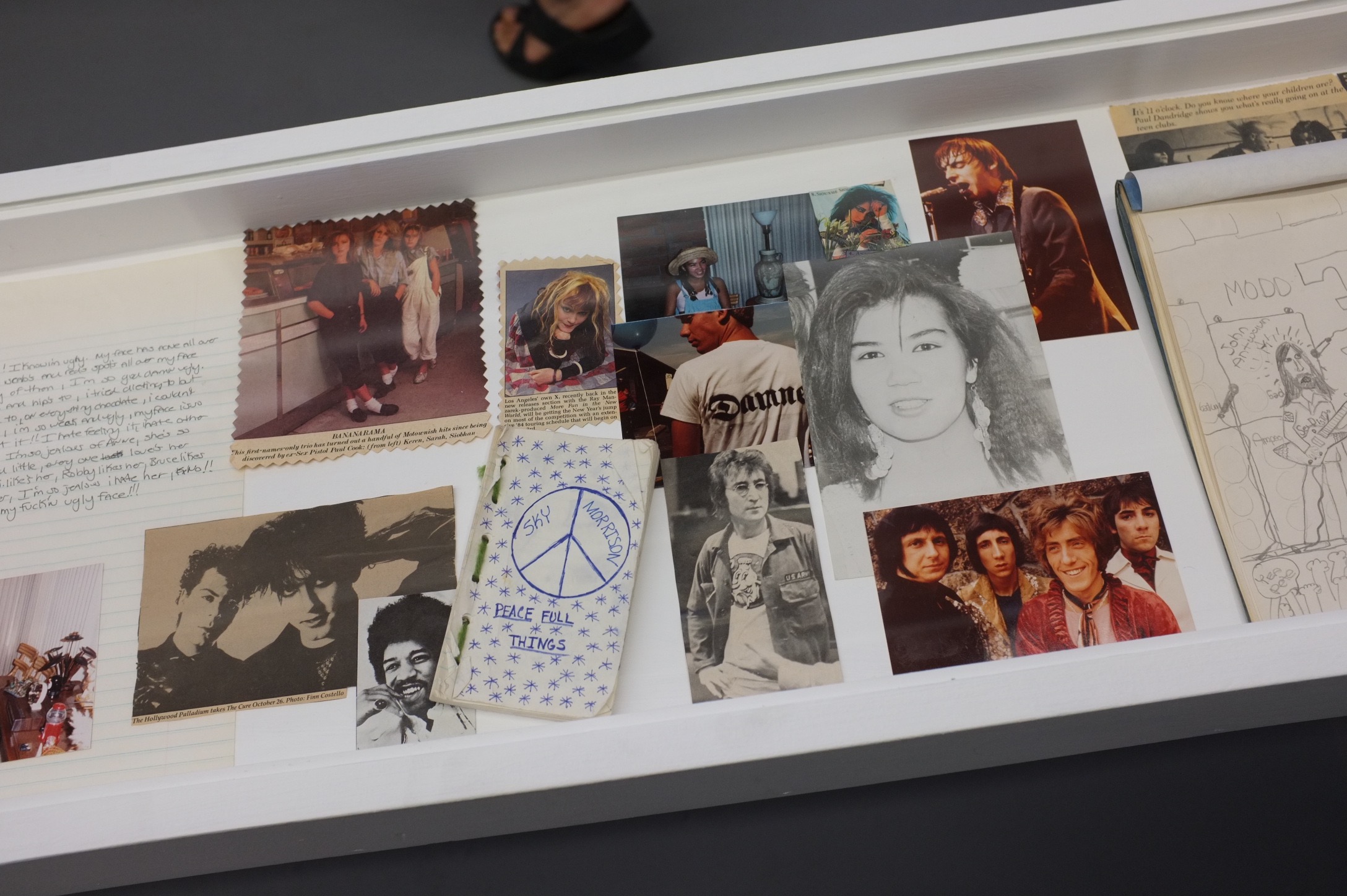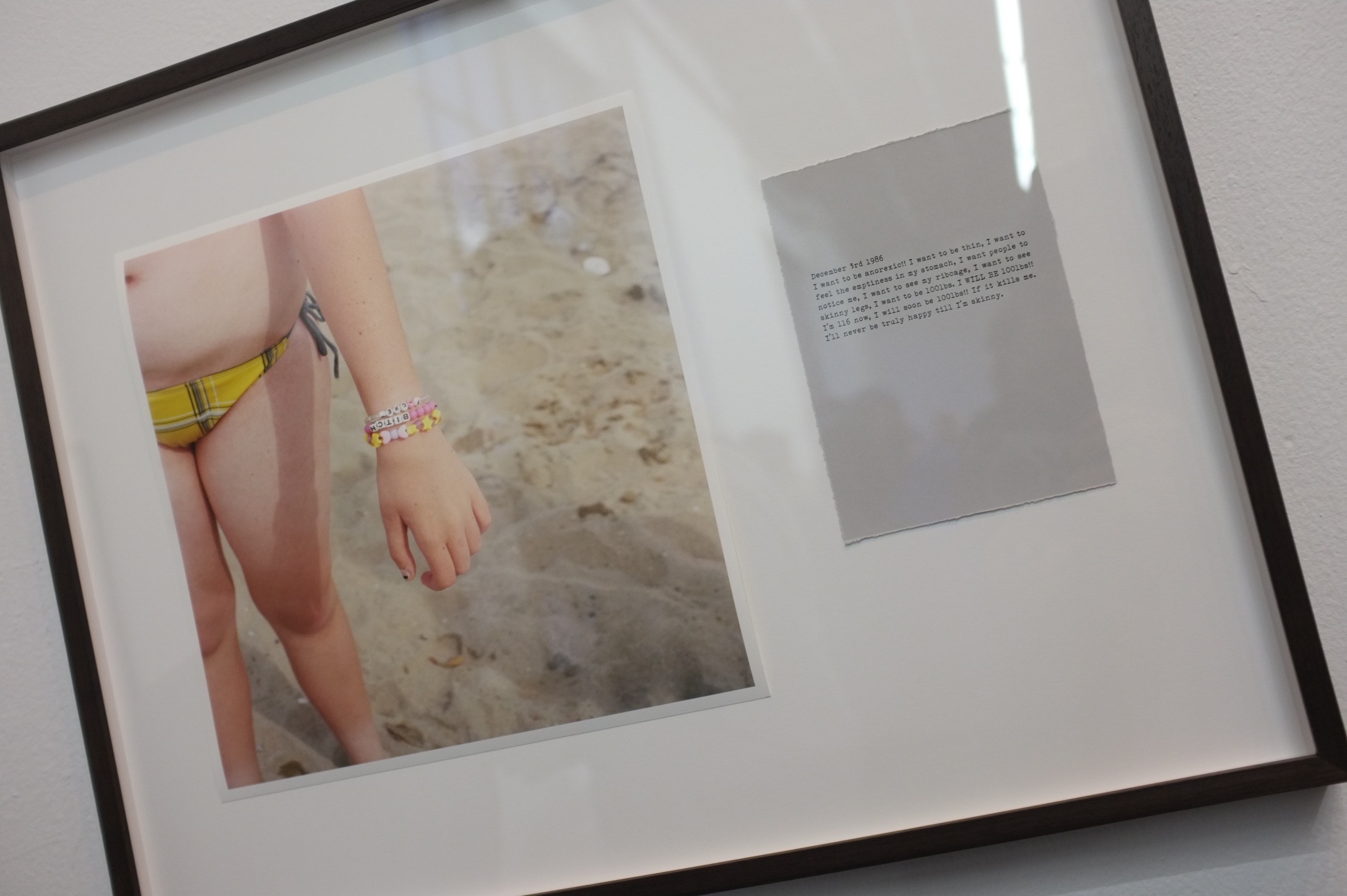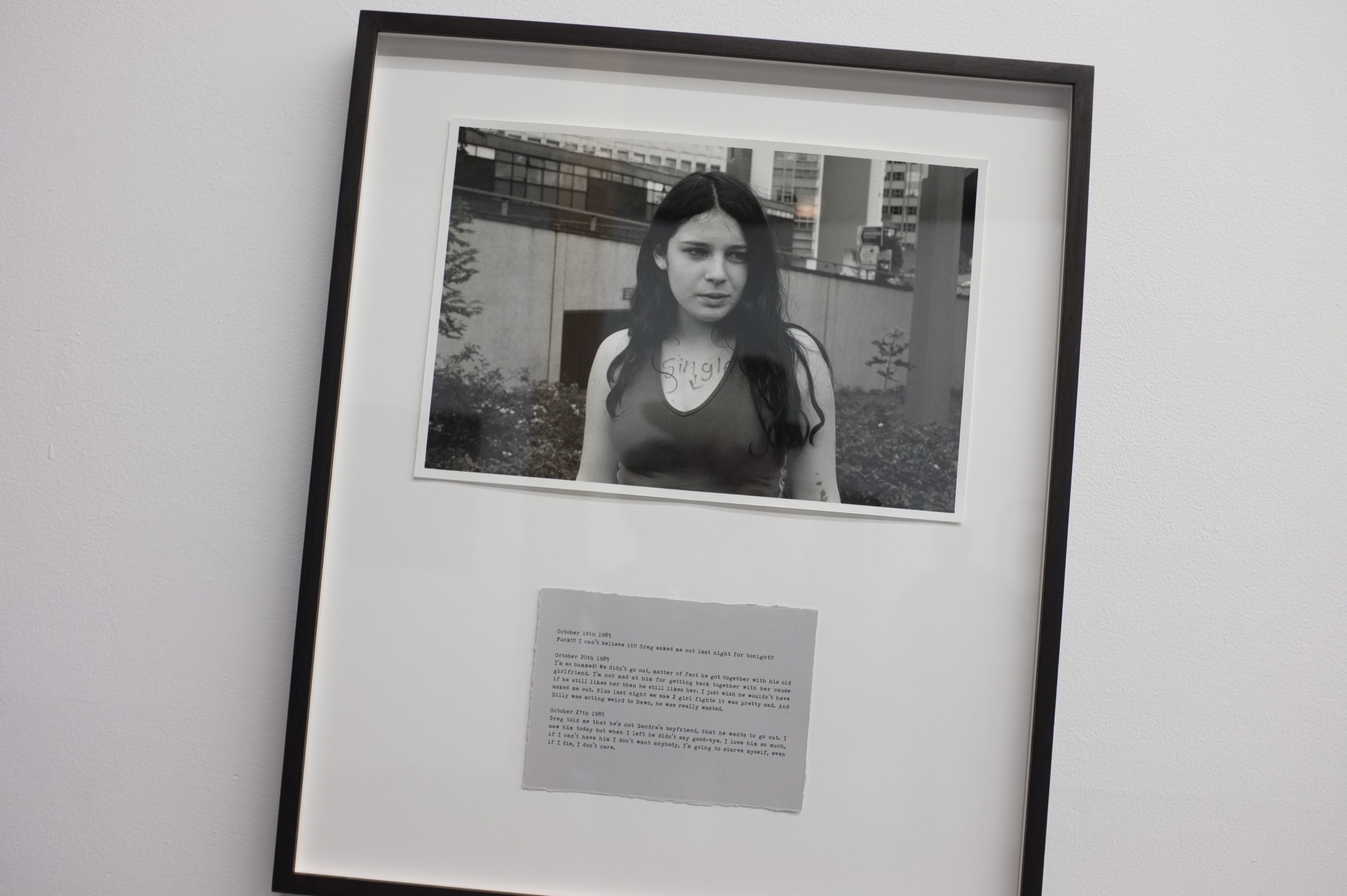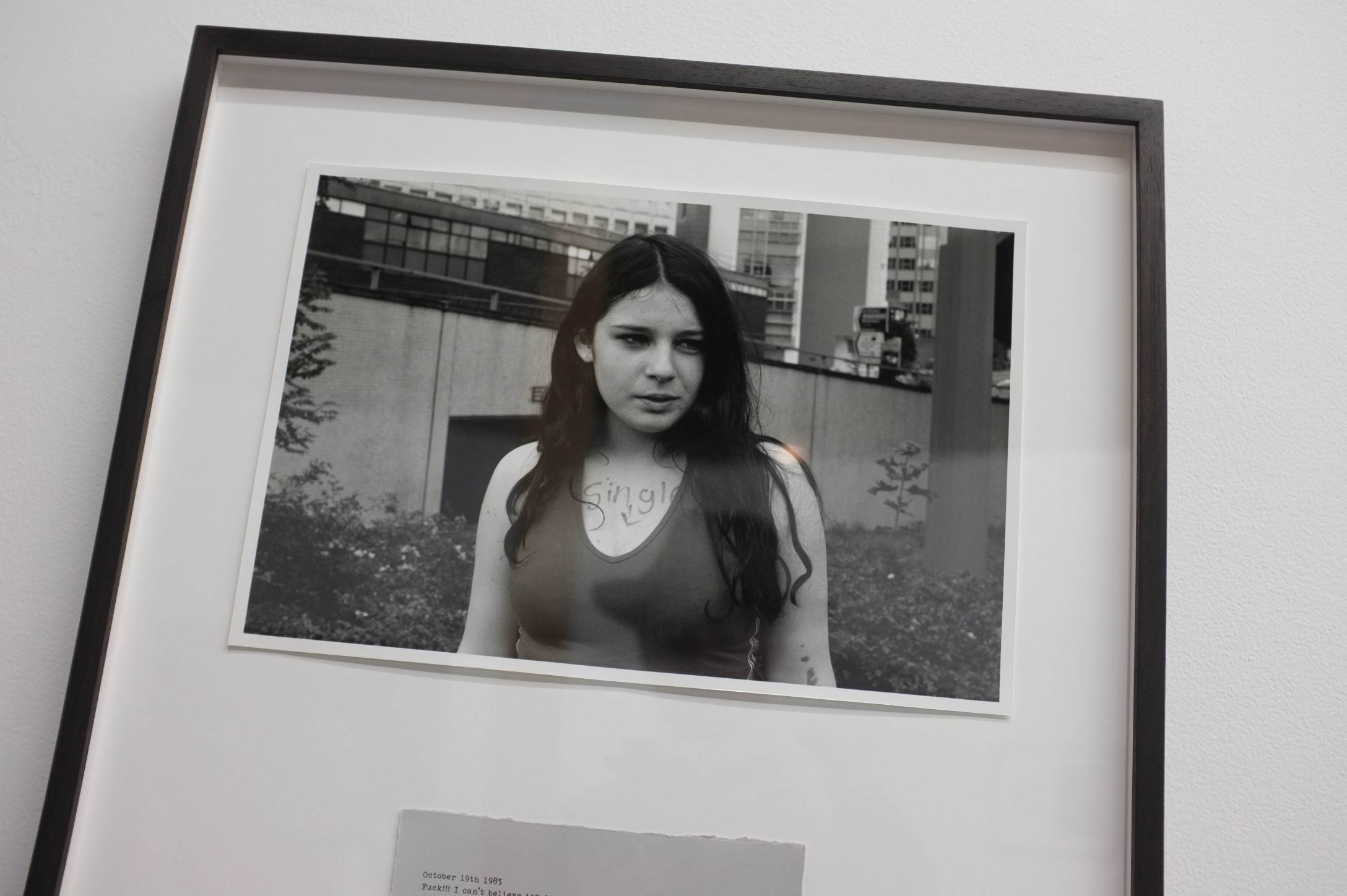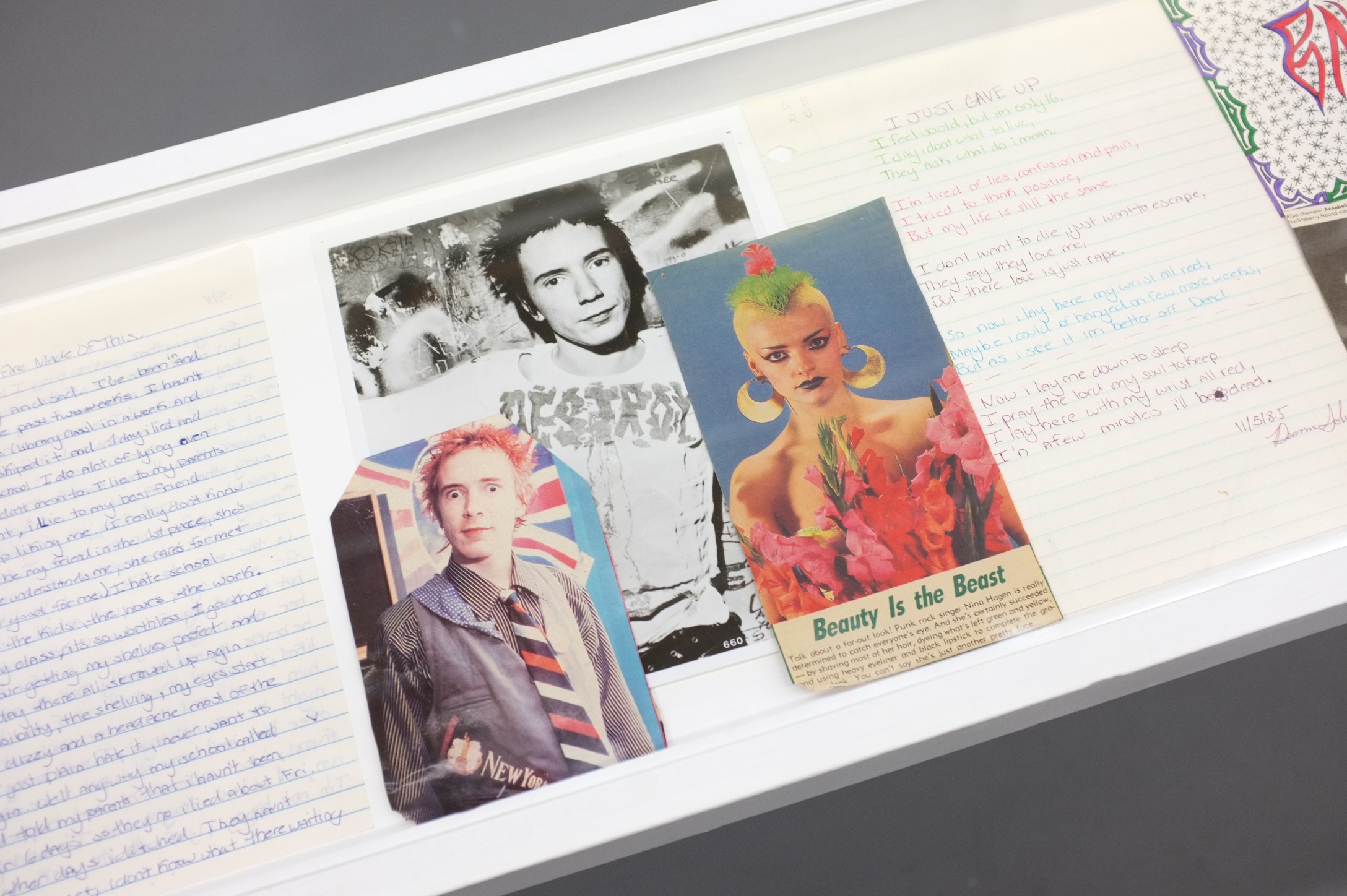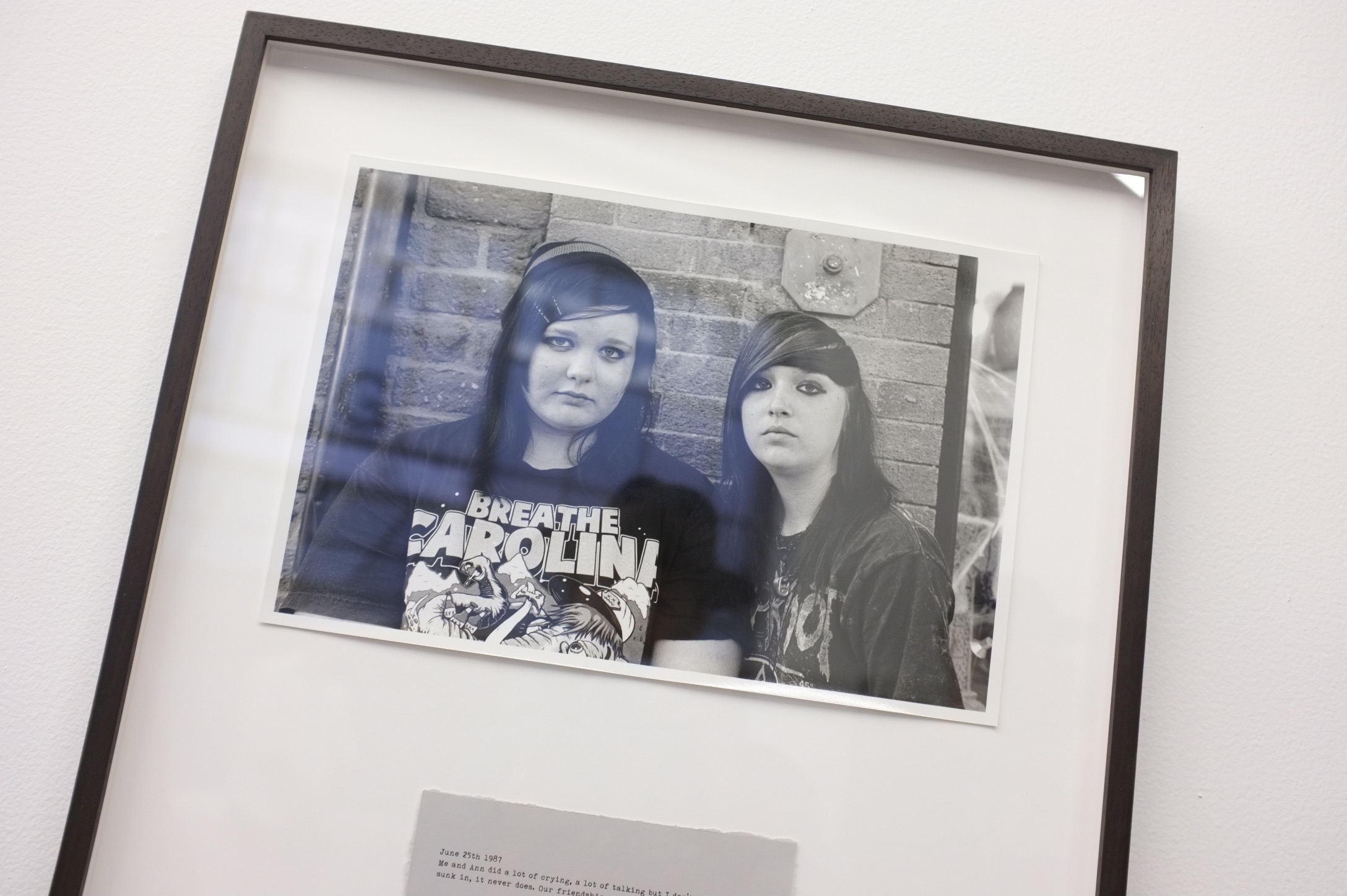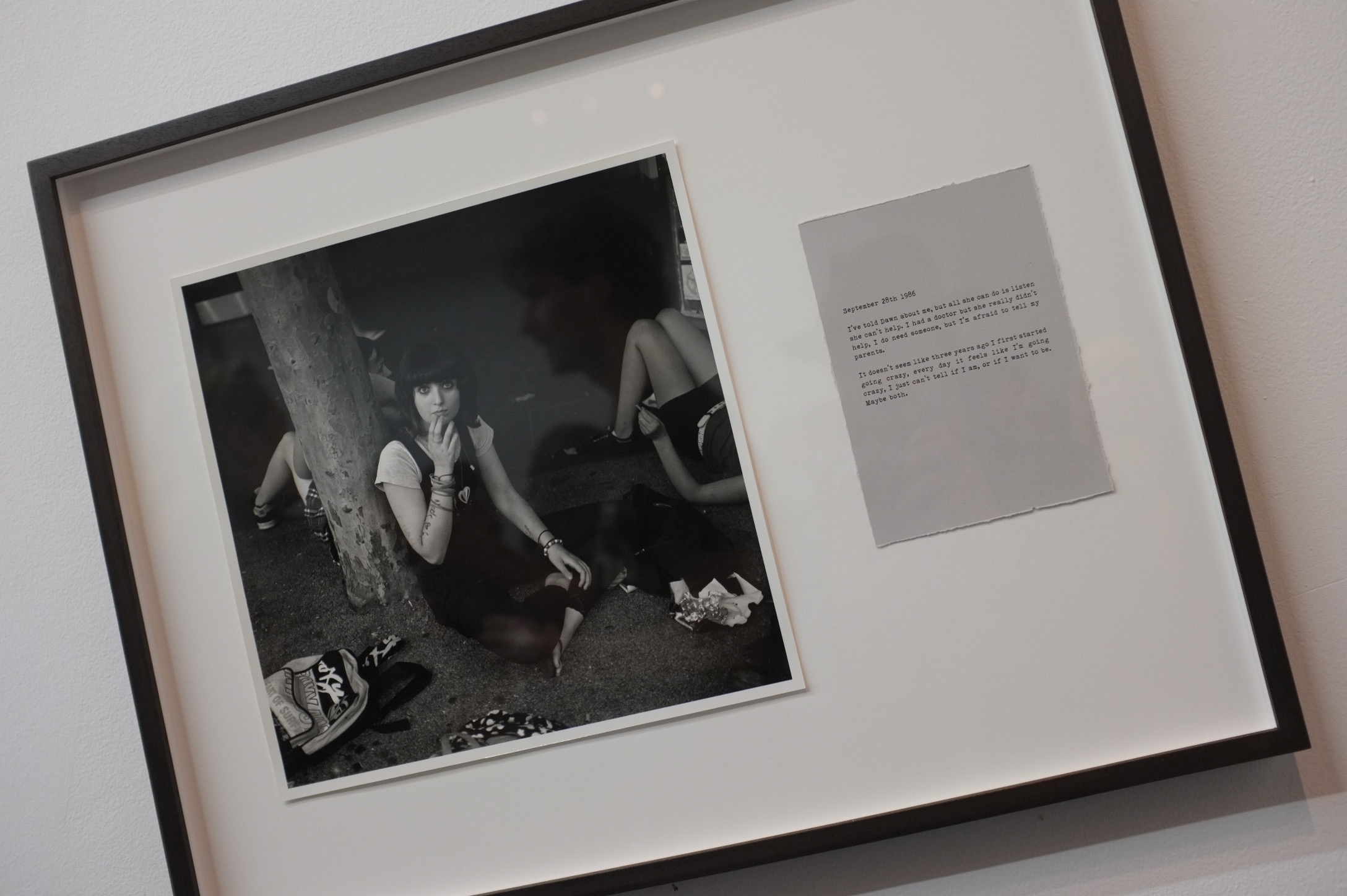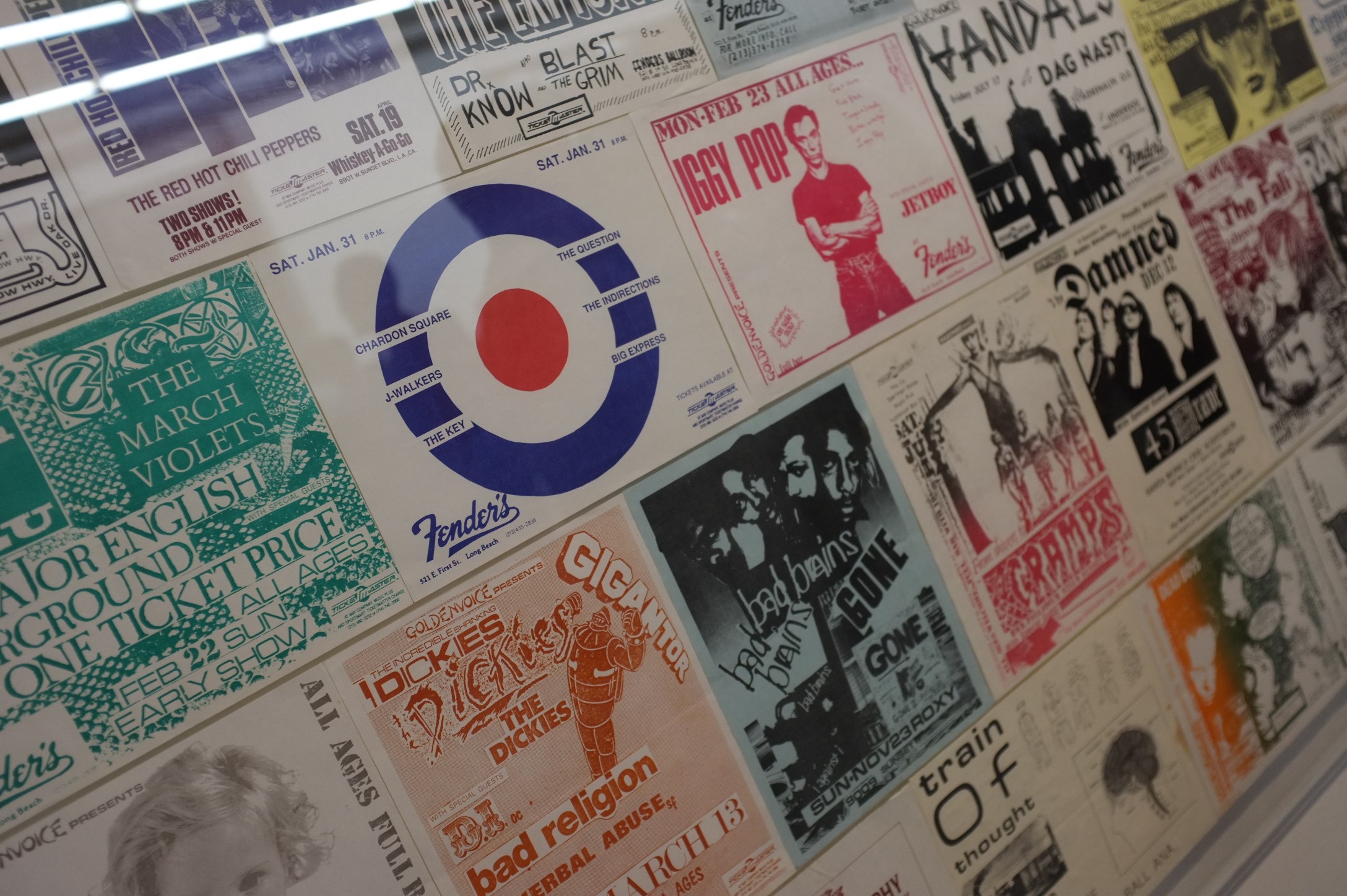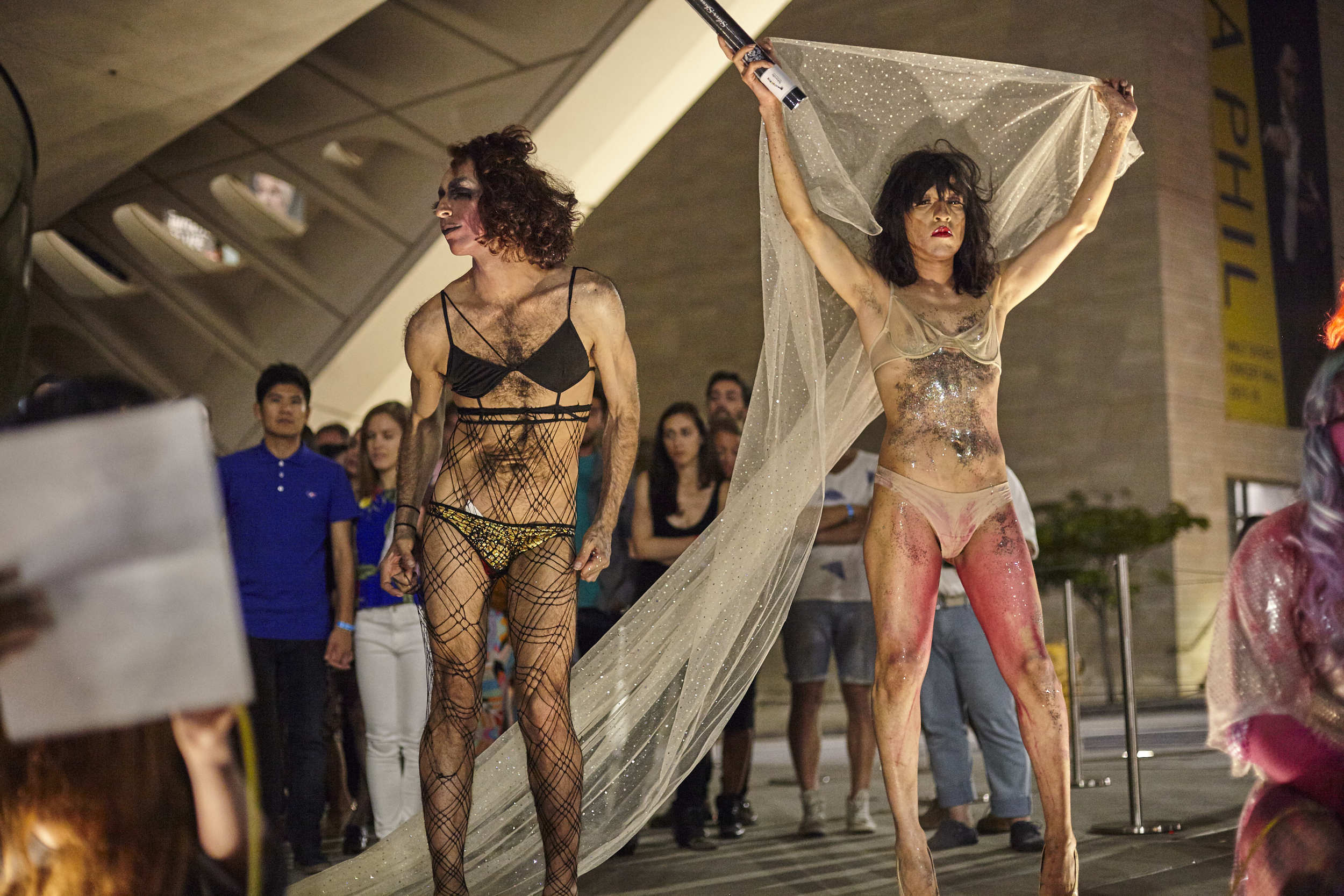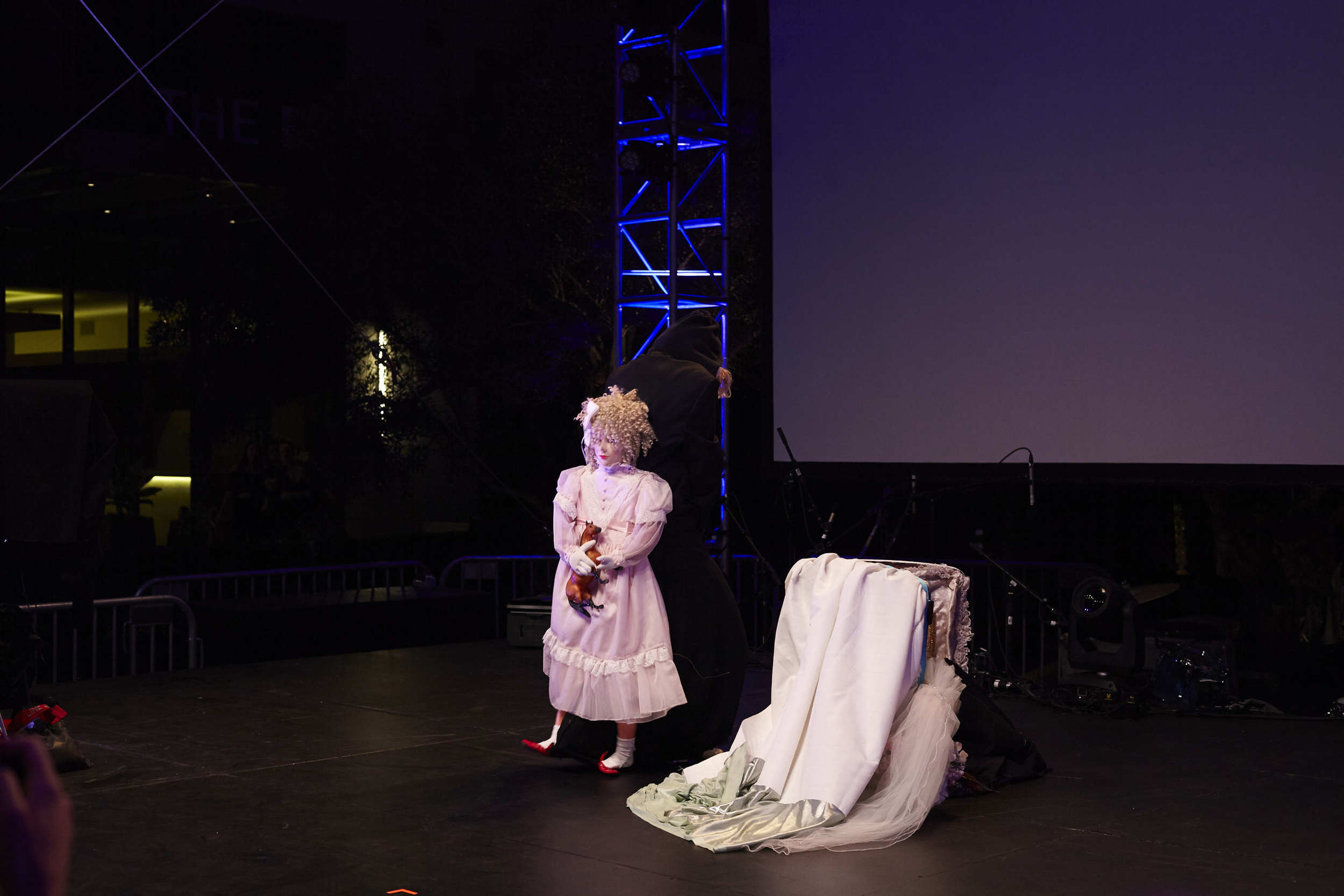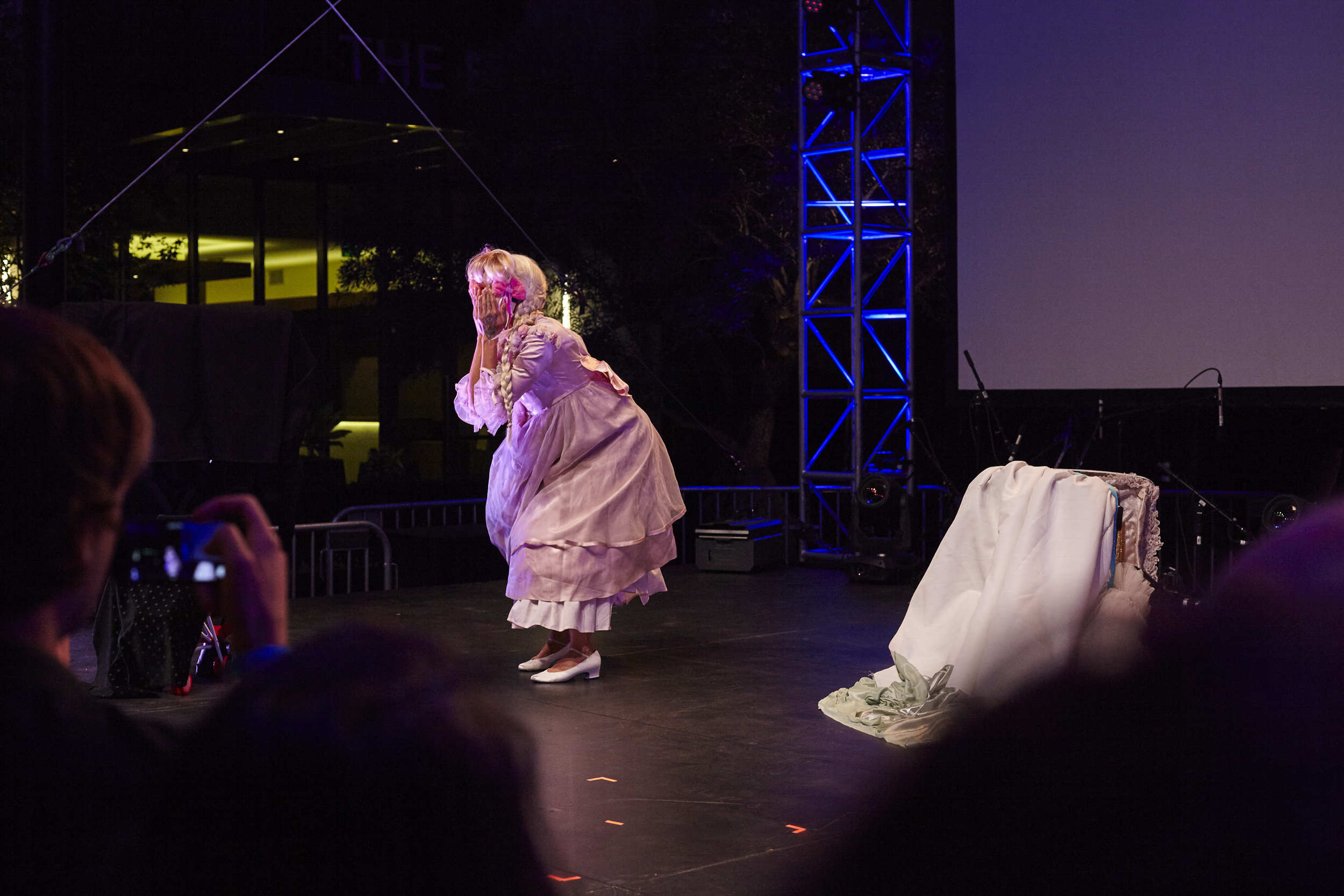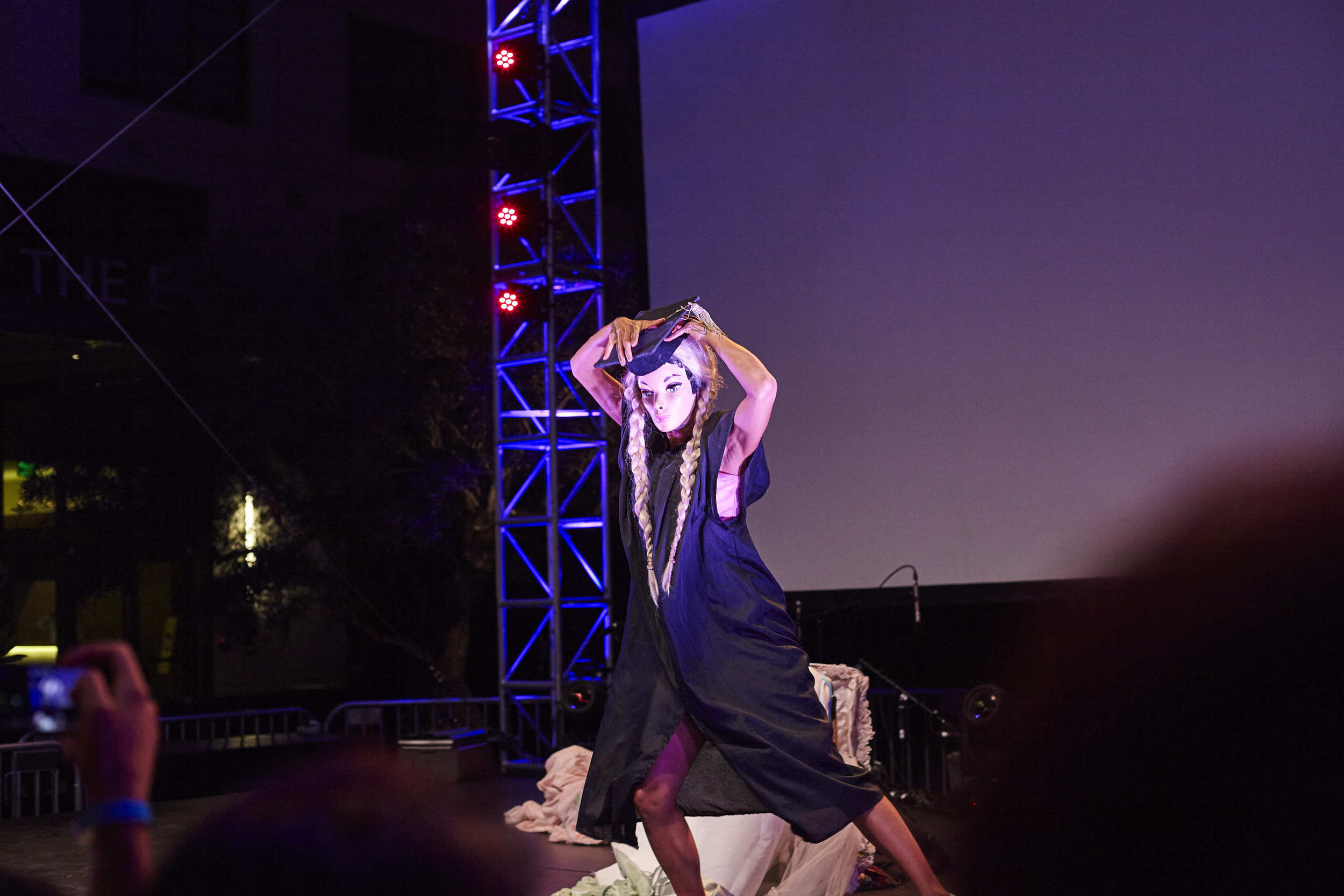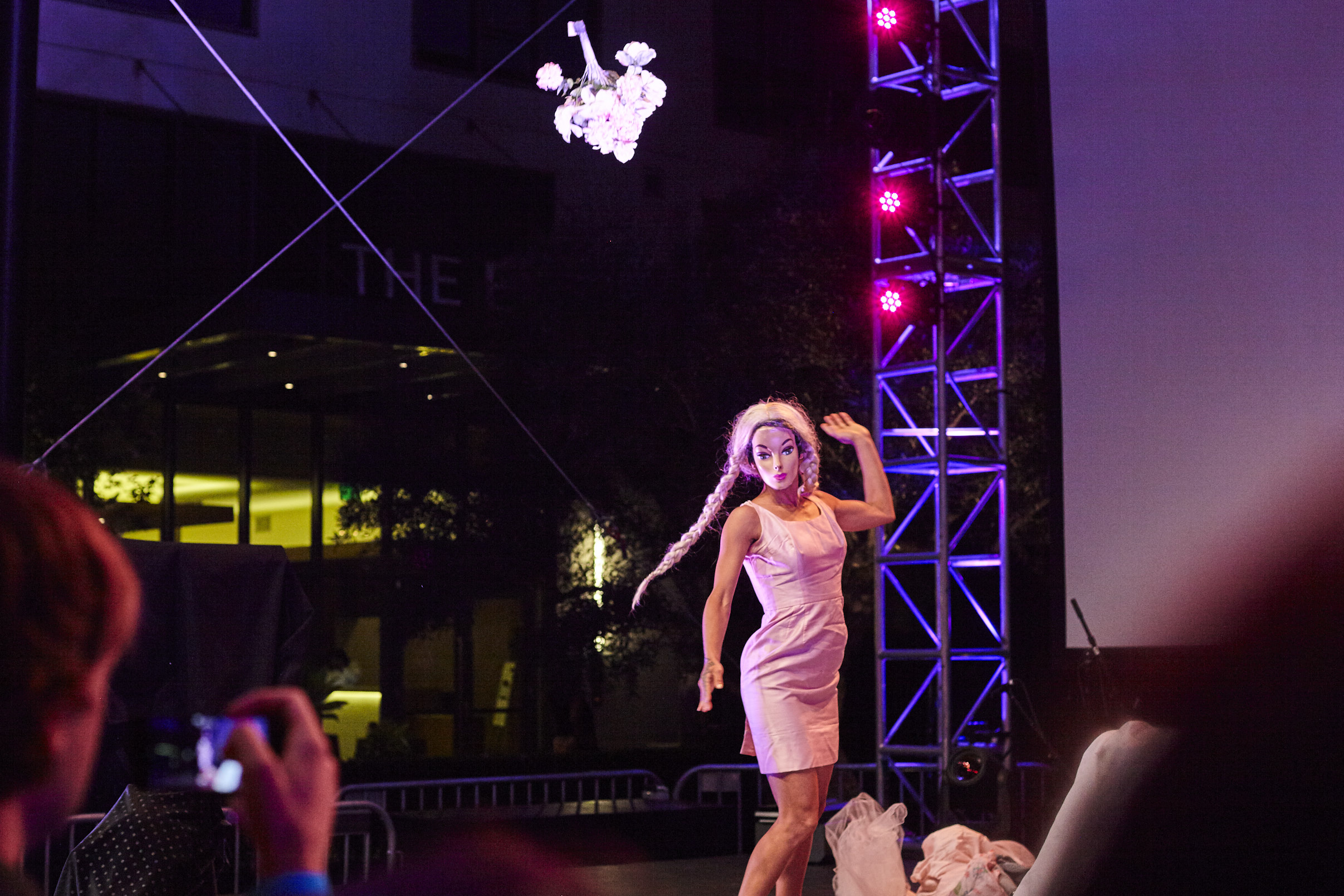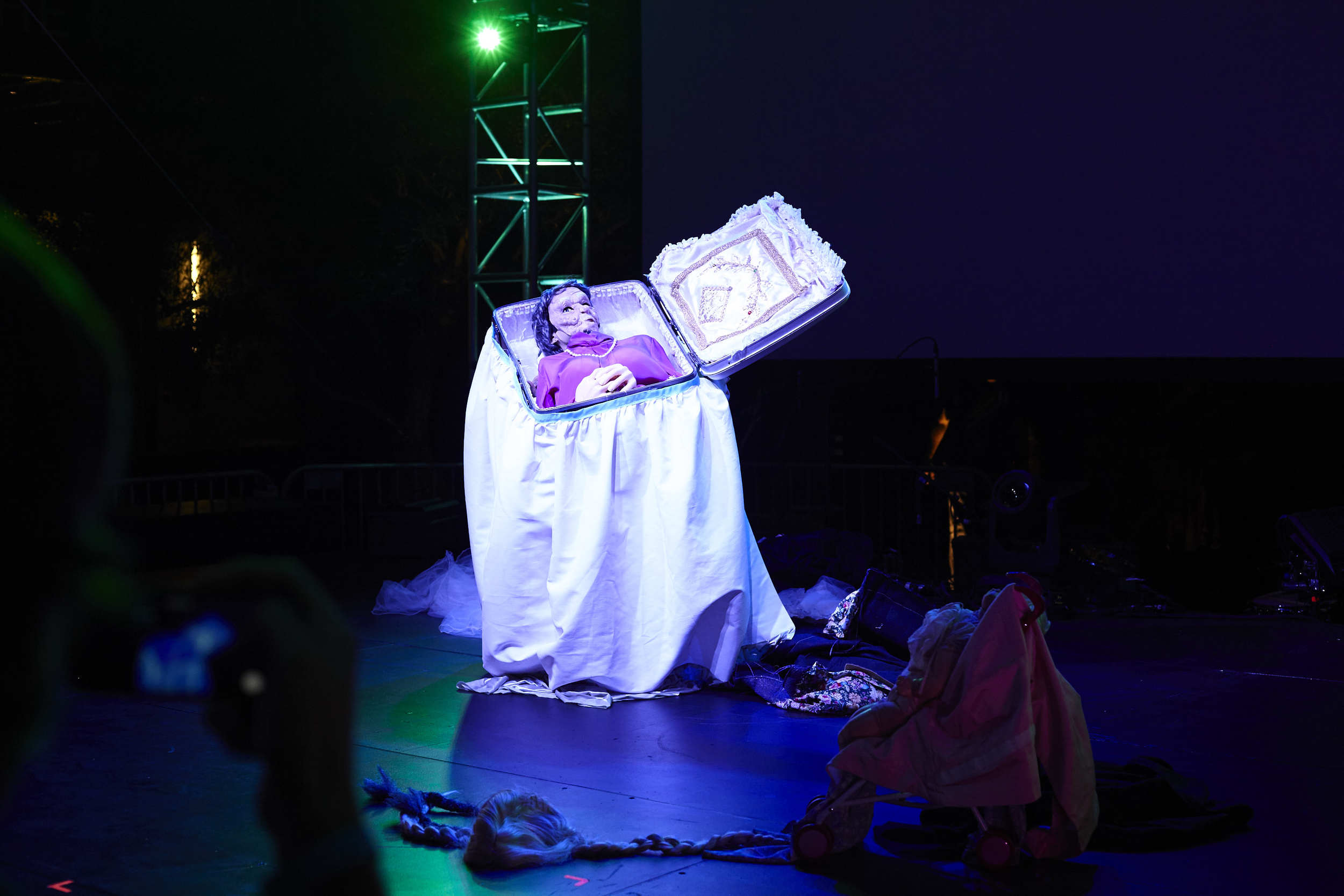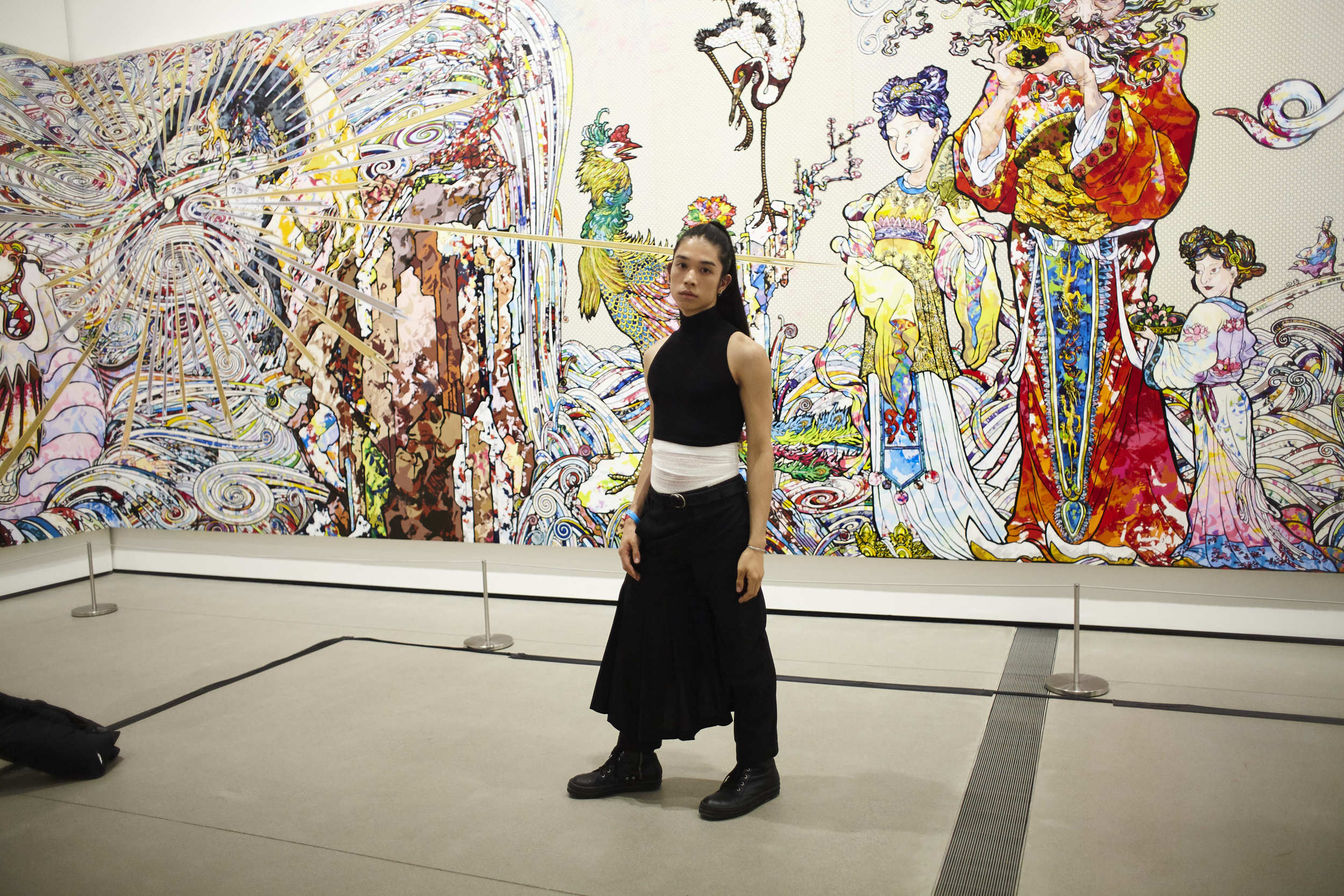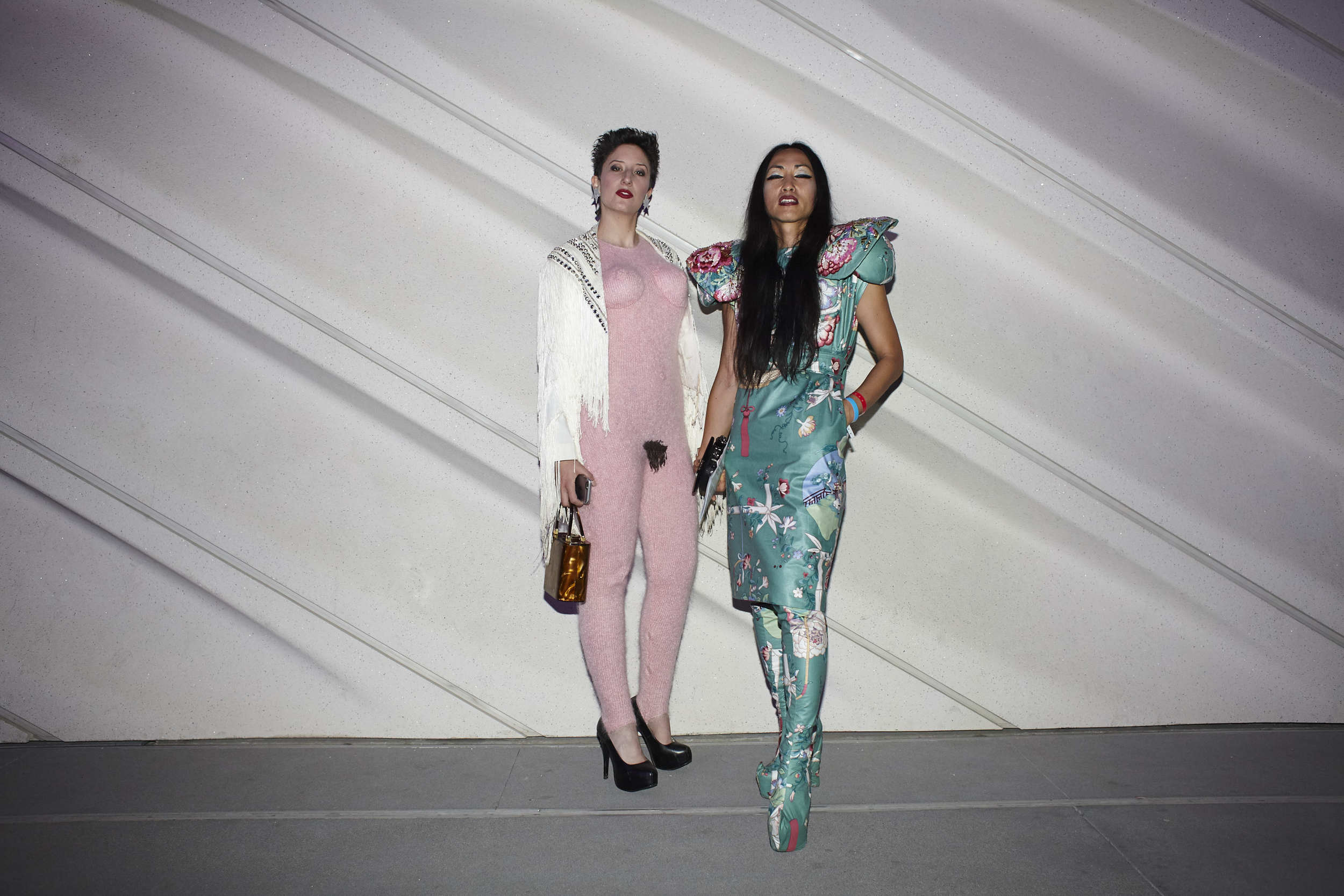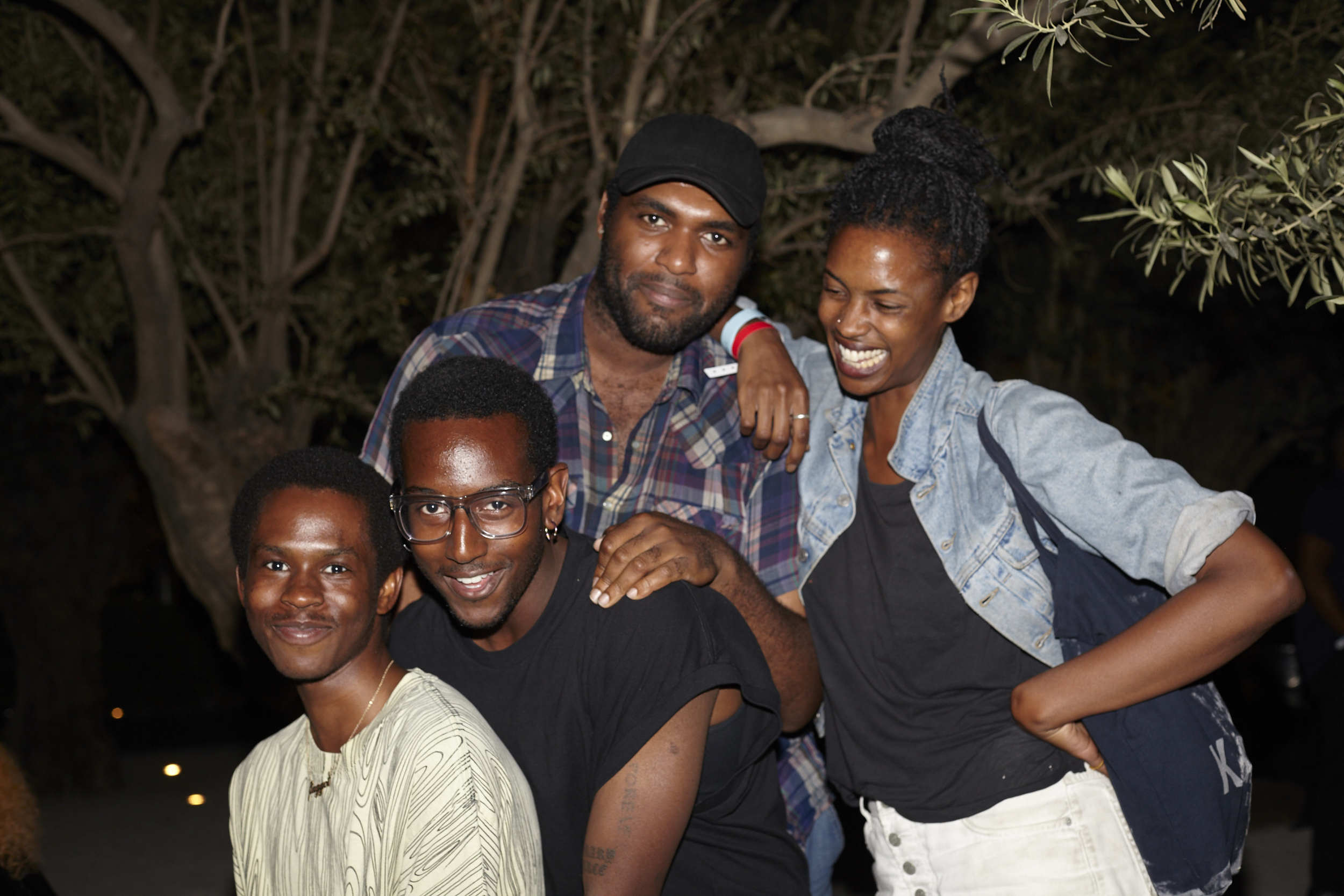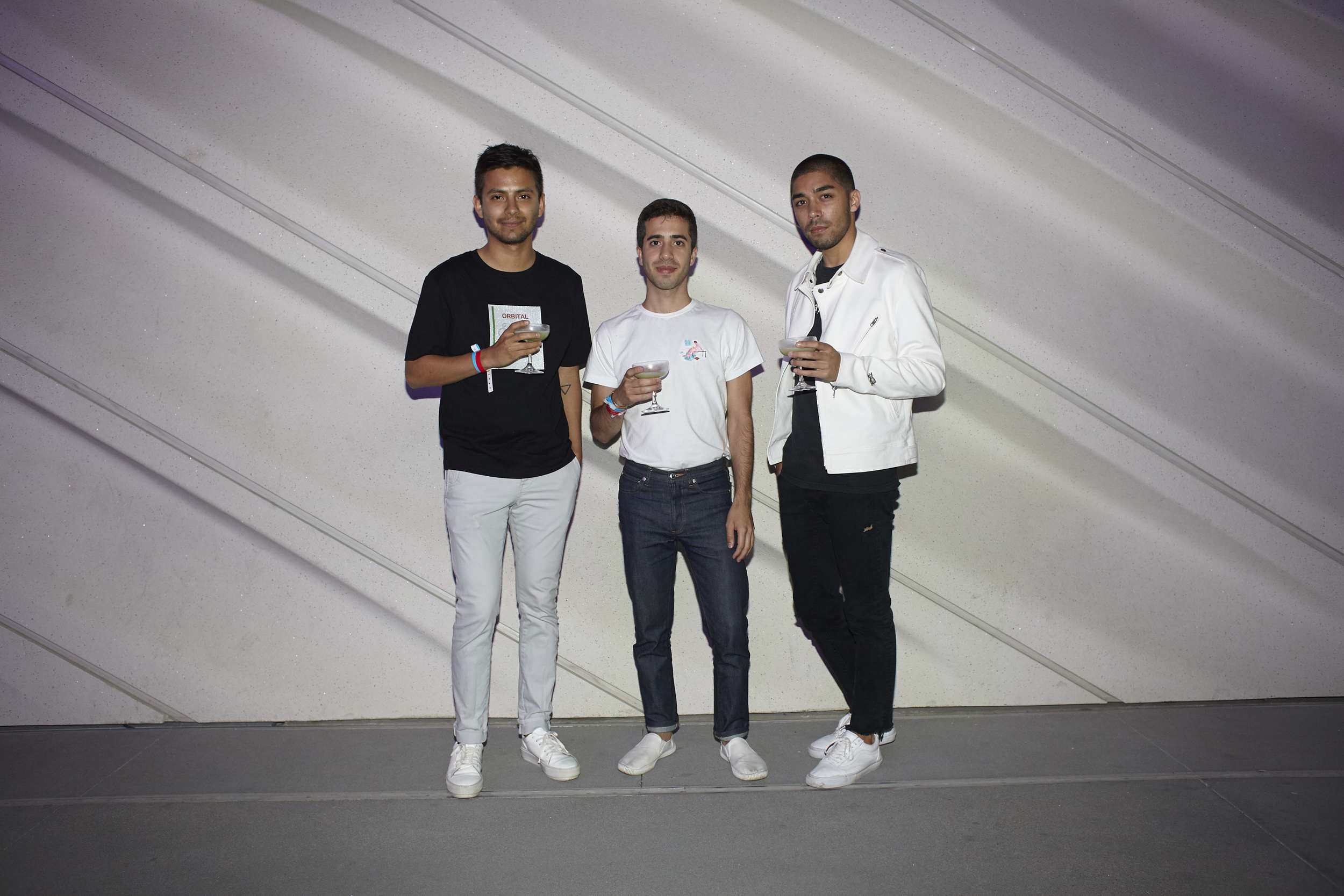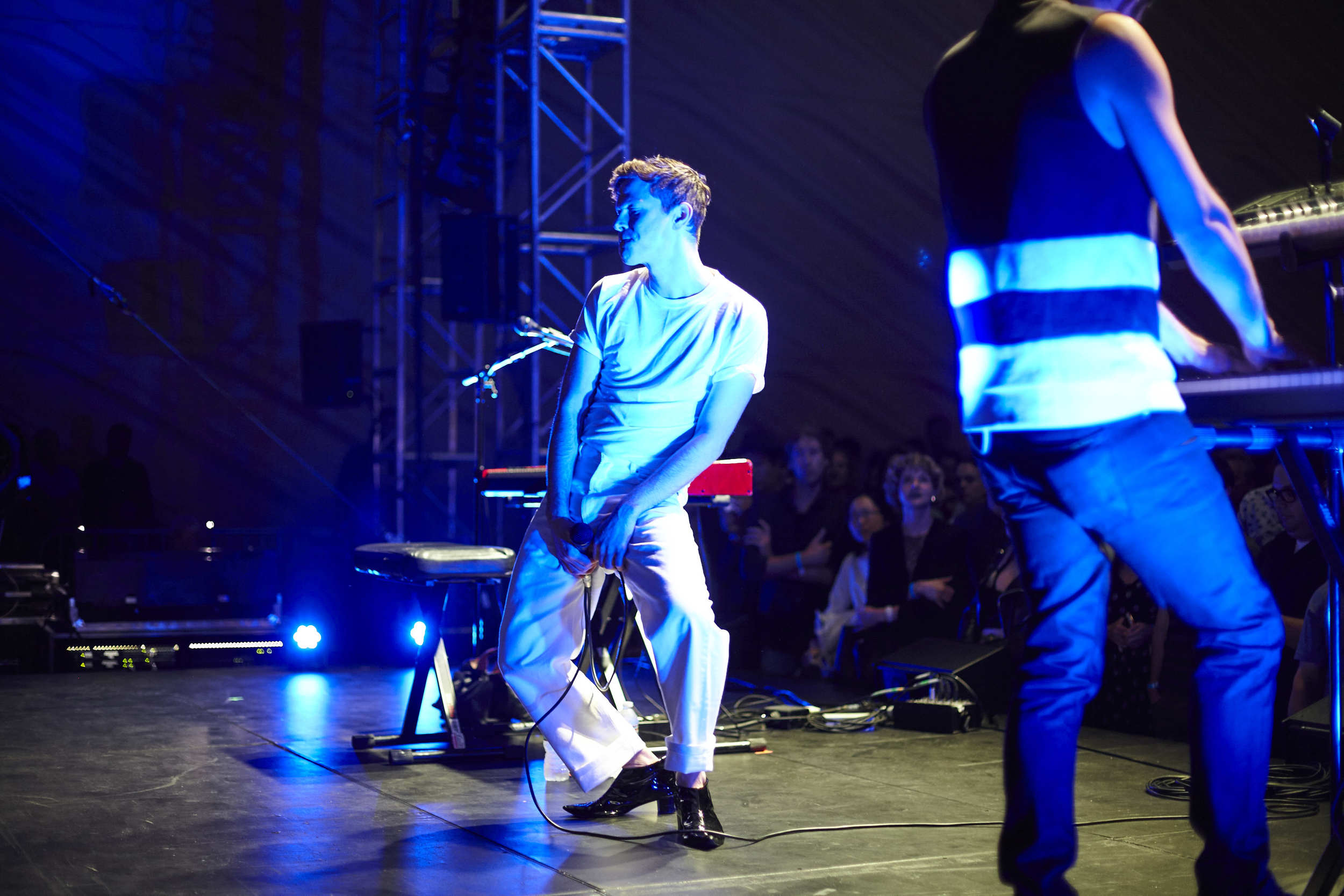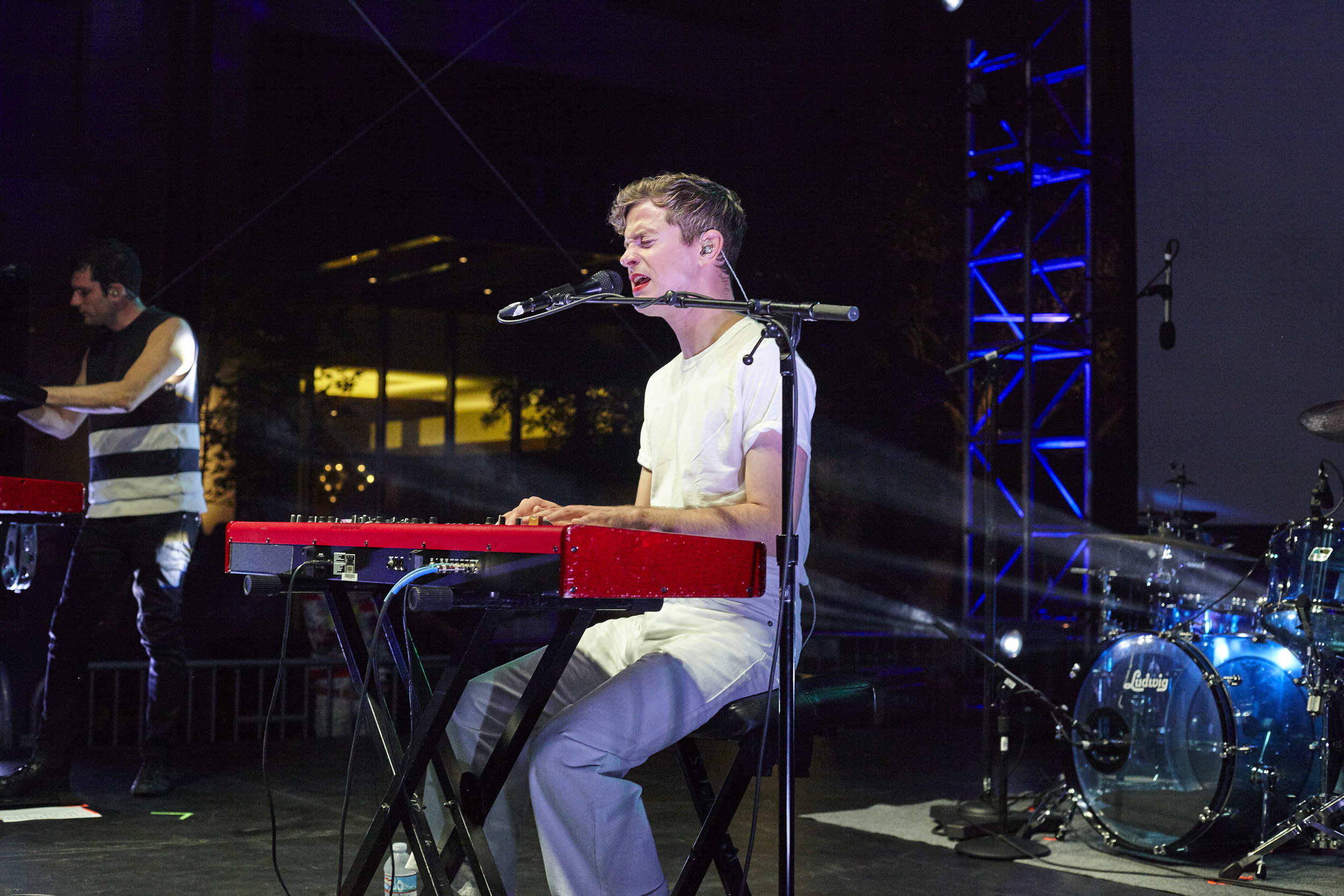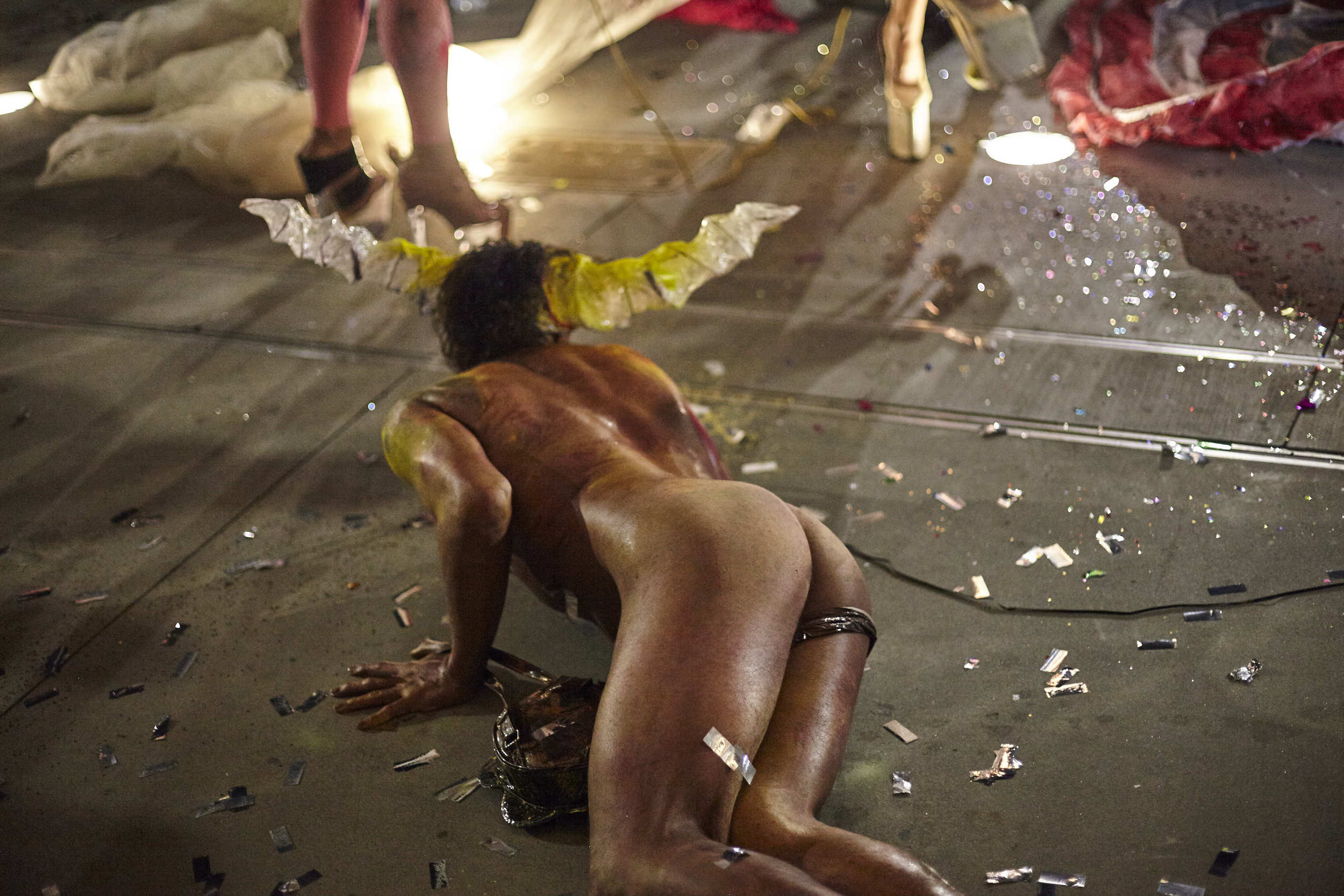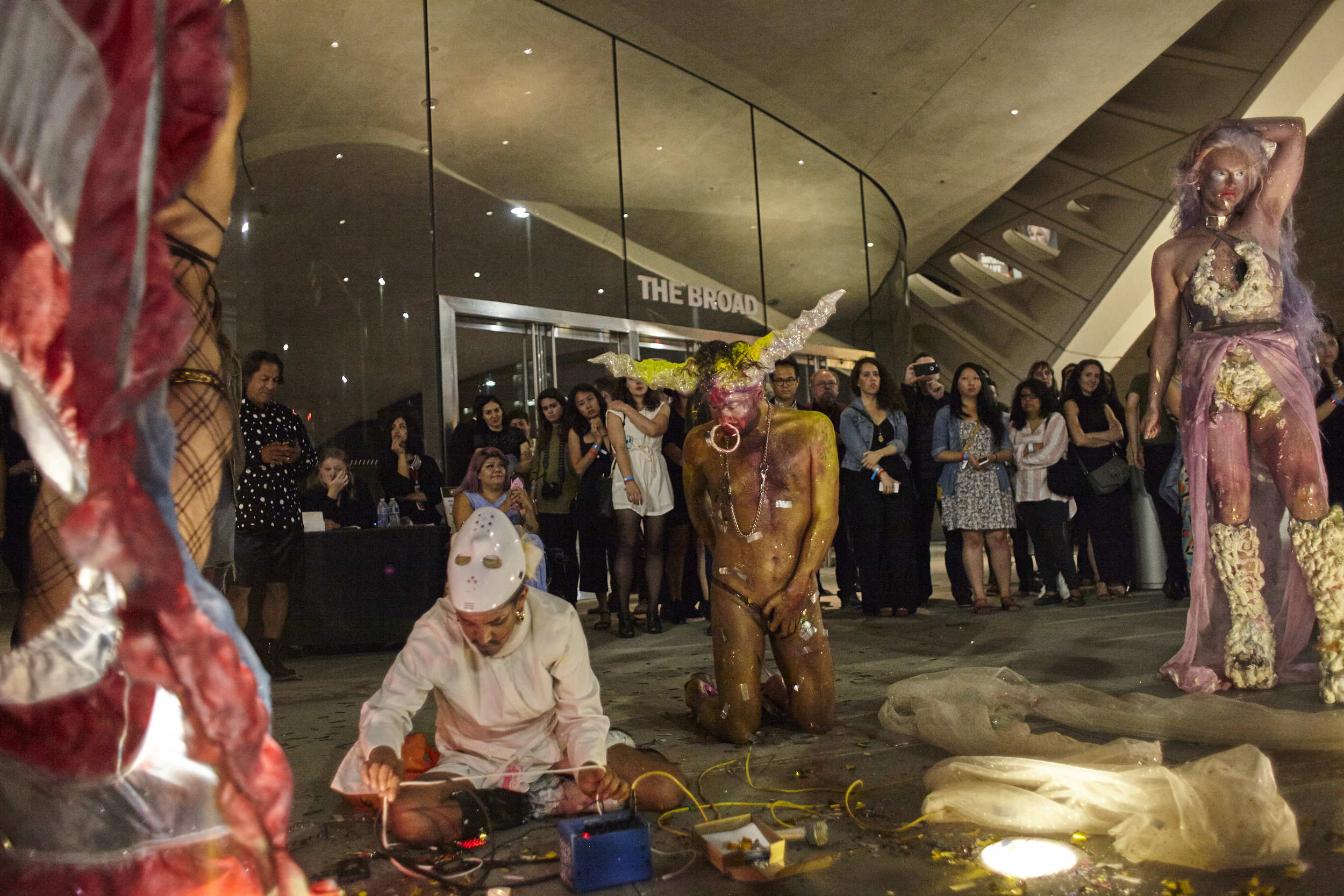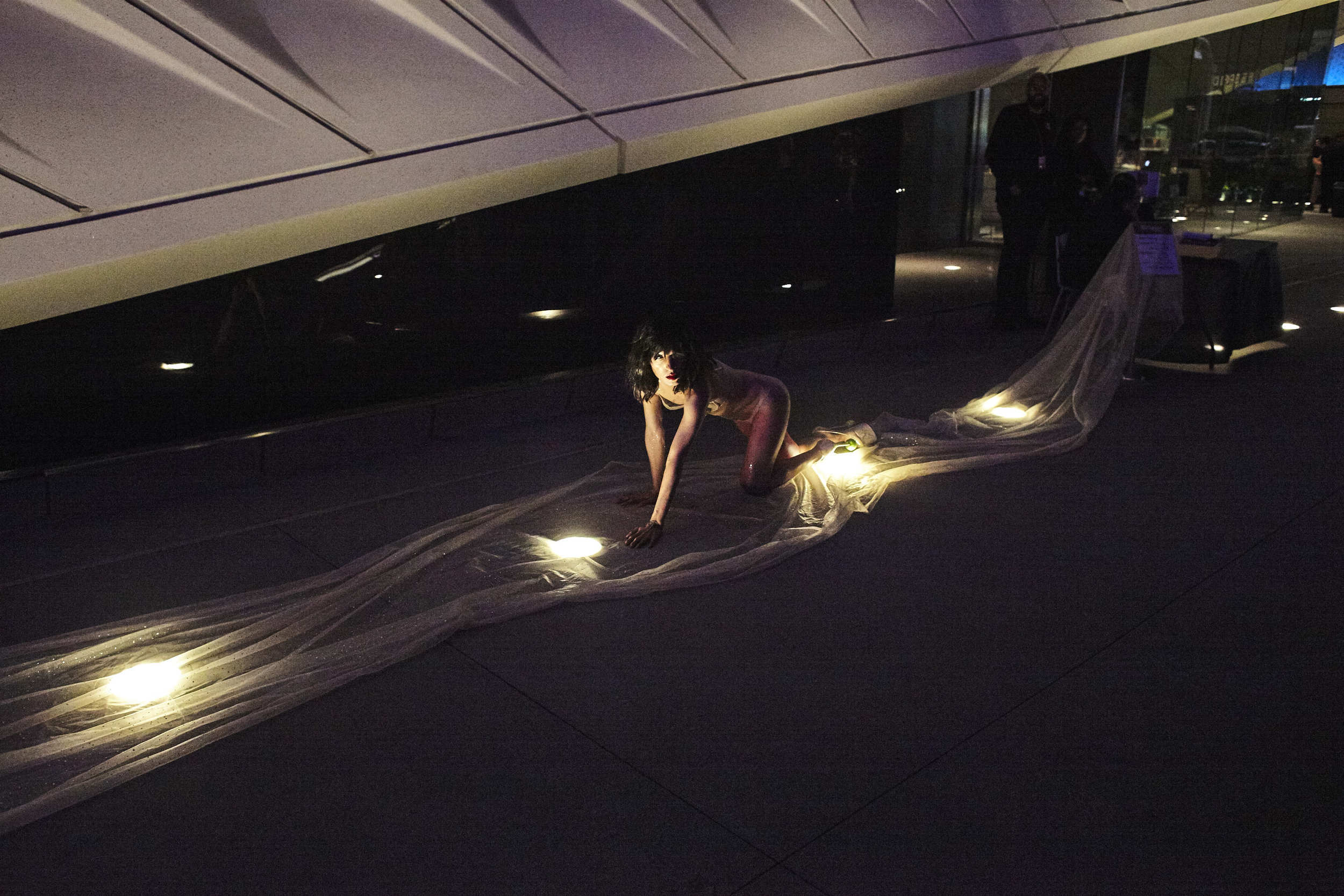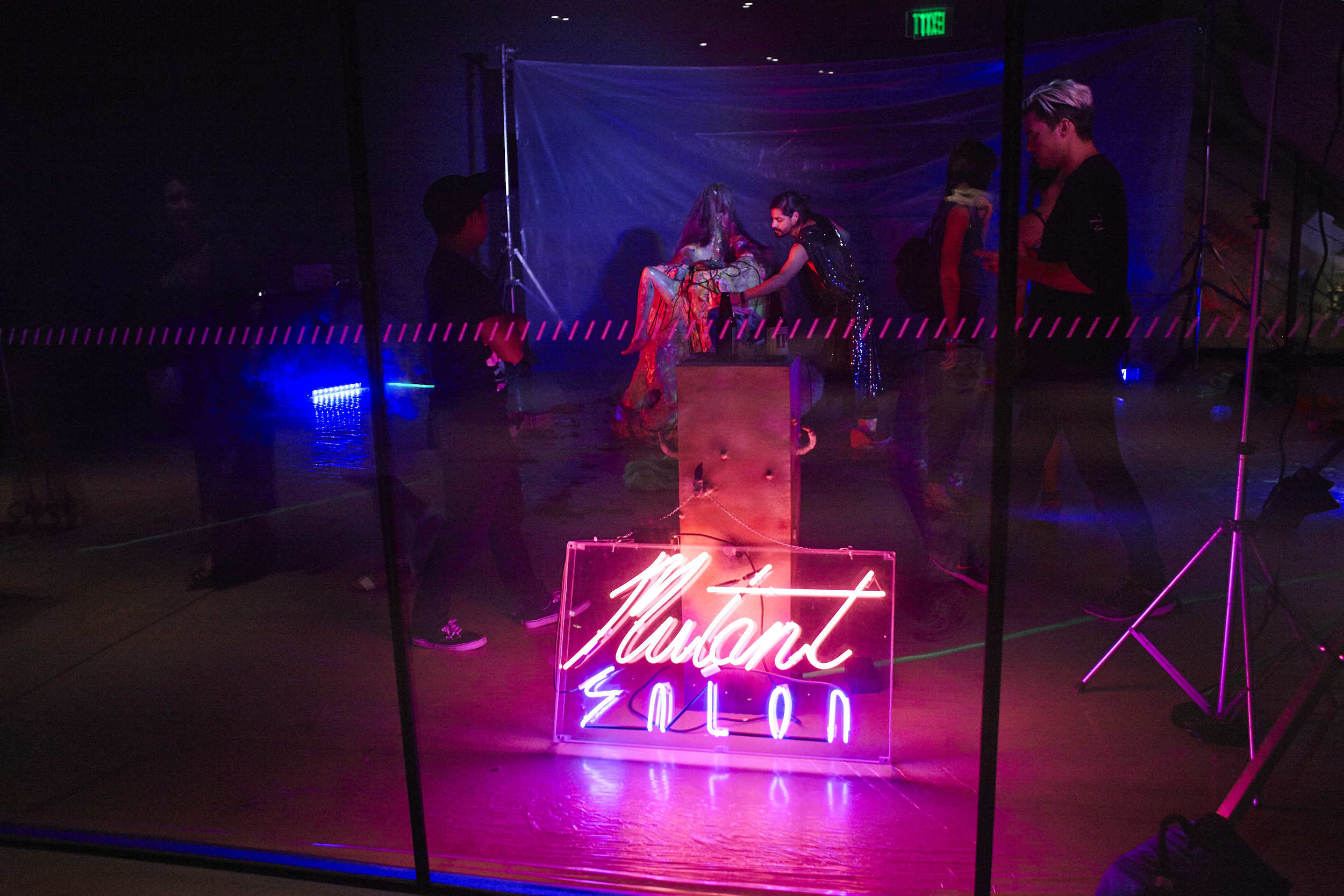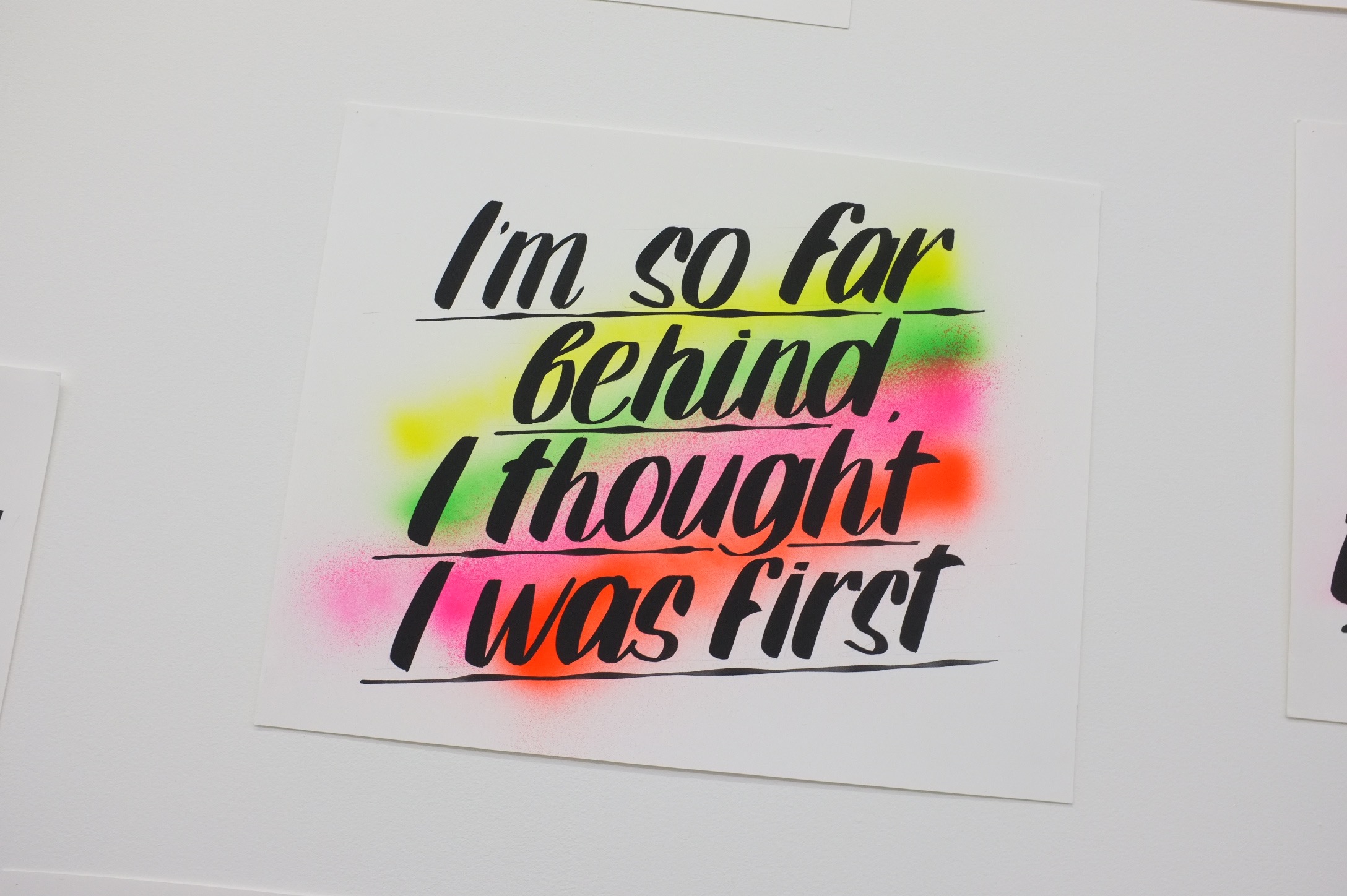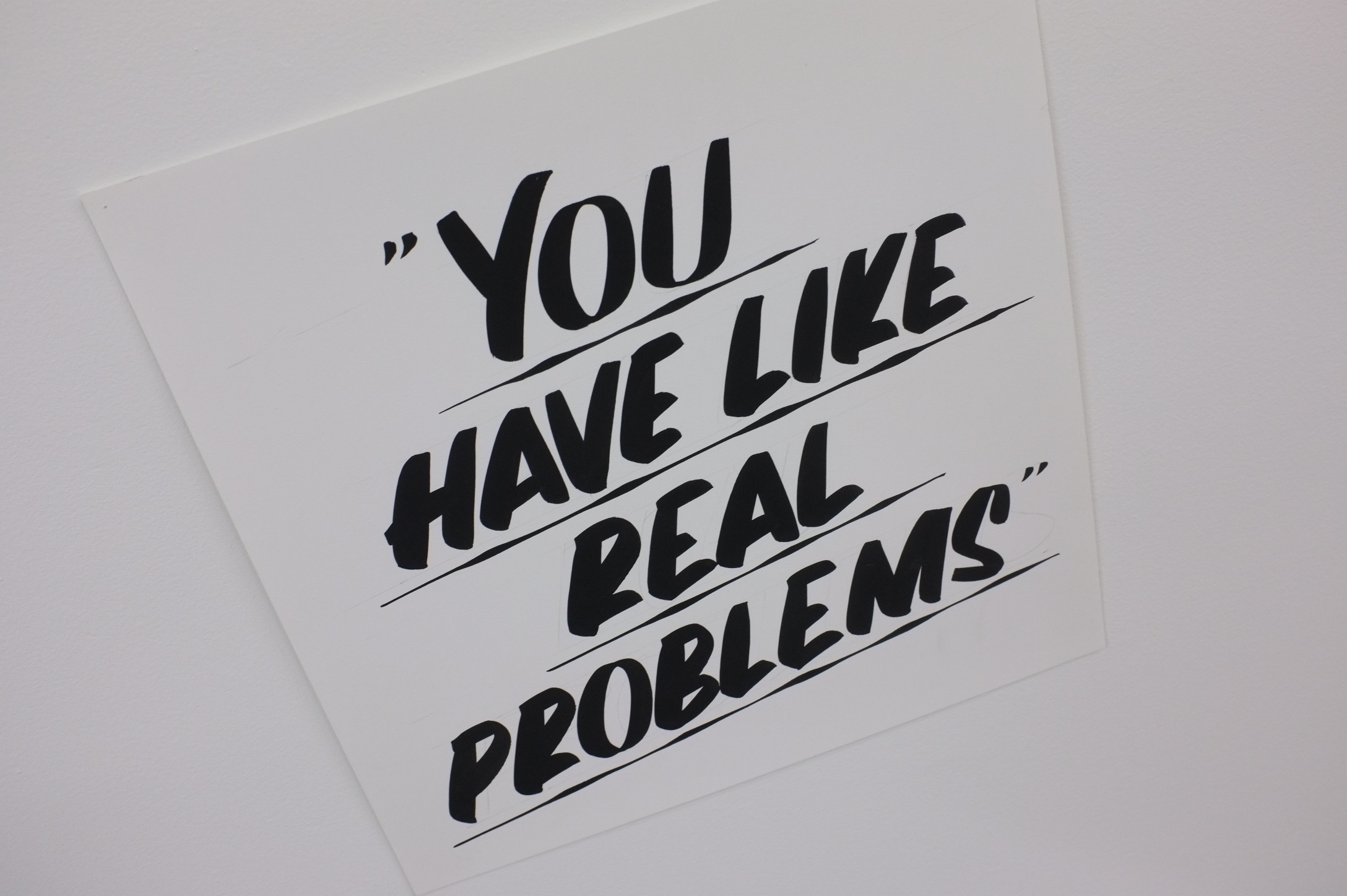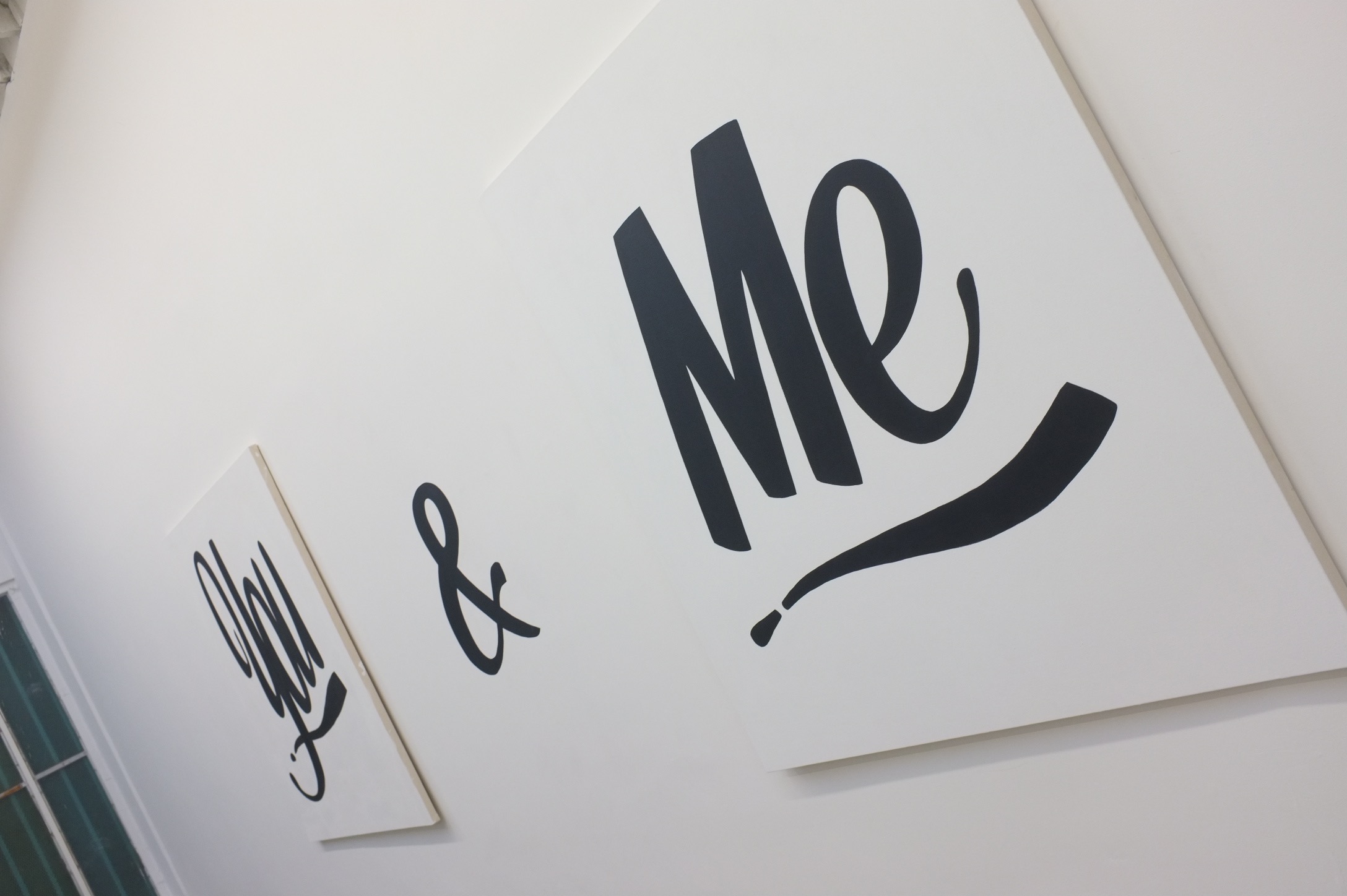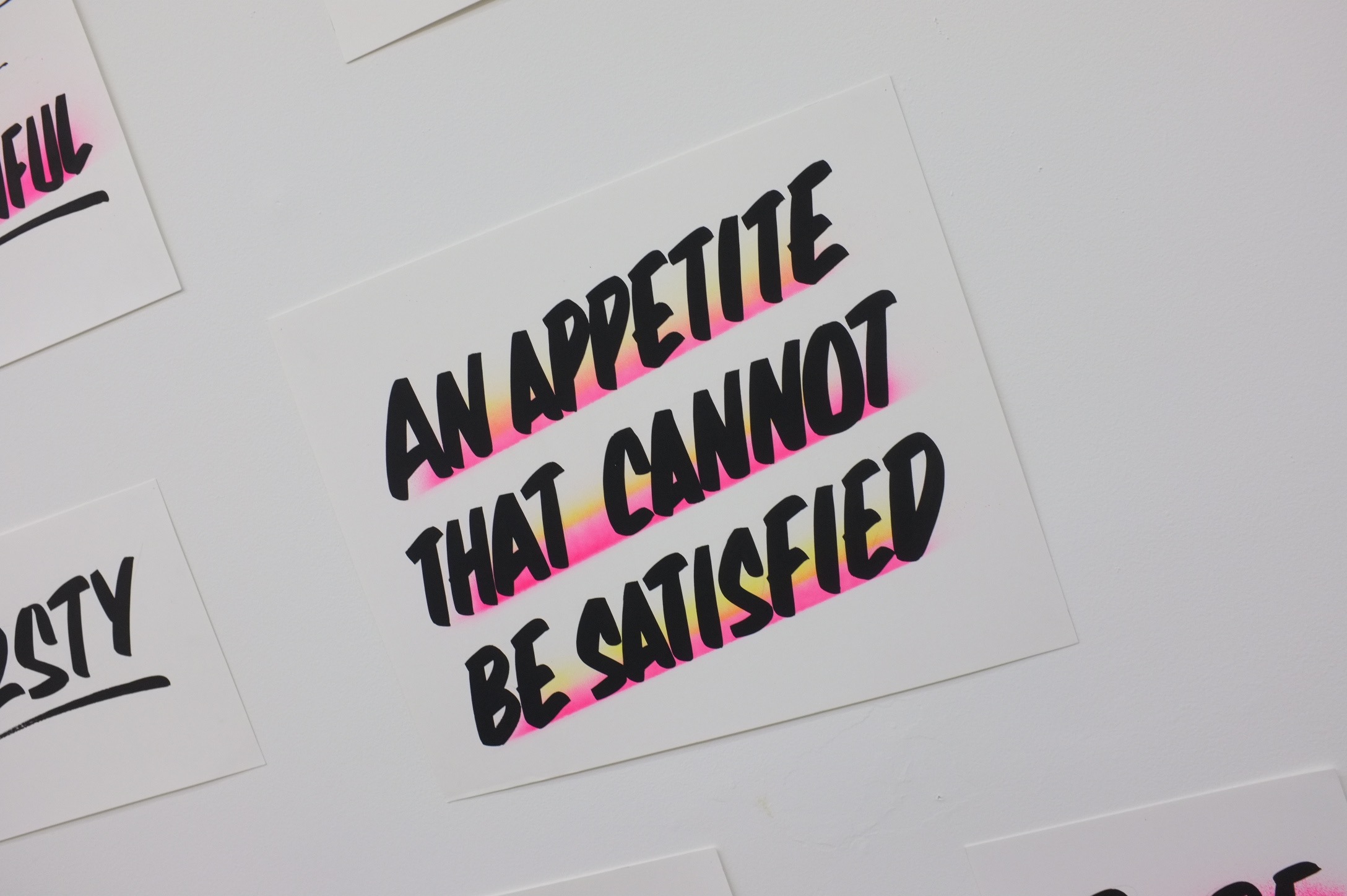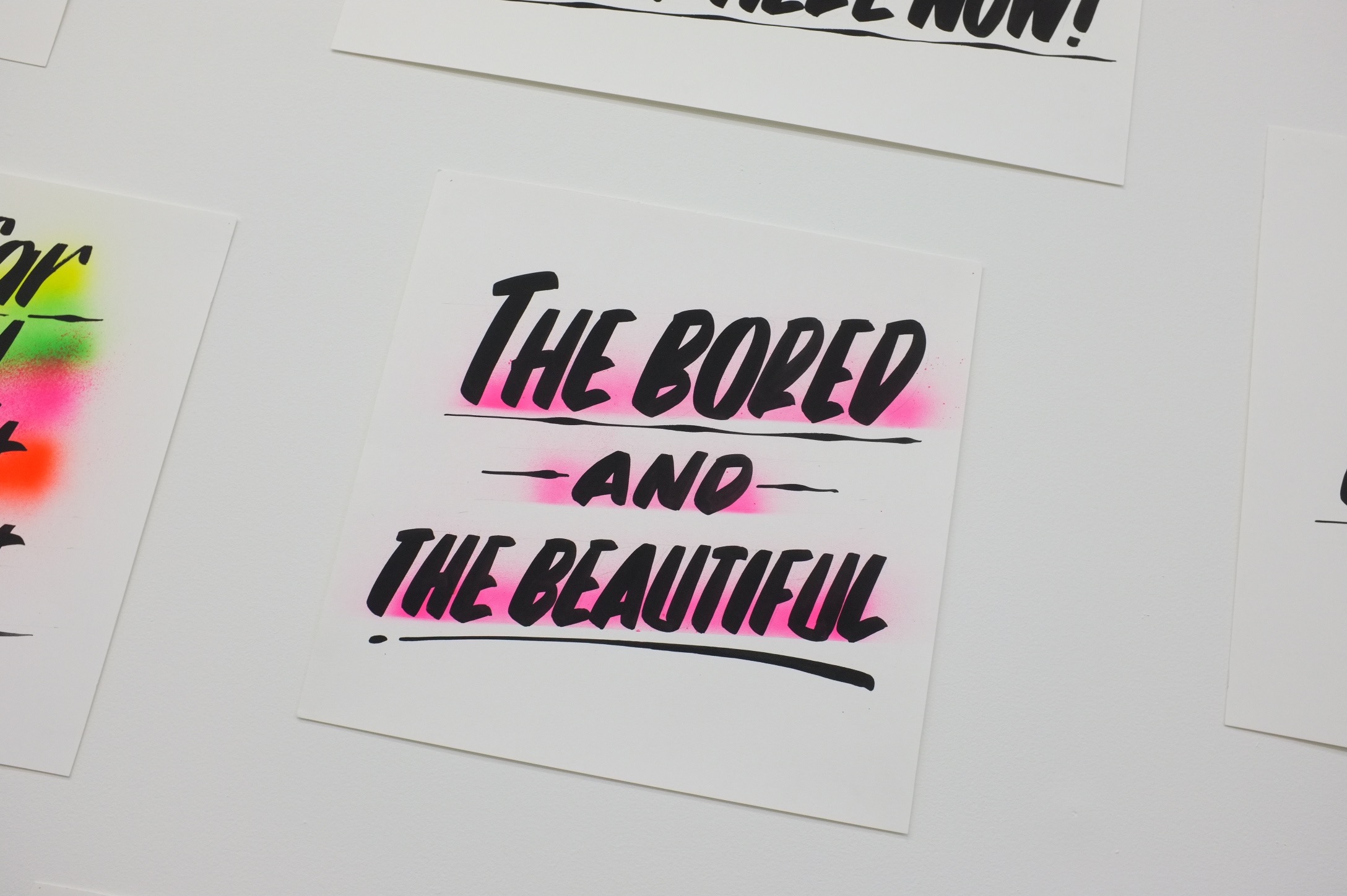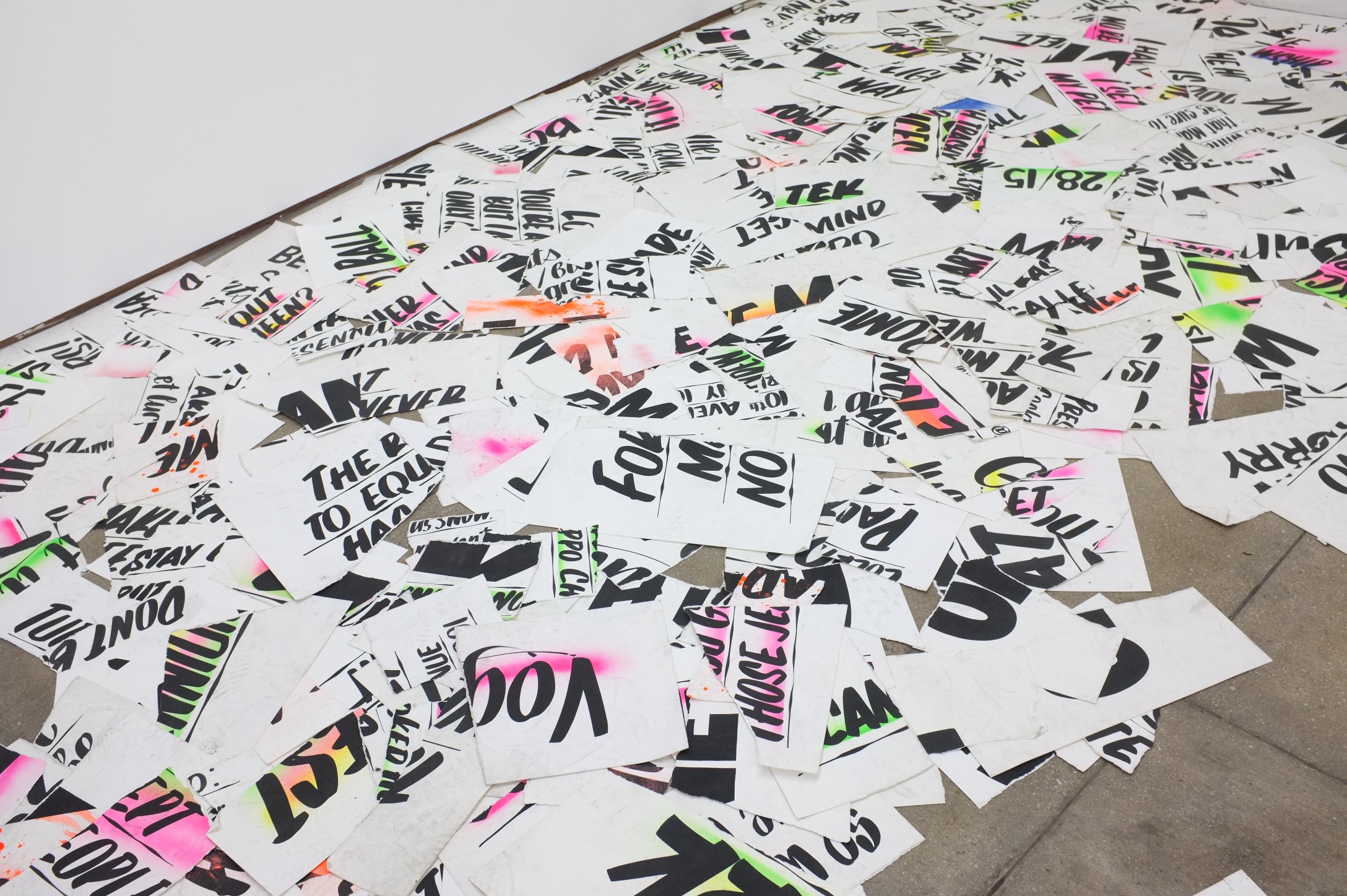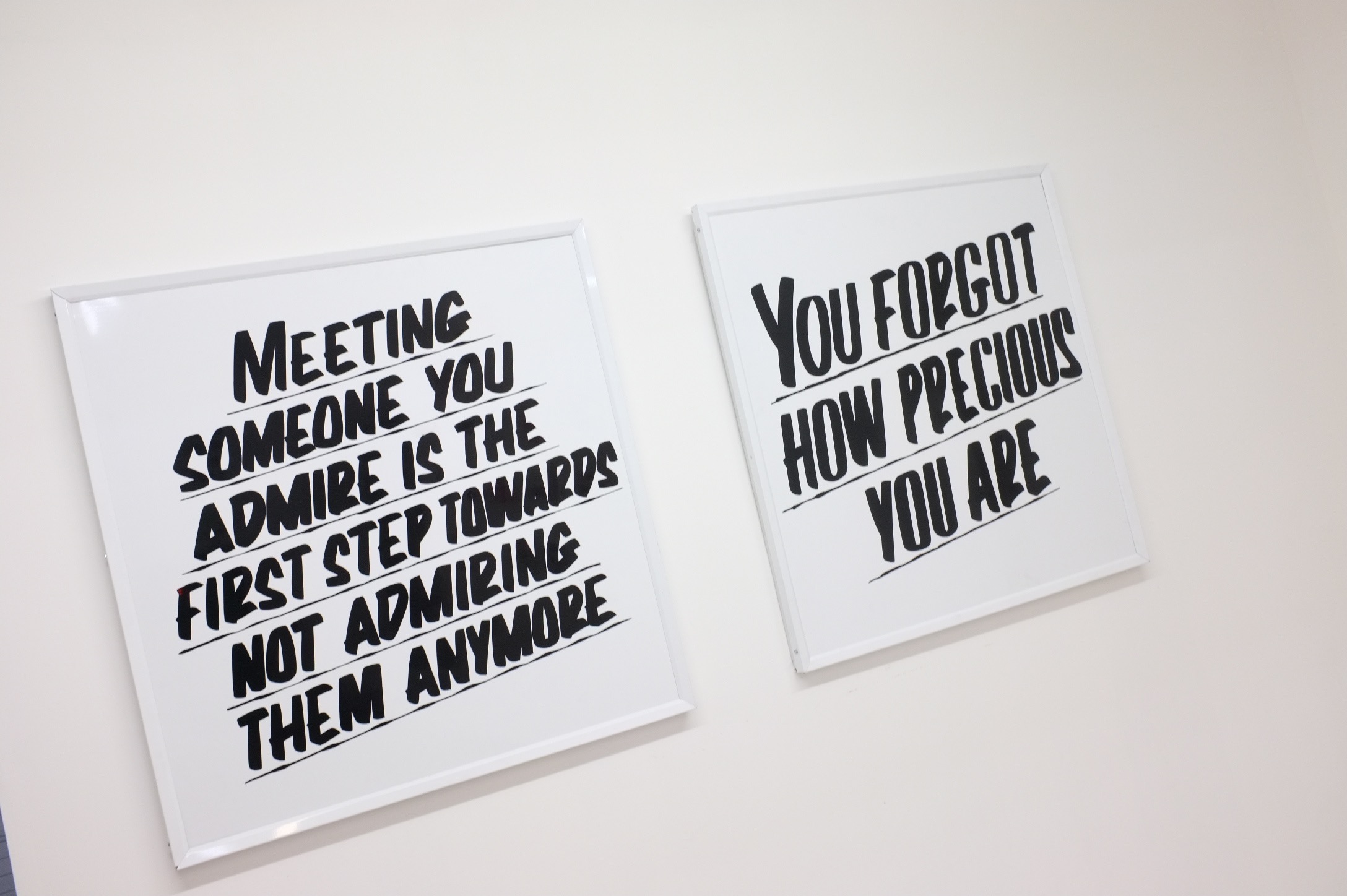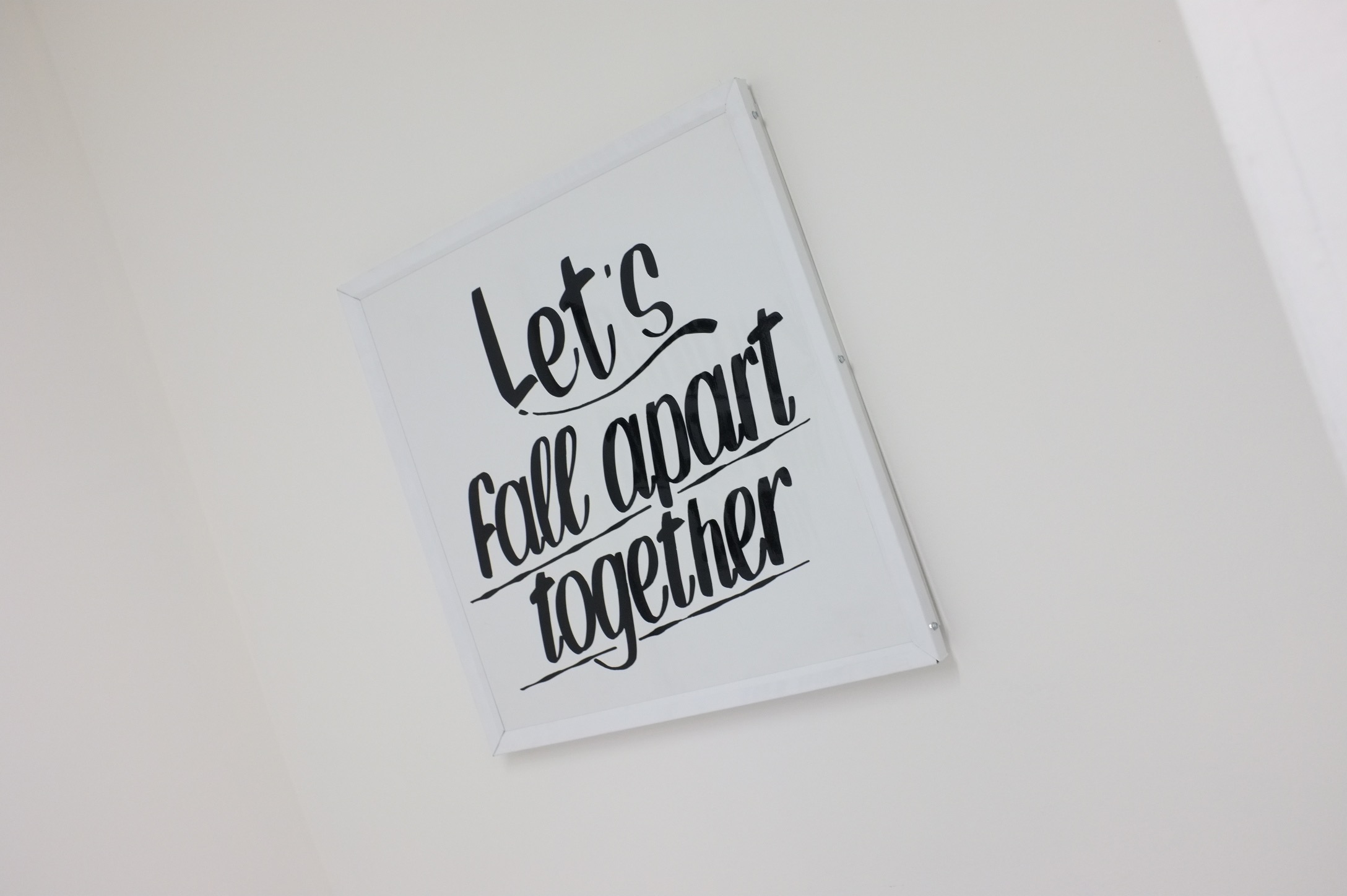The Deadbeat Club "Choices" group show, featuring work from Devin Briggs, Nolan Hall, Grant Hatfield, Deanna Templeton, Ed Templeton, and Clint Woodside, will be on view until July 30, 2016 at AKA Gallery in Portland. photographs by Flo Kohl
A Trip To Casablanca, Cuba by Mattea Perrotta
Havana is an unrated gem. Someone had mentioned to me that you can take a boat across the harbor to the other side, but that not many people went there. I wanted to find out for myself. I stepped onto this boat filled with fishermen and old women carrying grocery bags. I assumed these women were from Casablanca, coming across the harbor to get produce for their families. The fishermen had long metal rods carried over their backs with dead fish dangling from ropes. It wasn’t the most pleasant smell, but nevertheless was interesting visually. As we made our way across the harbor, I saw the dock in the distance. Turquoise umbrellas and a little shack covered haphazardly in Cuban tiles wait at bay. I got off the boat and to my surprise I felt like I had traveled to another island. The old city is very flat; the architecture is consistent and grandiose, but here it was different, very different. It was hilly, lush with plant life and very obviously poor. I saw a giant statue in the distance and decided I would make my way towards it. As I walked up this steady hill, recording self portrait audio files on my iPhone. I felt like I was walking through a jungle, the noise coming from the trees was so intense. Peacocks walked across the road, I didn’t see one car in sight, a very different vision from Havana where you can’t escape them. The sea was no longer visible as the trees and vines created an illusion of depth and mysticism along the road. I made my way to the top to discover a giant statue of Jesus. He stood at least 20 meters high. There was an old man who had made a house from wood scraps and decorated it with old textiles. He lived beneath Cristo and made miniature sculptors of the giant one that shadowed his modest home. I spent the rest of my afternoon wondering the small town that resided along the harbor. It soon became very obvious that this was a place where people did not want to see someone with a camera in their hand, the localism was strong. It was it’s own unique community where tourists didn’t visit. The beauty of this little town was unlike anything I had seen yet. There was an old railroad car that looked like it was from the early 1920’s that sat on the tracks running parallel to the water. Everything was vibrant and gorgeous in the most humbling way imaginable. There was one main road that had two establishments, a paladar and a liquor store. After walking around for a few hours in the humidity I needed a cold drink and a cigarette. I kindly asked permission to come into the paladar. It was ran by an old cuban couple that lived above it. The wife made the meals in her kitchen and brought them downstairs to serve to the customers. It was a tiny room with the back wall blown out that had opened up to a small patio. He kindly walked me to a table, I lit up a cigarette and drank a coca cola while observing the few people around me. I had only sat for a few moments, when halfway through my cigarette I was interrupted by a man with dreadlocks. He asked if I was an American and I shamelessly said "no" and responded back in Italian. He continued to speak English to me anyway and started telling me a little about the history of the town. The town was a result of the Afrocubanismo movement in the 1930’s. It was a place where the black slaves had migrated and incorporated African folklore and history in Cuba. The beauty of his harbor city was that it had still maintained it’s identity through all those years of change. It all came full circle while I had that feeling of unrelatedness when I got off the boat. It all made sense. The city was Cuban, but it was a result of a historical movement that had occurred almost 80 years ago. photographs by Mattea Perrotta and Kate Parfet. Text by Mattea Perrotta
Sandy Kim Signing Copies of "Sex, Drugs and Kodak Gold" @ Family Books in Los Angeles
Click here to purchase. photographs by Davis Menard
Watch Jan Švankmajer's Film 'Little Otik' and Support The Legendary Czech Filmmaker's Next and Last Film
Jan Švankmajer is making his final film, 'Insects'. To help raise funds for 'Insects', Jan is offering a premium rental of his classic 'Little Otik'. You can also watch 'Little Otik' for free by using the promo code LITTLEOTIK or by clicking here. If you want to contribute more to 'Insects', back the film on Indiegogo. A dark and comical deconstruction of our society based on an old Czech folktale, Little Otik is a story of a young couple desperate to have a baby. After a visit to a doctor that deems the classic methods of procreation impossible, the despairing protagonists switch focus to a child-resembling tree stump found in the garden. The monstrosity comes to life and its insatiable appetite gradually increases to the point where porridge and breast milk just won't do.
Christo and Jeanne-Claude's "Floating Piers" Installation On Lake Iseo in Lombardy, Italy
For sixteen days – from June 18 through July 3, 2016 – Italy’s Lake Iseo was reimagined. 100,000 square meters of shimmering yellow fabric, carried by a modular floating dock system of 220,000 high-density polyethylene cubes, undulated with the movement of the waves as The Floating Piers rose just above the surface of the water, giving people a chance to literally walk on the water. The installation was temporary, but you can pre-order the book, which gives an in-depth look at the project. photographs by Emilien Crespo
A Trip To Old Havana, Cuba by Mattea Perrotta
When you think of Cuba a few things come to mind: vintage Chevrolets, cigars and rum, and lots of rum. Sure, the cars were neat the first ten minutes upon my arrival and the old women with skin like leather made for the perfect subject for any american tourist canon rebel. Yes all these things are beautiful, and quintessentially anyone’s understanding of Cuba. But there was so much more beauty and old timelessness to be discovered. Havana was once considered the Las Vegas of the Caribbean, a place for the Hollywood elite, a getaway for the rat pack and Audrey Hepburn. But when communist Cuba was born, this once glamorous destination spot went south. Little did we know, when President Kennedy signed the Embargo Act in 1962, and Fidel’s communist powers become more in alignment, that subconsciously Cuba was being put into a time capsule to legally be rediscovered by Americans only until this year. To my surprise, since Cuba’s communist exit, so much of the city is still regulated in a way that makes it difficult for Cubans to get daily essential items that we take for granted. This city by the sea once glittered with a smorgasbord of architectural styles and eras of wealth, from the Spanish colonial days,1940’s Hollywood and 1950s modernism. Sadly, so many of the old grandames and Hemingway's poetic romanticism are simply crumbling away; some have collapsed into piles of rubble. Life in Cuba has been hard on the people because they can’t make a living off of their government salaries. Sure they have free education and health care, but there are not enough jobs to provide income for the people. I think it’s inevitable to not be sensitive to this kind of poverty, especially living in a place where a realty TV star may become President. But I did not see any beggars in the streets. The people were gracious, happy and full of life. They finally ate the forbidden fruit of “freedom” after all these years, and to experience that kind of joy and liberty was amazing. Old Havana is beautiful, cobble stone streets, pastel art nouveau architecture decorate Paseo del Prado, but if you travel outside of the center you can discover more about Cuba’s history, such as Havana’s Chinatown. There are strong historical relations for Communist Cuba and China. This made it easy for Havana to establish its own Chinatown. photographs by Mattea Perrotta and Kate Parfet. Text by Mattea Perrotta
Read Our Interview With Filmmaker Danny Sangra On Working With Metallica For Brioni's New Campaign →
Metallica is a quintessential American band. However, there is nothing American about Brioni (an Italian menswear brand founded in Rome in 1945) and there is nothing American about its new creative director Justin O’Shea (a former womenswear buyer who hails from Toowoomba, Australia). So, its interesting and very bold that O’Shea would ask the heavy metal band if they would be the new face of Brioni, a stale brand that he hopes to reinvigorate with a bit of American cool and muscle car masculinity, mixed with Brioni’s lineage of tailored Italian gentlemanliness. Today – Independence Day – also happens to be the same day that O’Shea is showing the first collection under his direction during Paris Couture Week. Brioni has also released the first of a series of short films directed by a London-based filmmaker Danny Sangra. Most of the films star O’Shea as a caricature of himself, which Sangra has written to perfection. The character could be described as exigent, obtuse, out of touch, and self obsessed – everything that you may expect from someone so entrenched in the fashion world. In Brioni’s standout film – starring James, Lars, Kirk and Robert – O’Shea plays a ditz who has no idea who Metallic is. It’s silly and ridiculous, but fun and Sangra is too talented of a filmmaker to not pull it off. We got a chance to ask Sangra about the new Brioni campaign, collaborating with the brand’s new creative director and what the hell it was like to work with Metallica. Click here to read more.
Watch Pigalle's Spring/Summer 2017 Presentation In The Form Of A Parisian Summer Wedding
"The first time I got dressed elegantly was for the wedding of my parents when I was 7 years old. I was very touched by the party, the champagne, the outfits, the mood... I had been looking forward to enjoying it as well ! In love with an angel, tonight is a celebration of what we all appreciate the most in the world : free love. This feeling I do my best to feed all the time motivated me to create a collection around the theme of a wedding. More comfortable in the creation and technically, this eleventh collection is an interpretation of how I see my witnesses. I wish you all a good time." Text by Stéphane Ashpool, Pigalle's designer.
For This Week's Autre Friday Playlist We Present A Few Rebellious UK Anthems In Dishonor of Brexit →
For this Autre Friday Playlist, Mr. Pharmacist (aka Gregg Foreman) creates a rebellious set of U.K. anthems in honor, or dishonor for that matter, of the United Kingdom’s truly daft decision to leave the European Union. Creating the playlist from London, where he is currently playing a few shows with Cat Power, gives the mix a special firsthand potency. With tracks from The Fall, Clash, Buzzcocks and more, the playlist is a perfect soundtrack for a riot. Click here to listen.
You Can Now Purchase Our Birkin Tee In Autre's Online Store
Click here to purchase. photograph by Oliver Maxwell Kupper
Eau de Cologne, Group Show Featuring Jenny Holzer, Barbara Kruger, Louise Lawler, Cindy Sherman and Rosemarie Trockel @ Sprüth Magers in Los Angeles
The group show Eau de Cologne at Sprüth Magers in Los Angeles features work from the late-1970s to 2016 by Jenny Holzer, Barbara Kruger, Louise Lawler, Cindy Sherman and Rosemarie Trockel. The exhibition at Sprüth Magers’ recently-opened Los Angeles gallery is a follow-up to its predecessor in Berlin last year. It sheds light on key topics in these artists’ works, but also the specific history of the gallery and its connection to these important female figures of an art that subtly addresses women’s roles in very different ways. Eau de Cologne will be on view until August 20, 2016 @ Sprüth Magers in Los Angeles
The Vanity Of An Artist: Read Our Exclusive Interview Of Legendary Artist David Hockney On The Occasion Of His Exhibition At The Royal Academy of Arts →
At almost 80 years old, David Hockney – who is perhaps the world’s most famous living artist – is more productive than ever. We got a rare chance to visit his busy, paint-splattered and cigarette-littered studio tucked away in the hills of Los Angeles. We had an in-depth conversation over multiple boxes of his favorite brands of cigarettes – Camel Wides and Davidoff, which he keeps cartons of in a drawer marked ‘first aid’ – just between 'sketchbooks' and 'rulers.' Hockey is an avid supporter of smoker’s rights – even in the face of the ocean of studies and laws surrounding the lethality of smoking cigarettes. Hockney can list a number of famous artists that smoked and lived long lives. Indeed, Hockney is a true bon vivant – the last of a breed of artists that lived through multiple generations of bohemia and decadence. Click here to read more.
Daniel Kramer With His Photograph Of Bob Dylan and Joan Baez At The Opening of Taschen Gallery's Sixties Exhibition
photograph by Oliver Maxwell Kupper
Jennie Jeun Lee and Graham Parker At The Viewing Room @ Marlborough Chelsea In New York
Jenni Jeun Lee and Graham Parker's exhibition will be on view Marlborough Chelsea's viewing room until July 29, 2016. photographs by Adam Lehrer
Read Our Review Of Paris Fashion Week's Spring Summer 2017 Presentations →
Paris Fashion Men’s Week was in typical fine form, re-invigorating my own lust for fashion after a dreary Milan and an uneven London. Though the two shows I’m usually most excited for, those by Raf Simons and Gosha Rubchinskiy, already played out in Florence, their absence didn’t deter my attention. That would be mainly because of one man: Demna Gvasalia. Demna introduced Balenciaga’s first menswear show in history. The expectations between that notion, not to mention Vetements being the coolest brand in fashion and all that, were colossal. How did Demna respond to this soul crushing pressure? Click here to read more.
Estevan Oriol "California Love" @ Milk Studios In Los Angeles
photographs by Oliver Maxwell Kupper
Deanna Templeton "What She Said" @ Little Big Man Gallery In Los Angeles
Little Big Man Gallery presents What She Said, a solo exhibition of work by photographer Deanna Templeton. The show will feature a collection of portraits of women that Templeton has taken over the last 15 years and pairs the photographs with excerpts from her teenage journal entries from the mid to late 1980’s. The body of work formed naturally as many of her series do. Templeton had been shooting in the streets for years, both candidly and asking for portraits with no particular grand scheme. Over the last five years she came to realize that many of the women that she was approaching for portraits had something in common. They were a reflection of her when she was their age or they were symbolic of who she wanted to be at that age. Templeton was drawn to these women for a reason. Deanna Templeton "What She Said" will be on view until July 31 at Little Big Man Gallery in Los Angeles. Click here to read our interview with Deanna Templeton. photographs by Oliver Maxwell Kupper.
The First "Nonobject(ive)" Summer Happening @ The Broad Museum in Los Angeles
The Broad museum’s Nonobject(ive): Summer Happenings series kicked off last Saturday. The program was inspired by the museum’s first special exhibition, Cindy Sherman: Imitation of Life. The late-night series animated important influences of leading contemporary artists through music and performance, fluctuating between happenings, salons and productions. The first program featured the lush beauty of Perfume Genius’s orchestrations and the ever-changing masked choreography of Narcissister. In the spirit of Cindy Sherman’s photographs, performance collective Mutant Salon transformed visitors’ hair, make-up and minds in a lavish pop-up beauty parlor and hive for creative collaboration and self-care. Lotic created dark beats in The Broad’s distinctive architecture, and Cindytalk performed electronic soundscapes that blended rhythmic dissonance with ethereal vocals. The event included same-night access to the full museum, including the Cindy Sherman: Imitation of Life special exhibition. photographs by Dicko Chan
The Importance Of Being Earnest: Read Our Interview Of Essayist And Poet Kris Kidd On The Occasion Of His New Book Of Poetry →
What does it mean to be honest? For Kris Kidd, it might be the unadulterated, self-deprecating persona he projects on social media and in his essays. The day we meet, he posts a picture of himself in a studded choker and a t-shirt ripped to shreds, an ashy cigarette hanging from his lips. The caption reads, “i guess i’d have to say the greatest thing about being me is that i can show up an hour late to meetings & interviews, unshowered & w/ starbucks in hand, bc i literally have no reputation to uphold.” But if you think this is the honest Kris Kidd, you only know half the story. Click here to read more.
Baron Von Fancy "I'm Over Here Now" @ Ochi Projects in Los Angeles
Ochi Projects presents "I’m Over Here Now," a solo exhibition featuring Baron Von Fancy (aka Gordon Stevenson) – the first in Los Angeles. Over the years the name Baron Von Fancy has become synonymous with a stylized lettering and a clever sense of humor. Interested in activating relationships between words, objects and places Von Fancy explores the nature of communication by expressing his short and declarative statements via a recognizable font reminiscent of vintage ad signage. Often bordering on cliché and always witty, Von Fancy invites viewers to re-evaluate their understanding of any given context, or any given phrase. Baron Von Fancy "I'm Over Here Now" will be on view until July 30, 2016 at Ochi Projects, 3301 W Washington Blvd, Los Angeles, CA


